‘Go To Travel’ explained
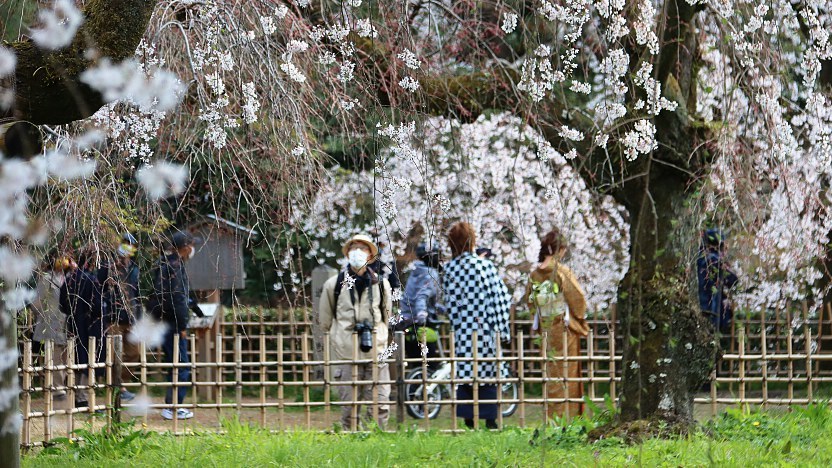
Part of a larger "Go To" campaign intended to restart the Japanese economy following the damage caused by the coronavirus , Go To Travel is a campaign by the national government that offers big discounts on travel inside Japan. Only residents of Japan (including foreign residents) are eligible to take advantage of the campaign.

What is Go To Travel?
- A 35 percent discount on the total cost and
- Coupons worth 15 percent of the total cost to be spent on other travel expenses during the trip
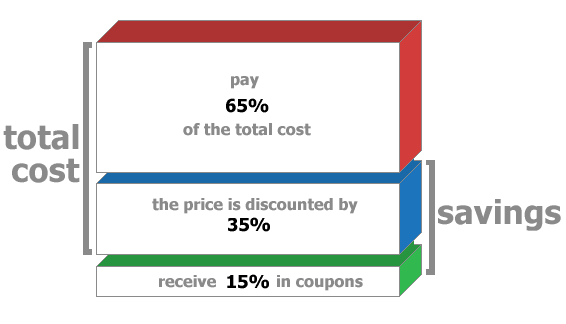
Is there an upper limit?
Yes, there is. The maximum discount that can be received for overnight trips is 13,000 yen per person and night, while the maximum amount of coupons that can be received is 7,000 yen per person and night. In other words, the upper limit applies to travel plans that cost more than 40,000 yen per person and night.
In case of daytrips , the travelers can receive a discount of up to 7,000 yen and coupons of up to 3,000 yen per trip.

Note that children are counted the same as adults. For example, a family of four with two kids can receive a discount of up to 52,000 yen (4 x 13,000 yen) and coupons of up to 28,000 yen (4 x 7,000 yen) on an overnight trip, even if the kids stay for free.
Furthermore, note that only up to seven nights per trip are covered by the campaign. On trips that are longer than eight days, travelers will not be able to profit from the campaign from the 8th night. Note that there is no limit on how many trips can be made during the campaign.
Who is eligible?
All residents of Japan, including foreign residents.
Can temporary visitors to Japan use the campaign?
No, only residents of Japan are eligible.
How long does the campaign last?
The campaign started in late July 2020, but was suspended in December 2020 due to rising coronavirus infection numbers. It is expected to resume once the infection numbers have decreased and continue until at least summer 2021.
Are there any other conditions for participating?
Yes, all participating travelers are requested to follow the "new travel etiquette" with regards to preventing the spread of the coronavirus on their trips. Please visit our page about coronavirus manners for more details.
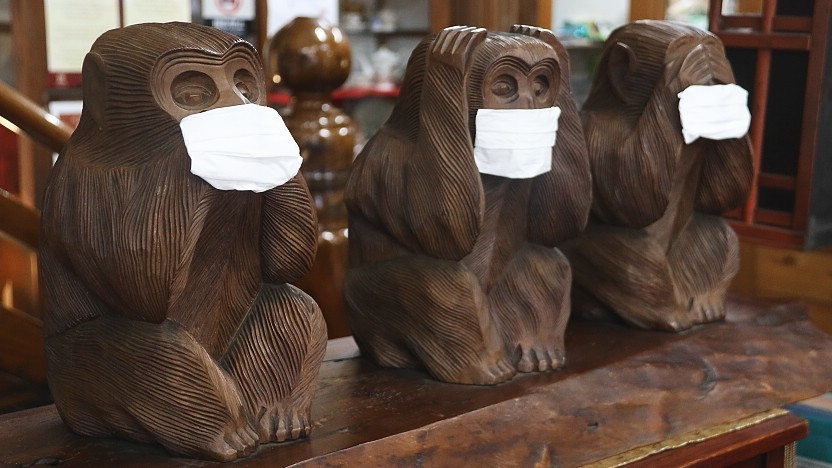
What is covered?
- Overnight stays at registered lodgings
- Travel plans purchased through registered travel agents
A large majority of hotels and travel agents across the country are registered. Lists of registered businesses are available on the campaign's official website .
Are all regions of Japan covered?
All regions of Japan are covered by the campaign. There is a possibility for some areas to be temporarily excluded from the campaign depending on the spread of the virus.
Does the campaign also apply to transportation, activities, meals and shopping?
The discount applies only if they are part of a travel plan. For example, the discount cannot be applied to regular purchases of flights or rental cars ; however, it does apply if a flight or rental car is part of a travel package sold through a registered travel agent. Likewise, if an activity or meal is part of the travel package, the campaign applies.
What type of daytrips are eligible?
The campaign applies only to daytrip travel packages sold by registered travel agents. The packages have to include 1) transport starting and ending at the same place on the same day and 2) at least some form of travel service besides transport in the destination area, e.g. meals or activities. For example, it does not cover 1-day bus tours that do not include any activities at the destination.
There is no limit on how many trips you can make during the campaign period. However, there is a limit of seven nights per trip that can be covered, meaning that those traveling for more than eight days are not able to profit from the campaign from the 8th night.
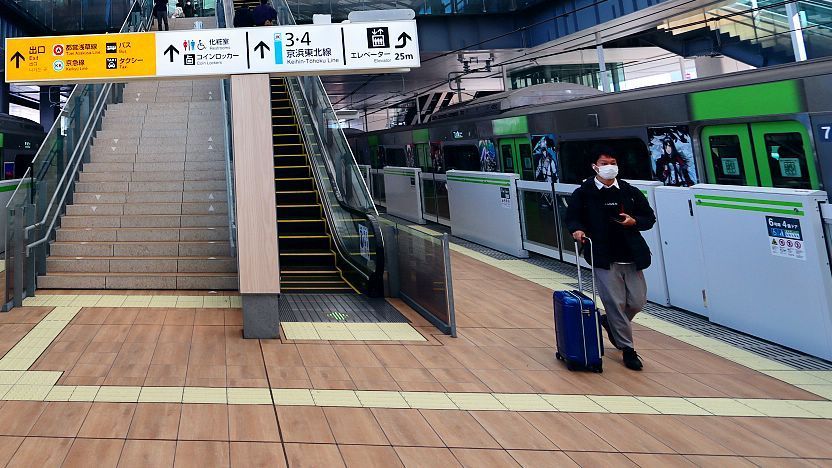
How can I use it?
There are mainly two ways to profit from the campaign:
- Book a stay at a registered hotel through the hotel, a travel agent or a reservation website that participates in the campaign.
- Purchase a travel package through a registered travel agent.
At the time of your booking, you pay 65% of the total cost for the accommodation or package, while the 15% in coupons will be issued to you by the travel agent or hotel.
A list of registered hotels and travel agents can be found in Japanese on the campaign's official website . Many hotel reservation websites are also participating in the Go To Travel campaign, including Booking.com and Agoda .
How do I use the coupons?
Coupons can be used to make payments at registered stores and restaurants and for transportation and other travel services in the prefecture visited and surrounding prefectures during the day(s) of your trip. They cannot be refunded. A map showing registered businesses can be found on the campaign's official website .
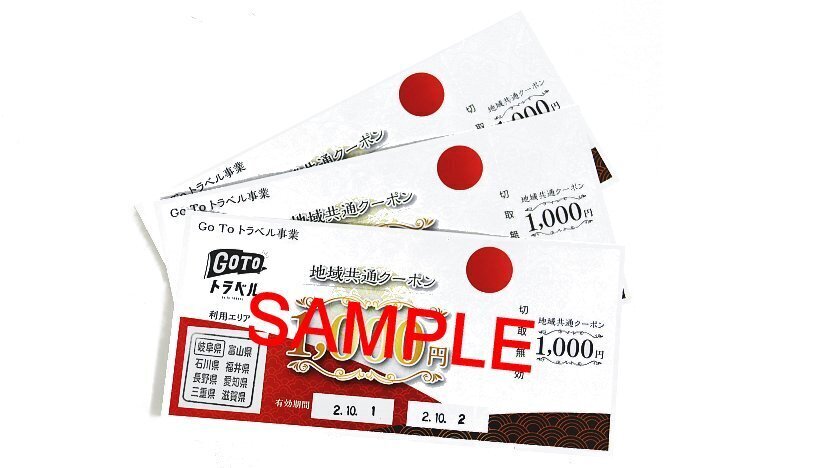
Links and Resources
Go to travel.

- Bahasa Melayu
- Bahasa Indonesia

Go To Travel Campaign Update! How It Works: A Basic Guide for Foreign Residents of Japan (July 2022)
The Go To Travel Campaign, launched on July 22, 2020, was promptly suspended only months later, on December 28. However, with the lifting of the quasi-state of emergency on March 21, 2022, there are hopes that the campaign will soon return. However, we still have yet to hear an official government announcement as of July 2022. As far as a Go To Travel revival goes, however, rather than put it into action all at once, the travel campaign will be seeing a more gradual start, beginning with the resumption of the Prefectural Residents' Discount program in March and the launch of a new travel subsidy, the Regional Block Discount. Many people have taken advantage of these during the long holiday in May, Golden Week. So, what exactly is the Go To Travel campaign? And when will it resume? What changes will take place? Also, what are the Prefectural Residents' Discount and Regional Block Discount programs all about? You've probably asked these questions yourself. In this article, we'll attempt to answer them! *Go To Travel renewal date still to be determined as of July 15, 2022. *Article based on information available as of July 15, 2022. main image:PIXTA
What is the Go To Travel Campaign?
Go to travel campaign renewal step one: prefectural residents' discounts, go to travel campaign renewal step two: regional block discounts, what we currently know about the pre-renewal go to travel campaign, vaccination and infection status in japan as of july 2022.

Go To Travel is a subsidy program initiated by the Japanese government to restore travel and promote tourism throughout Japan's various regions. The campaign's first phase began on July 22, 2020, and lasted until September 1, 2020. The second phase launched on October 1 of the same year, and caused quite a stir with the addition of Tokyo as an eligible region, after being excluded from phase one. The campaign, however, was promptly suspended by the end of the year in response to the fifth wave of Covid-19. Although an announcement on November 19, 2021, hinted at changes being made in preparation for the campaign's resumption, as of July 2022, there is still yet to be an official announcement of its start date. However, several steps have been implemented toward its revival. The Prefectural Residents' Discount, a regional travel subsidy implemented throughout each individual prefecture, was renewed in March of 2022. A new Block Discount has also been established, expanding the Prefectural Residents' Discount to regional blocks such as Tohoku, Kanto, and Kinki. The goal of these programs is to gradually take a 'soft landing approach' to curb infection rates. The movement is summarized below. Step-By-Step Plan Toward Go To Travel Campaign Renewal Step 1 Renewal of Prefectural Residents' Discount starting April 2022: For travel within the prefecture of residence and neighboring prefectures. Will resume sequentially for individual prefectures in areas where infection has been curbed. ↓ Step 2 Regional Block Discount starting April 2022: Until now, prefectural discounts have only applied to individual prefectures. This step will gradually expand that range to include 'regional blocks'. Regions will be divided into six blocks, including Hokkaido/Tohoku, Kanto, and Hokuriku Shinetsu/Chubu. ↓ Step 3 First half of July 2022 - Start of "National Travel Support" postponed: The country had been considering shifting from "Prefectural Residents' Discount" to a nationwide "National Travel Support" program to stimulate tourism demand, but this was postponed due to a rise in Covid cases. ↓ Step 4 Renewal of Go To Travel Campaign (*No official announcement as of July 2022) From the first half of July 2022, the country planned to commence its "National Travel Support" program (in Step 3) and see the completion of the "Prefectural Residents' Discount" for accommodation on July 14 (with check-out on July 15). Due to the recent rise in Covid cases, the Japan Tourism Agency decided to postpone the start of "National Travel Support" on July 14, opting to extend the "Prefectural Residents' Discount (Block Discount)" until August 31 (with check-out on September 1). However, the decision on whether to extend the period will be made on a prefecture-by-prefecture basis and officially announced. Prefectures that do not extend the program will suspend it at the current deadline of July 14 (for check-out on July 15).
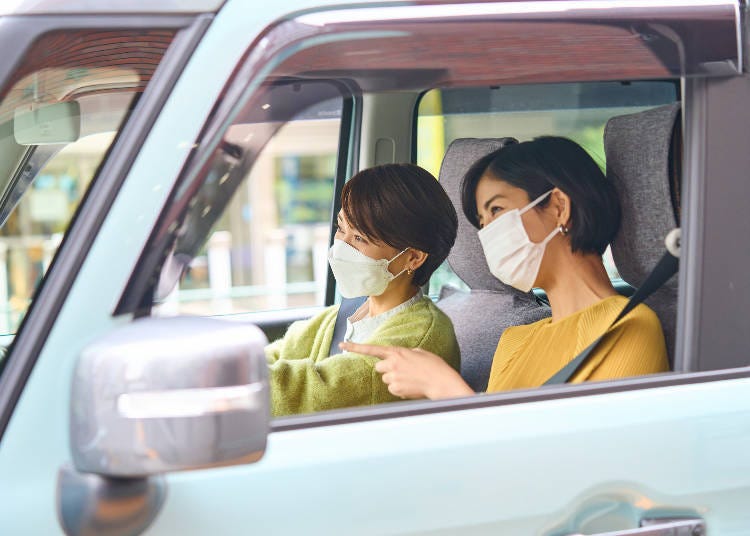
The Prefectural Residents' Discount in step one of the step-by-step plan will be put into effect until the resumption of the Go To Travel campaign. It includes travel discounts within the user's prefecture of residence and neighboring prefectures. Prefectural Residents' Discount Summary: ・Discounts of up to 5,000 yen per person per night, up to 50% of the original price. The same applies to day trips. ・Discounts up to 2,000 yen per person/night provided for souvenir shops , restaurants, and public transportation. The same applies to day trips. ・To be eligible for prefectural discounts, a user must have had both vaccines or a negative PCR test (test not required for children under 12 accompanied by a guardian). ・Prefectural discounts for accommodations until May 31, 2022. Not applicable during Golden Week (April 29-May 8, 2022). As an example, if you stay at an inn for 10,000 yen per person per night, you'll receive a discount of 5,000 yen. If you apply additional discounts at a value of up to 2,000 yen, you can save as much as 7,000 yen. The above are the basic conditions set by the Japan Tourism Agency. However, specific details on the system and content, including discount rates and vaccination requirements, may vary by municipality. Please be sure to check your local government's official website for accurate information.
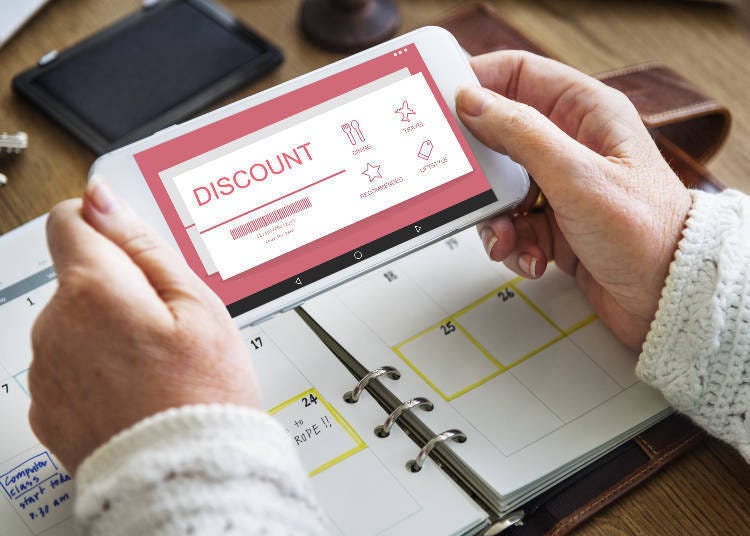
This program divides Japan into six regions. Discounts that were previously only available for travel within the same prefecture or neighboring prefectures will now apply to prefectures within the same regional block, which means a broader range of travel. The addition of applicable regions will be dependent on consent from each prefecture. For example, if Kanagawa Prefecture wants to attract Chiba residents, but does not obtain the consent of Chiba Prefecture , it will not be eligible for the Regional Block Discount. Application of Regional Block Discounts will be announced and commence according to each prefecture's ability to make adjustments. Regional Block Discount Summary: ・Regions are divided into the following six blocks. Please note that Yamanashi Prefecture is included in the Kanto Region, and Mie Prefecture is included in the Hokuriku Shinetsu/Chubu Region.
・Visitors residing outside the prefecture must meet vaccination requirements, such as having received up to three vaccinations, or receiving a negative PCR test. (Test not required for children under 12 if accompanied by a guardian). As with the Prefectural Residents' Discount, requirements such as vaccination status and other applicable conditions are determined by individual prefectures. Please visit the campaign homepage for each prefecture for more details. Note that for travel outside of the block, each municipality may have its own discount system, as well. Be sure to check the official website of each municipality for more information. For example, the city of Hakodate , Hokkaido, has its own ' Hakodate Wari,' a special discount that only applies to that city. Non-residents of Hakodate or other prefectures within that region may receive a 50% discount when spending a minimum of 3,000 yen per person per night at specified Hakodate accommodations (see terms and conditions for details).
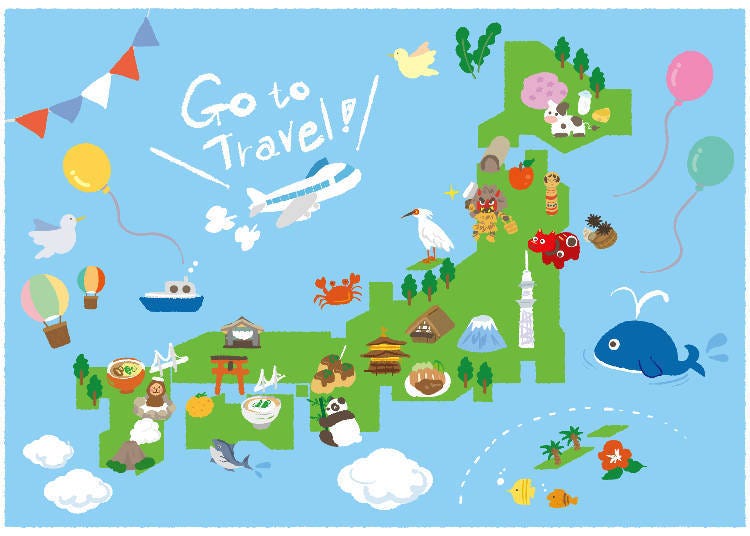
Finally, although the exact renewal date is still to be determined, let's take a look at what we currently know about the New Go To Travel Campaign, as announced on November 19, 2021. Discount Rates: 30% discount on accommodation and day trips for domestic travel (including group travel) Max Discount: (per night) Accommodation plus transportation: up to 10,000 yen / Accommodation only: up to 7,000 yen Max Discount: (day trip) Up to 3,000 yen Regional Common Coupon: (per night) Weekdays: 3,000 yen / Holidays: 1,000 yen Health & Safety Measures: Implementation of Vaccine-Test Package (*) / Report when testing positive within 2 weeks after travel / Record of travel history behavior The Vaccine-Test Package
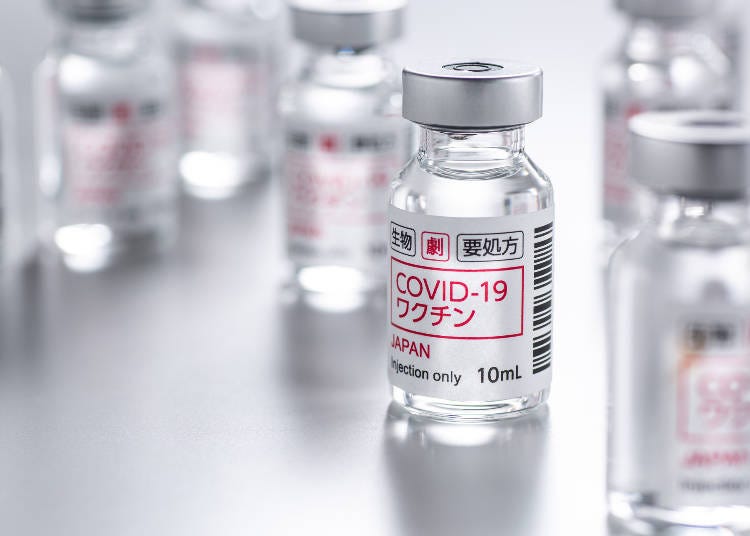
(*) The Vaccine-Test Package allows relaxed restrictions for travelers upon confirmation of either vaccination status or test results. ・Vaccination Status: Proof of receiving both vaccinations, with at least 14 days since the second vaccination. ・Test Results: Confirmation of negative test results of PCR test or rapid antigen test. Results are valid within 3 days from the sample collection date for PCR tests (or from the test date if the sample collection date is unknown), and within one day for rapid antigen tests.
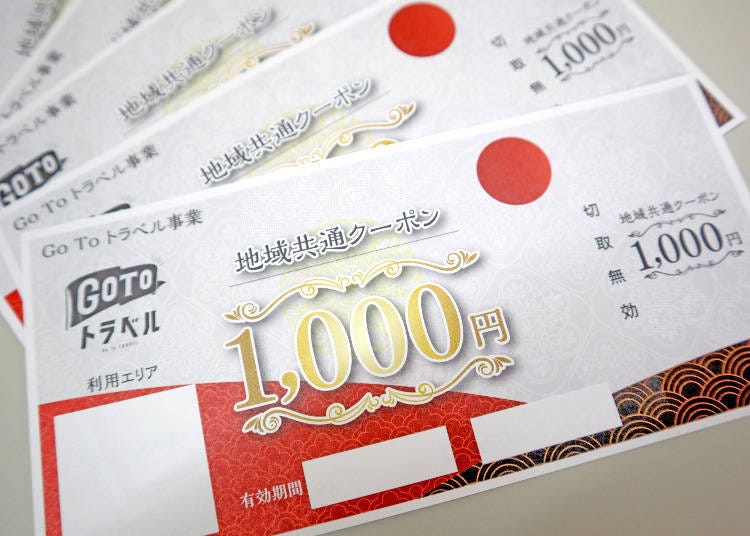
Content including discount rates and regional coupons revised from previous Go To Travel Campaign.
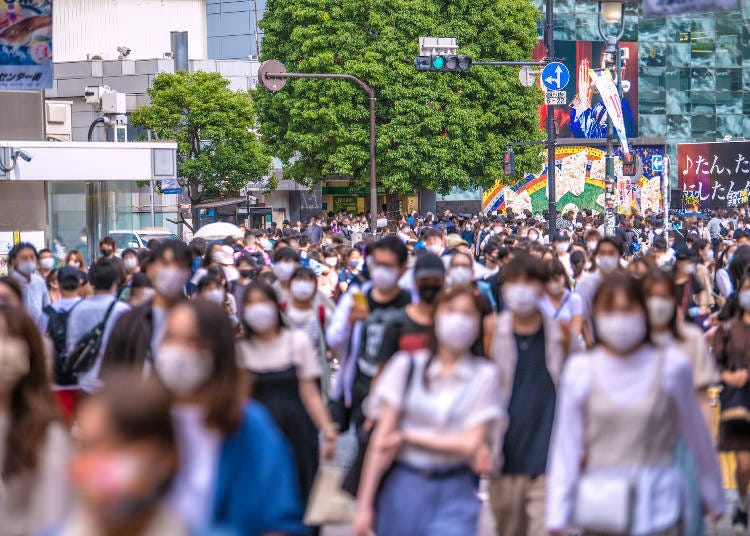
According to government data , as of July 14, 2022, 82.0% (103,796,378 people) of the population have received their first dose of the new Covid-19 vaccination, 80.9% (102,432,324 people) have received their second, and 62.3% (78,845,744 people) have received their third. However, although the Ministry of Health , Labor and Welfare has encouraged vaccination throughout the municipalities, they have not declared vaccinations mandatory for children in Japan due to evidence regarding preventive effects in children remaining uncertain. This is reflected in the numbers, showing 18.9% (1,402,011 children) have received their first vaccination, and 17.5% (1,299,419 children) have received their second.

After going through the preliminary steps of the Prefectural Residents' Discount and Regional Block Discounts, Japan may finally be able to proceed with the Go To Travel Campaign throughout the country. As of July 2022, the number of Covid cases in Japan has been increasing nationwide and is said to be in the seventh wave, and increased contact is expected to continue due to the summer vacation. There has been no official announcement from the government as to when the "Go To Travel" campaign will resume. Prime Minister Kishida announced at a press conference that the scope of coverage for the fourth vaccination will be expanded from the current 60 years and older to include healthcare workers and staff of elderly care facilities, and that vaccination will begin from the week of July 18 onward. He also stated that he is not considering any new restrictions on activities at this time, and that he intends to maintain a balance between socio-economic activities and mitigating the spread of infection. We can only hope that as people take advantage of these decentralized travel campaigns, each and every one will also continue to take thorough measurements to prevent the spread of the virus. *Article based on information available as of July 15, 2022. *Conditions and methods of use vary by prefecture. The information in this article may differ from actual information. Please check the Japan Tourism Agency and prefectural government websites for the latest information. *All photos for illustrative purposes only. Translated by: Krys Suzuki
Share this article.
Limited time offer: 10% discount coupons available now!
Recommended places for you.
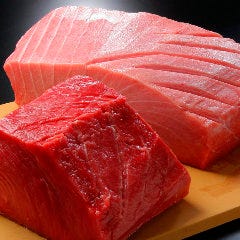
Kamesushi Sohonten
Umeda, Osaka Station, Kitashinchi

Yoshida Gennojo-Roho Kyoto Buddhist Altars
Nijo Castle, Kyoto Imperial Palace

Oirase River
Rivers, Lakes & Canyons
Other Surrounding Areas Of Aomori
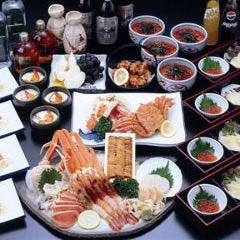
Rukku and Uohei
Sapporo / Chitose
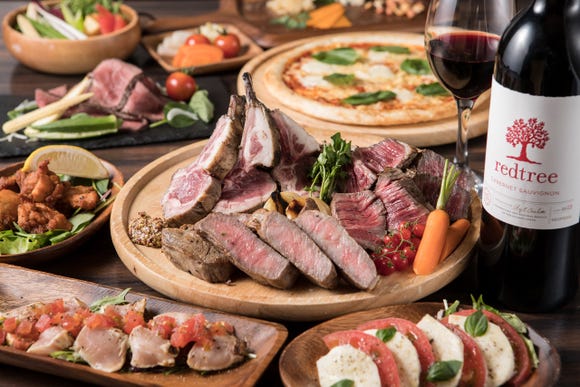
Jukuseiniku-to Namamottsuarera Nikubaru Italian Nikutaria Sannomiya
Kobe, Sannomiya, Kitano
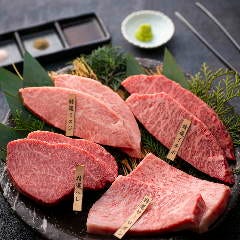
ISHIDAYA Hanare

A Complete Guide to the JR West Kansai Area Pass

15 Must-Try Sushi Restaurants in Tokyo (+5 Trending Areas to Explore for Foodies)

The Complete Guide to the Kintetsu Rail Pass

Step Into the Story: Inside Immersive Fort Tokyo

Opened in Spring 2024! What to do at Tokyu Plaza Harajuku Harakado

The CASIO S100: How CASIO's Masterpiece Calculator Redefines Business Elegance With Japan-Made Reliability
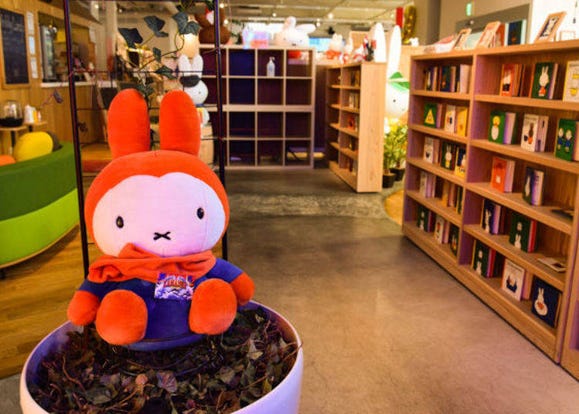
Visiting Japan's Miffy Cafe Will Make Your Heart Melt (Photos)

Where to Eat in Namba: 15 Must-Try Restaurants for Yakiniku, Fugu, Sushi, and the Latest Pop Ramen
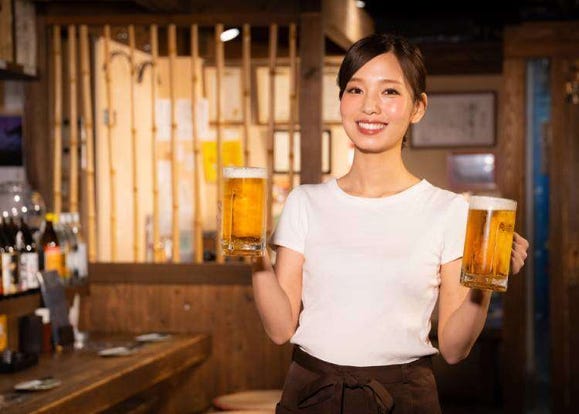
Experiencing Japan's 'Omotenashi' Craze: 9 Shocking Things About Japanese Customer Service
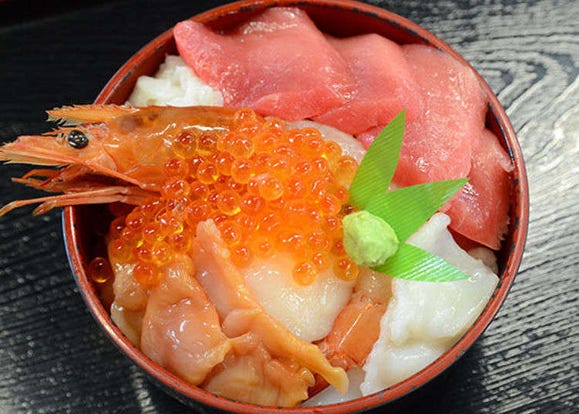
Seafood Bowls and More at the Shiogama Seafood Wholesale Market!
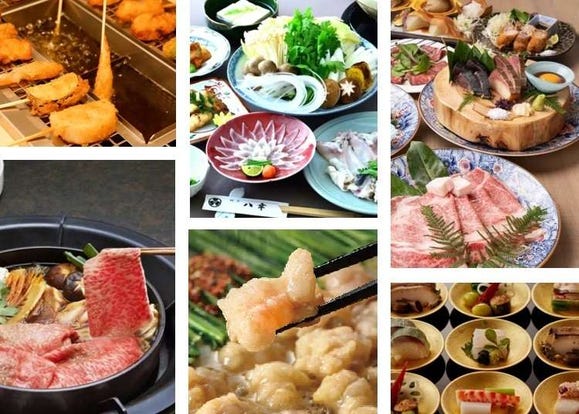
12 Must-Try Foods in Umeda: Popular Yakiniku to Cozy Izakayas - Your Ultimate Guide to Osaka Cuisine
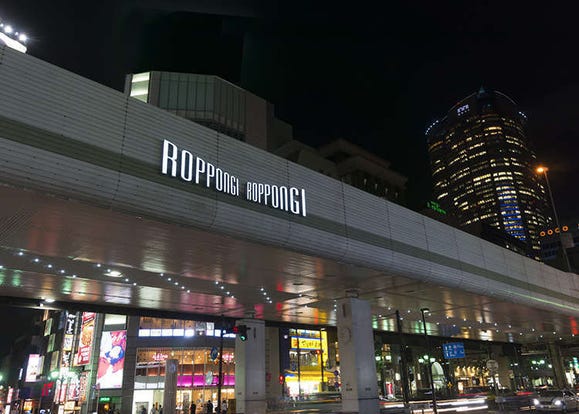
Tokyo Roppongi|Roppongi Station Area Map & Sightseeing Information
- #best sushi japan
- #what to do in odaiba
- #what to bring to japan
- #new years in tokyo
- #best ramen japan
- #what to buy in ameyoko
- #japanese nail trends
- #things to do japan
- #onsen tattoo friendly tokyo
- #best coffee japan
- #best japanese soft drinks
- #best yakiniku japan
- #japanese fashion culture
- #japanese convenience store snacks

News & Opinion
[UPDATE] Japan’s “Go To Travel” Campaign: What You Need to Know
The rumors, the facts and how to get discounted domestic holidays
July 13, 2020 Updated On December 15, 2020
[UPDATE] On December 14, the Japanese government announced that the “Go To Travel” campaign will be halted nationwide from December 28 to January 11 amid a surge in coronavirus cases across the country. Further decisions will be based on how the situation develops, Prime Minister Yoshihide Suga said.
Furthermore, Tokyo and Nagoya, two cities where infections have been rapidly spreading in the past couple of weeks, will be removed from the travel campaign, e ffective December 18. Inbound travel to Tokyo through the campaign will be halted and outbound travel discouraged until December 27.
Prior to this announcement, the only two cities that had been temporarily removed from the campaign were Osaka and Sapporo.
For those who have already booked a stay, cancelation fee will not be charged if canceled between December 14 and December 24.
Amid surging new coronavirus infections reported in Tokyo, torrential rain and floods that have claimed the lives of dozens of people in Kyushu (with many remaining missing) and massive event cancellations throughout the country due to the coronavirus, Japan’s government just announced its latest campaign that does the opposite of what you’d expect given the circumstances: it encourages people to travel, interact with locals in other prefectures and pretend that life is back to normal.
You read this correctly. The brand new “Go To Travel Campaign,” Japan’s latest initiative to save its economy from the grips of the pandemic — has been pushed (despite all odds) to start on July 22, approximately half a month earlier than planned. The reason? It needed to begin before the four-day weekend starting on July 23.
What is the “Go To Travel” campaign?
In April 2020, Japan suffered its most significant drop in foreign tourism. In that particular month, Japan welcomed only 2,900 international travelers, down 99.9% from the same time in 2019. It’s the first time since 1964 the monthly number of guests had dipped below 10,000. Domestic travel — while the nation was under the government-declared state of emergency — was practically nonexistent either. So, as you can imagine, Japan is itching to get people back on the road, in shops, restaurants and spending up big.
The problem is that, as of present, given its still shut borders, it can’t count on inbound tourism — which is why the government is pushing domestically.
After a month of waiting for clarification, the Minister of Land, Infrastructure, Transport Kazuyoshi Akaba announced in a meeting on July 10 that Japan would launch the initiative, their ¥1.7 billion “Go To Travel” campaign, at the end of this month.
Kicking off on July 22 and running until mid-March 2021 (or until all the money runs out), the campaign is a government initiative to help stimulate Japan’s post-Covid-19 economy, with a focus on the travel, hospitality and entertainment sectors. As a way to boost local businesses and industries significantly impacted by the pandemic, the government offers substantial discounts and subsidies for those looking to travel domestically.
The campaign will cover half of the applicants’ travel spending, with the subsidy capping at ¥20,000 per person per night, or ¥10,000 per person for single-day trips. To make the most of the campaign, travelers will have to spend ¥40,000 per night, with 50% paid by the traveler and 50% paid by the government.
Who is the campaign for?
The Go To Travel campaign is for those planning to travel domestically and is geared towards travel products that include accommodation and transportation, such as package tours (including day trips) booked through travel agencies and travel reservation sites or directly through a hotel’s website. Some travel agencies that are already selling packages include JTB, JTrip, Life Tour, IACE Travel and more.
Foreign travelers are, in theory, eligible for this campaign, given that they book their trip through a travel agency participating in the campaign — and that they can travel all the way to Japan, which may not be possible anytime soon. To add to that, as of present, the news and information about the campaign are still all in Japanese, so it’s fair to say that the campaign is not really targeting overseas travelers. At least for now.
The news confusion
In late May, while the early stages of the campaign idea were coming into formation, a rumor that the Japanese government would be paying for half or even more of the visitors’ expenses once borders opened again started to do the rounds both here in Japan and overseas.
The news was misreported but was published by a not insubstantial number of international news outlets, forcing The Japan Tourism Agency to release a statement and a series of tweets clarifying that the program would only cover “a portion of domestic travel expenses.” So, if you saw those reports and hadn’t seen any follow-ups, we’re sorry to inform you that the offer was indeed too good to be true.
What can you do with it?
The maximum subsidy will cover half of a person’s travel costs up to ¥20,000 per person per night, meaning that if a trip including travel, accommodation and other outside expenses cost ¥40,000 per day, the government will cover ¥20,000 maximum. Say your trip costs an average of ¥20,000 per day (before the discount), then the government will cover half, so you’ll only spend ¥10,000.
The delegation of the subsidies is broken up into two elements: travel charges and retail. Travel charges include travel expenses like transport tickets and accommodation. These make up 70% of the subsidy, meaning 70% of the potential ¥20,000 per day (¥14,000) has to go towards these expenses. The remaining 30% (maximum ¥6,000) will be awarded in the form of local coupons to be spent on things like souvenirs from the area.
Initially, reports claimed those who booked a trip before the campaign announcement wouldn’t qualify for the subsidy. But, to keep it fair, the deal will now also apply to those travelers who can retroactively receive the discount. Given that this is a government initiative, of course, this means that travelers will have to go through the process of filling in an application form, providing proof of stay at a hotel during the campaign period, attach a receipt for their expenses and a consent on the use of personal information. Details of how to apply are still in the works, but there have been promises that the refund of the discount will be paid by credit card or bank transfer. Worth the ordeal? Probably not, but that’s another issue.
How to get the discounts and what are the conditions
To take full advantage of the subsidy, travelers must make their bookings through a campaign registered travel agency or directly through an accommodation booking website. This rule has been somewhat controversial. Some argue that by booking through an agency, smaller, independent businesses and those that lack a booking site on their own — like family-run ryokans — may miss out on cashing in on the benefits, as major players in the industry like JTB sit at the forefront of the campaign and are set to profit big.
Beyond the travel agency stipulation, surprisingly, the terms and conditions on the deal are few. There’s no limit to the number of times you can take advantage of the campaign, meaning you can take as many subsidized trips as you like, plus there’s no limit to the number of consecutive nights at the destination. However, some conditions do apply to personal travel arrangements: say, if you book your accommodation and transport separately, then the half-price subsidy will only apply to the accommodation arrangements.
More information on the delegated agencies and the government’s other similar ‘Go To’ campaigns like Go To Eat and Go To Shop is set to be released in the coming weeks, though rumors are that the Go To Eat campaign will benefit users with up to 20 percent discounts and/or discounts of up to ¥1,000 for people booking restaurants via online restaurant booking sites.
For more information on the Go To Travel Campaign, see here .
Related Posts

Two Charred Bodies Found in Nasu and Japan’s Dual Custody Bill | News Roundup

Snake on a Shinkansen Delays Service by 17 Minutes

Tokyo Governor Koike Accused of Lying About University Degree

CDawgVA Raises Over $1 Million for Charity During Cyclethon 3

Tara: A Mystical Oceanside Town Where You Can Feel the Moon’s Power

Super Delivery International: Bringing Japan to Your Door

Stay in Style at DoubleTree by Hilton Kyoto Station

A Culinary Wonderland in Hyogo Prefecture

Japan go-to travel campaign | Japan Domestic Travel Subsidy Program
by Venese | Jun 1, 2022 | Japan Travel | 0 comments

Have you heard of the Japan go-to travel campaign? Are you wondering how to use the latest Japan Domestic Travel Subsidy Program and want some inspiration for your next domestic travel?
Here is everything you need to know about Japan Domestic Subsidy Program and Japan Go-To Travel Campaign!
Table of Contents
Japan Domestic Travel Subsidy campaign overview
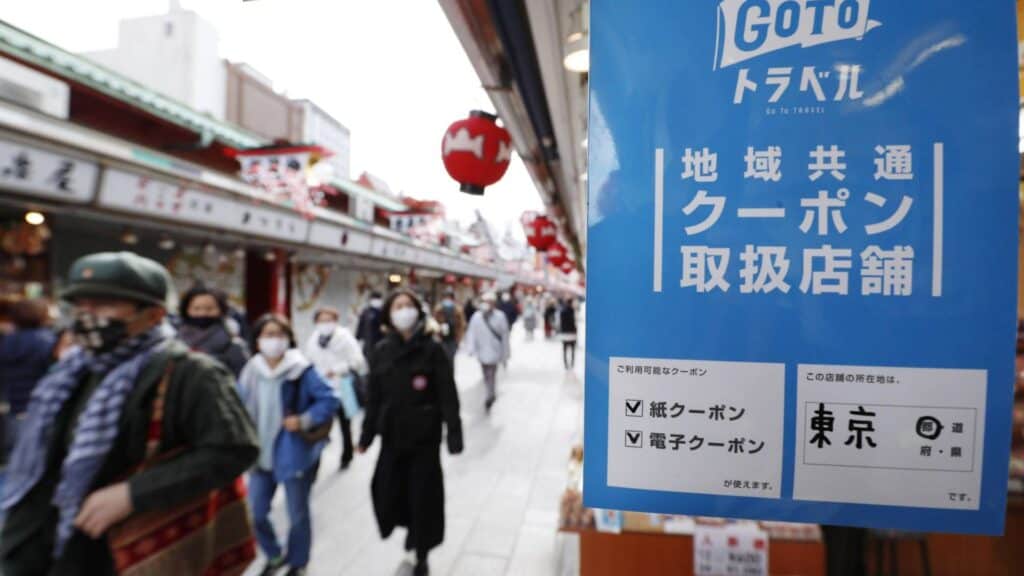
The Japan Domestic Travel Subsidy Program is a “nationwide tourism demand stimulation measure” that offers discounts on travel prices and grants regional vouchers.
Unlike GoTo Travel, which was a national collective initiative, the Japan Domestic Travel Subsity is organised on a prefecture-by-prefecture basis.
Therefore, the start date can also be after 11 October, starting with those prefectures that are ready.
The end date is also set for the end of December (most prefectures have set to end on 20 December), but it is up to each prefecture to decide whether or not to extend the date.
Please note that some of the contents may differ from prefecture to prefecture.
Japan Domestic Travel Subsidy campaign discounts
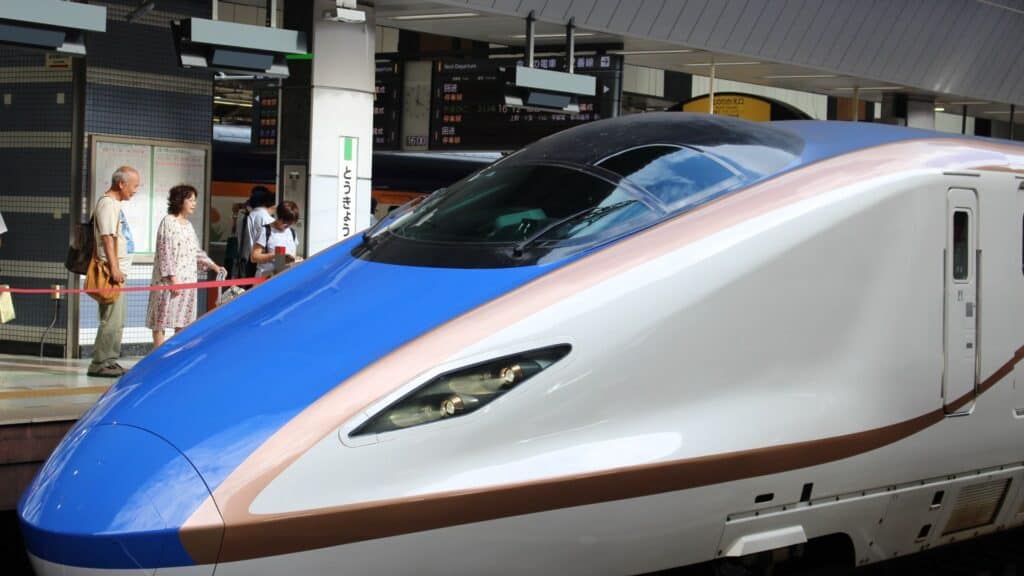
The discount is 40% off the price of a trip (maximum per person per night: 8,000 yen for overnight travel with transport, 5,000 yen for others).
Along with this, you will receive a regional voucher worth 3,000yen for weekday use and 1,000yen for holiday use. These regional vouchers can be used at restaurants and other local businesses in the travel destination.
For day trips, you can get 40% off with maximum 5,000 yen support per person, along with regional voucher for 3,000yen for weekdays and 1,000yen for weekends.
The discount is valid for up to seven consecutive nights per trip, with no limit on the number of times the campaign can be used.
Duration of Go-to Travel Campaign
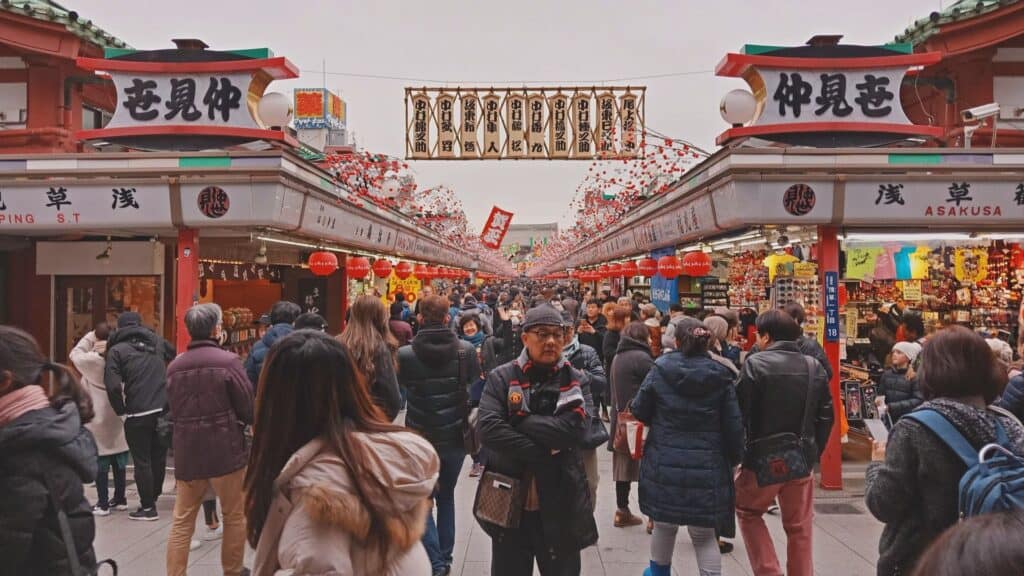
The programme will be implemented from 11th October to 20th December 2022 (starting 20 October for Tokyo). After the new year, the decision on whether or not it will be continued will be based on the infection situation and demand trends.
Holiday vs Weekday
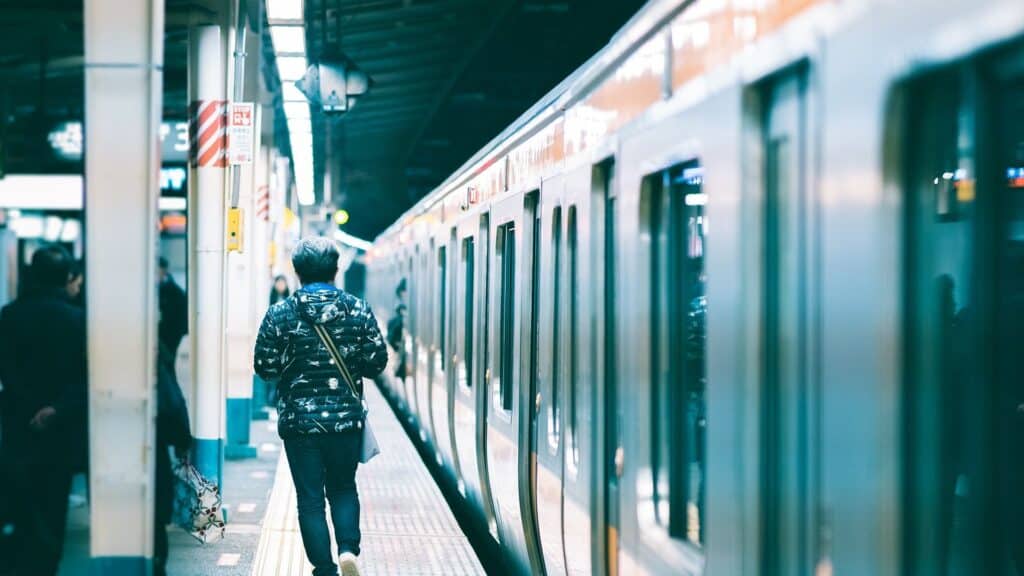
“Holiday” applies to overnight trips where both the day of the overnight stay and the following day are Saturday, Sunday or public holiday. Holidays for day trips are Saturdays, Sundays and public holidays. Other days are treated as ‘weekdays’.
What do I need to bring for Go-to Travel Campaign?

In order to qualify for the discount, make sure to bring your identification documents such as a driver’s licence. You also need to present proof of three previous vaccinations (an image or a photocopy is acceptable) or a negative result of a PCR test or similar test is required.
How do I make a reservation for Go-to Travel Campaign?
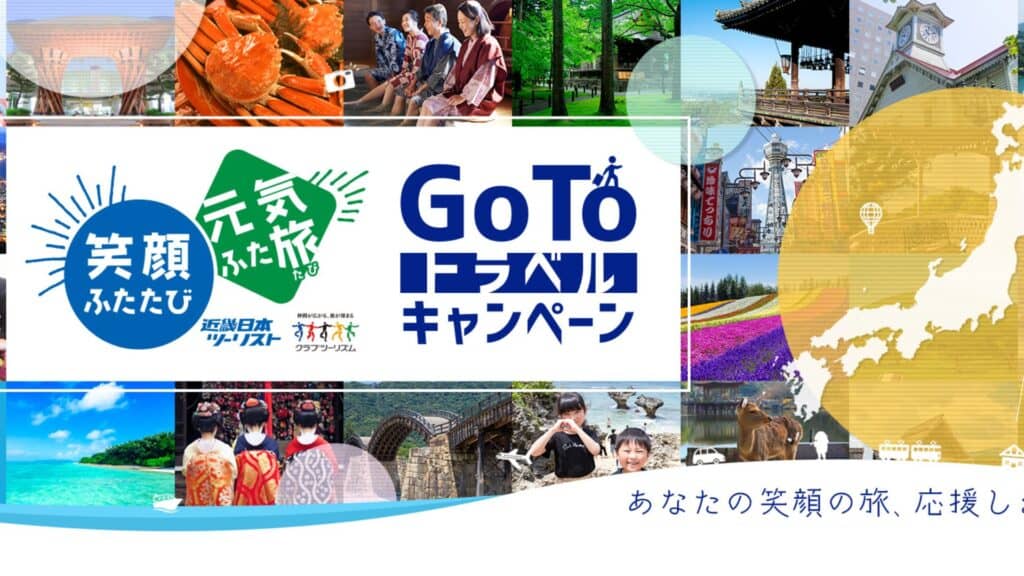
To use the campaign and make a reservation, apply for a trip at a discount price through one of the following travel booking websites participating in the campaign, such as Rakuten Travel, a travel agency, or an accommodation facility.
Upon presentation of identification documents and proof of vaccination at the time of accommodation, the customer will receive a regional voucher.
Here are the websites where you can make reservations. Please note that this is subject to change. Please refer to the following websites for the most up-to-date information.
- Jalan: https://www.jalan.net/ryoko-shien
- Rakuten Travel: https://travel.rakuten.co.jp/special/zenkokuryokoshien/
- Yahoo: https://travel.yahoo.co.jp/feature/zenkoku-ryoko-shien/
- Ikkyu: https://www.ikyu.com/special/01/zenkoku-ryokoshien/
- JTB: https://www.jtb.co.jp/kokunai/ryokoshien/webcoupon/
- Rurupu: https://www.rurubu.travel/theme/gototravel/ryokoshien/
- NTA: https://www.nta.co.jp/kokunai/special/ouen/ryokoshien/
- JAL PAK: https://www.jal.co.jp/jp/ja/domtour/areatourism-cp/
- HIS: https://www.his-j.com/kokunai/campaign/alljapan_plan/
Old vs New Go-to Travel Campaign
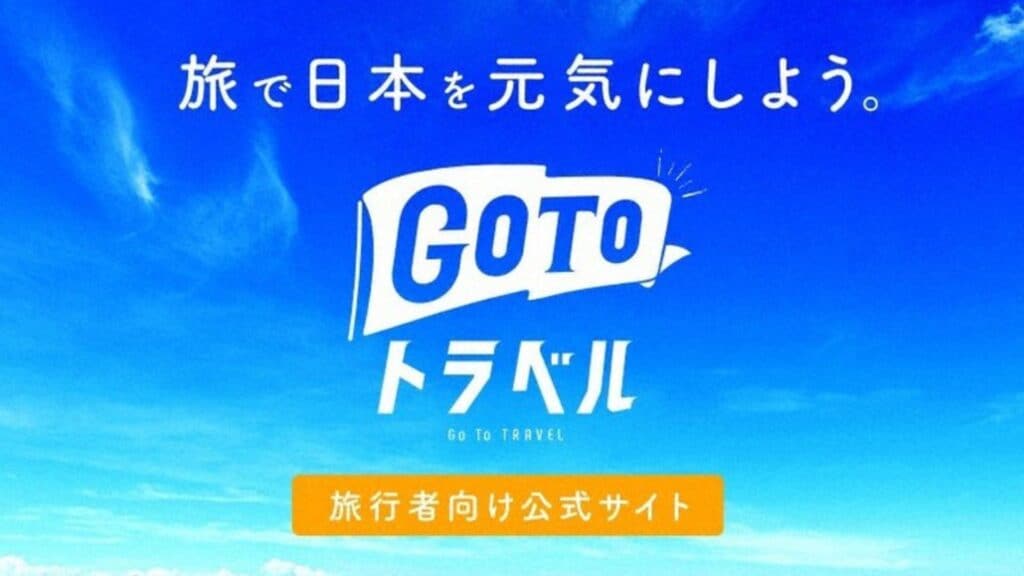
In the past, for Go-To Travel, half of the trip price was subsidised up to JPY 20,000 per person per night (35% travel discount + 15% common regional voucher), and the high discount limit made it popular with expensive accommodation.
It was also pointed out that tourist attractions were crowded on weekends and consecutive holidays. There were talks that the increased human traffic may have contributed to the spread of infection.
Because of these issues, even before taking office, Prime Minister Kishida had launched Go-To 2.0, an evolved approach to infectious disease control, and decided to utilise the vaccine and testing package. The new system was based on the premise of safety and security, with a difference in discount rates between holidays and weekdays to disperse travel demand.
The discount rate and maximum discount amount have also been reduced to avoid concentration on luxury accommodation, and discounts are more generous when using transport operators, to support the recovery of tourism demand from transport operators and rural areas.
5 Most popular holiday destinations in 2022

So now the question is, where should you go with the Japan Domestic Travel Subsidy?
You might want to make use of this discount to visit places that you haven’t had a chance to check out yet or discover places that you have never heard of. Maybe some places might have been a little out of your budget and now with the discount, you want to make use of this opportunity.
To help you figure out where to go, here are the 5 most popular holiday spots in 2021 to give you some inspiration for your domestic travel! The statics you can find here are taken from Rakuten Travel.
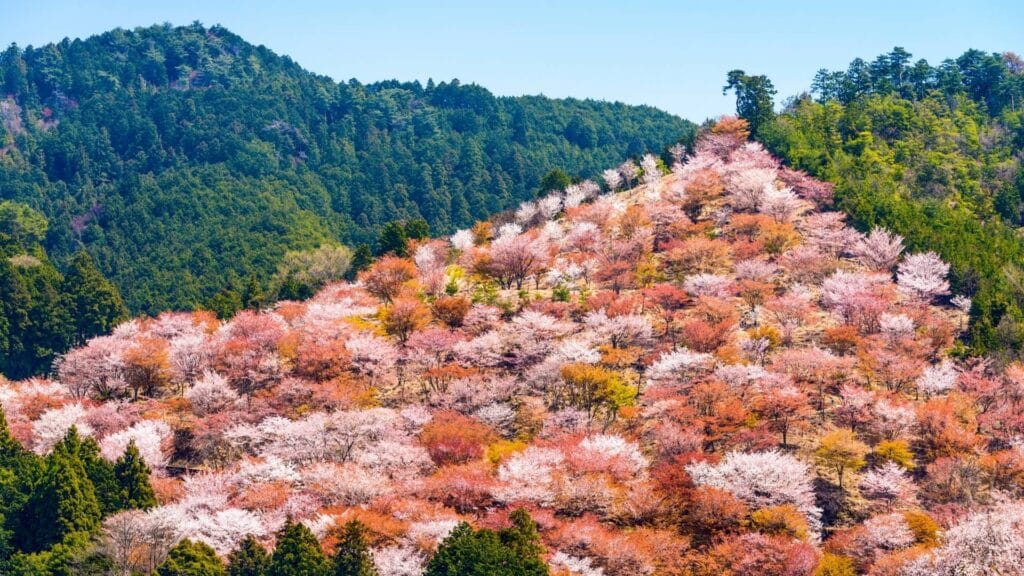
The first place was Nara prefecture travel became popular with + 235.6% compared to the previous year. In particular, the “Yoshino / Totsukawa / Tenkawa / Gojo area”, which is rich in nature and allows you to enjoy outdoor leisure activities that avoid dense mountains and rivers, increased by + 536.8% (about 6.4 times).
In addition, as a sacred place for the popular manga “Kimetsu no Yaiba”, “Katsuraki Nii Honoikazuchi Shrine <Fuefuki Shrine>” in Katsuragi City is a new tourist spot.
Nara Prefecture is the ancient centre of Japan and was the ancient capital of Heijokyo during the Nara period. Therefore, there are many buildings and Buddhist statues designated as national treasures and world cultural heritage, and there are various attractions.
The deer in Nara Park is also known nationwide. Some of the most spectacular spots are the Tanize Suspension Bridge and the Mitarai Valley, which are one of the longest in Japan.
Tokushima
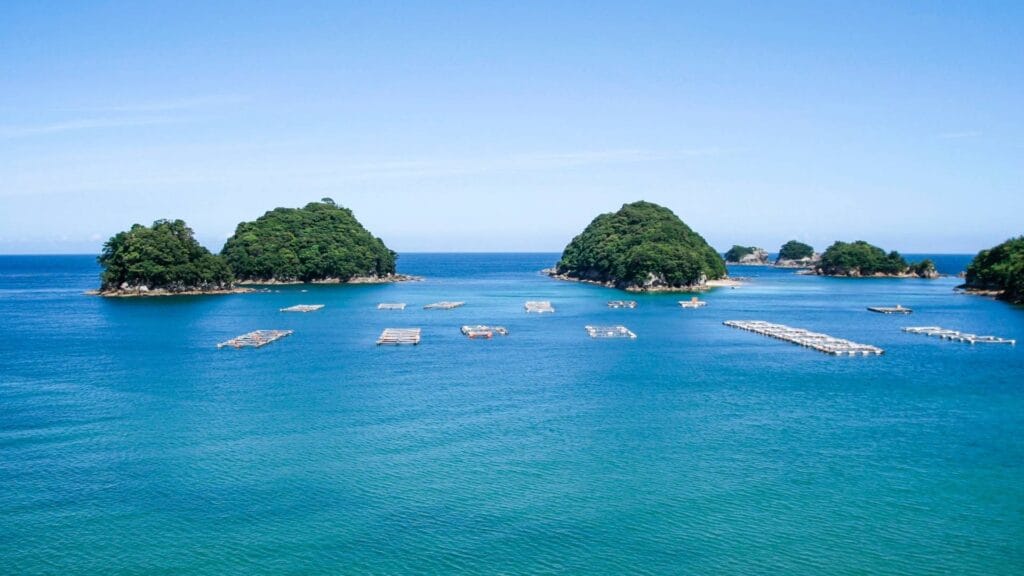
Tokushima Prefecture is in second place with a year-on-year increase of 151.3%. By age group, the number of people in their 20s to 30s has increased to + 194.7% (about 2.9 times), and the demand for travel within the prefecture among young people is increasing.
Tokushima Prefecture is full of individuality, with more than a quarter of the 88 sacred sites “Shikoku 88 places” scattered throughout Shikoku, such as “Naruto Whirlpools” and “Awaodori Kaikan”. The highlights are complete.
If you climb the mountaintop from the 5th floor of the Awaodori Kaikan on the “Mt. If you want to experience a mysterious sight, we also recommend the “Abashi / Unkai Observatory”, which is more likely to appear in the early morning of March-April and October-December.
From the observatory, you can overlook Oboke and the Yoshino River, which are known for their beauty in the valley, when there is no sea of clouds.

Akita Prefecture is in third place with a year-on-year increase of 105.5%. By accommodation composition, “Children” travel increased the most at + 411.2% (about 5.1 times), and the number of nights for families increased.
Akita Prefecture has many important intangible folk cultural properties such as the Oga Peninsula’s quirky “Namahage” and the Three Great Festivals of Tohoku, the Kanto Festival.
Events that colour the four seasons are also famous, such as the “Kakukan Sakura Festival” in the spring, the “Omagari Fireworks (National Fireworks Festival)” in the summer, and the “Yokote Kamakura” in the winter.
At Lake Tazawa, the deepest lake in Japan, the legend of Princess Tatsuko remains, and there is Gozanoishi Shrine, which is also known as a power spot, and is dotted with activities and sightseeing spots. In addition, Akita’s famous “Oyu Stone Circles” and “Isedōtai Site”, which are included in the “Hokkaido / Northeastern Jomon Archaeological Sites” are expected to be registered as World Cultural Heritage in July. Isedotai Seki) ”is also attracting attention.
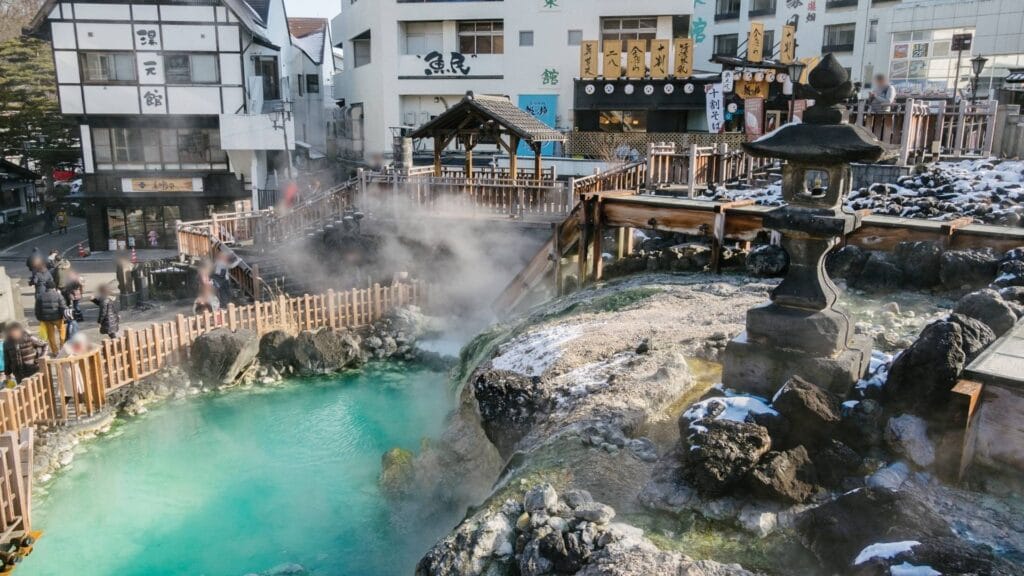
Gunma Prefecture is in fourth place with a year-on-year increase of 98.2%. There are scenic spots such as “Oze”, “Fukiwari Waterfall” and “Tone River”, and it is an area where you can enjoy many high-quality hot springs such as “Kusatsu”, “Ikaho”, “Minakami” and “Shiman” as one of Japan’s leading hot spring kingdoms.
There are historical and railway fans’ must-see tourist spots such as the world heritage “Tomioka Thread Mill”, the “Megane Bridge” which is the site of the Abt system railway, and the “Watarase Valley Railway” where the trolley train runs, and it is one of the best power spots in the Kanto region.
There are many attractions such as the famous “Haruna Shrine”. In October 2020, leisure spots that make full use of the latest video technology, such as the experience-based edutainment facility “ENNICHI by 1 → 10 AQERU Maebashi,” were born.
Okinawa
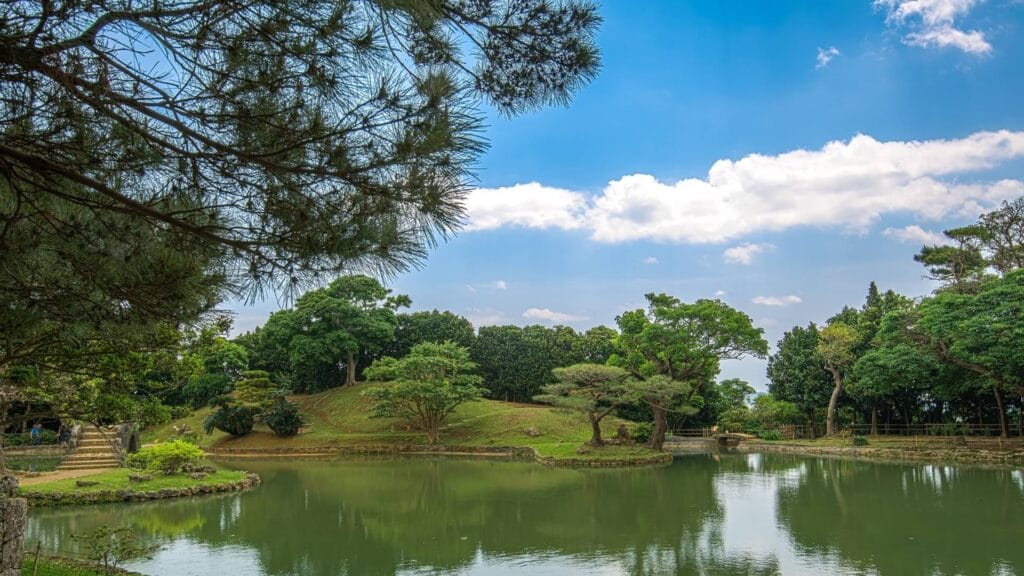
The fifth place is Okinawa Prefecture (+ 95.3% compared to the previous year) where you can enjoy a tropical vacation with many spectacular beaches. Many hotels have plenty of sea activities and a variety of pools. In recent years, large resort hotels, villas, and condominium inns have opened one after another. Some luxury inns have private beaches and private pools.
The “Okinawa Churaumi Aquarium” is famous nationwide, including the Ryukyu Kingdom-related ruins such as the world heritage sites “Shuri Castle” and “Nakagusuku Castle Ruins”. “Mihama Town Resort American Village” is dotted with wall art and fashionable cafes that you will want to upload to SNS, so you can enjoy it in a different way. In addition, remote islands such as Miyakojima and Ishigakijima are not to be missed and are tourist attractions.
Japan go-to travel campaign 2020
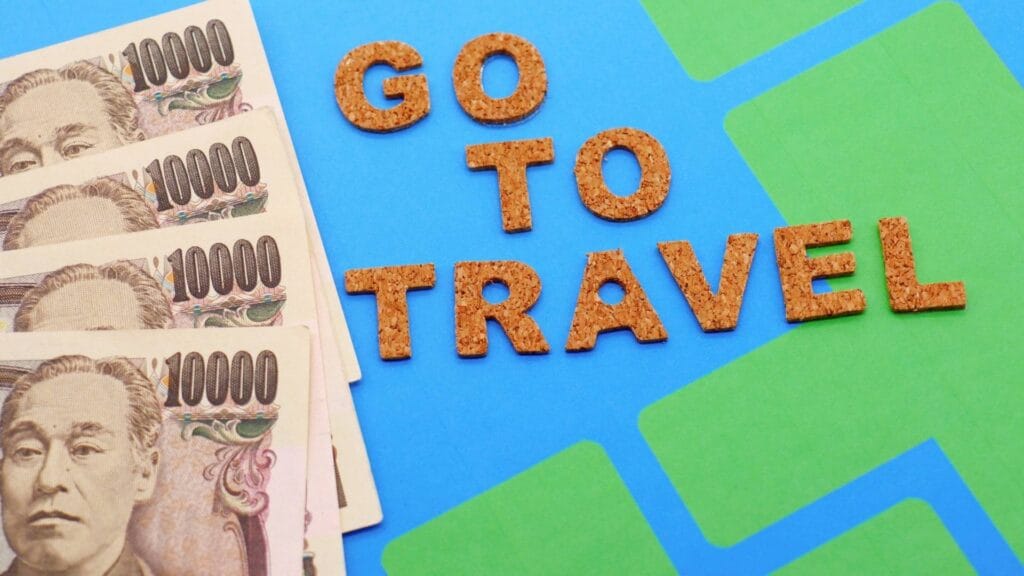
The Japanese government has proposed a number of steps under the name of a nationwide ‘Go To’ campaign aimed at increasing travel within Japan and supporting local businesses in reaction to COVID-19’s unprecedented impact on tourism.
The Japan Go-To Travel Campaign began on July 22nd, 2020, and offers Japanese citizens and international residents discounts and subsidies of up to 50% on travel within Japan. Discounts are given in the form of subsidised lodging and ‘common coupons,’ which can be used at participating retailers, restaurants, and other locations.
Japan Go-To Travel Campaign is a travel campaign that aims to promote and encourage travel and tourism in Japan. Japan Go-To Travel is a government campaign that aims to increase the number of tourists visiting Japan by increasing awareness of the country through social media, such as Twitter and Instagram.
Japan’s Go-To Travel campaign was started in 2018 by the Ministry of Land, Infrastructure, Transport and Tourism (MLIT) Japan with the aim of increasing tourist visits to Japan. The Japanese Prime Minister, Fumio Kishida announced in March 2022 that the government is planning to relaunch the “Go-To Travel” campaign “when the opportune moment comes.”
According to Kishida, the government is looking into the COVID-19 infection situation and meeting with specialists to determine when the campaign should resume. This page will be updated as soon as an announcement is made. Until then, we’ll go over the last COVID-19 campaign to see what’s in store for the months ahead.
From July 22nd, 2020, the government will cover up to half of the cost of accommodation and transportation for 1-day trips up to JPY10,000 per person and 2. overnight trips up to JPY20,000 per person. Trips of up to seven days in length had been covered. The amount you are entitled to on an overnight trip is based on the cost of your lodging, with a maximum claim of JPY20,000 per person. This is what that support looks like:
70% will be provided through reduced accommodation; 30% will be made available through the usage of ‘common vouchers.’
News on Japan Go-To Travel Campaign 2020

As of this, the Japan Go-To Travel Campaign will not proceed until the level of Corona is safe enough to travel with minimal spread. The tourism minister Tetsuo Saito stated, “We’re not at a point where we can announce a specific date for resuming the campaign, we’re in a situation where we should assume that the spread of (the coronavirus) will proceed rapidly.”
However, some travel companies and booking sites are considering resuming the Japan Japan Go-To Travel Campaign, and are planning to offer discounts for currently booked and newly booked vacations after the decision are made.
When it is agreed to restart the Japan Go-To Travel Campaign, for example, JTB and HIS will contact the target passengers individually via email, and if they agree to the participation criteria, the discount will be applied as is. Similarly, Rakuten Travel, Ikyu.com, and others have stated that the discount will be applied later without the need to rebook the trip.
How does the Japan Go-To Travel Campaign work?
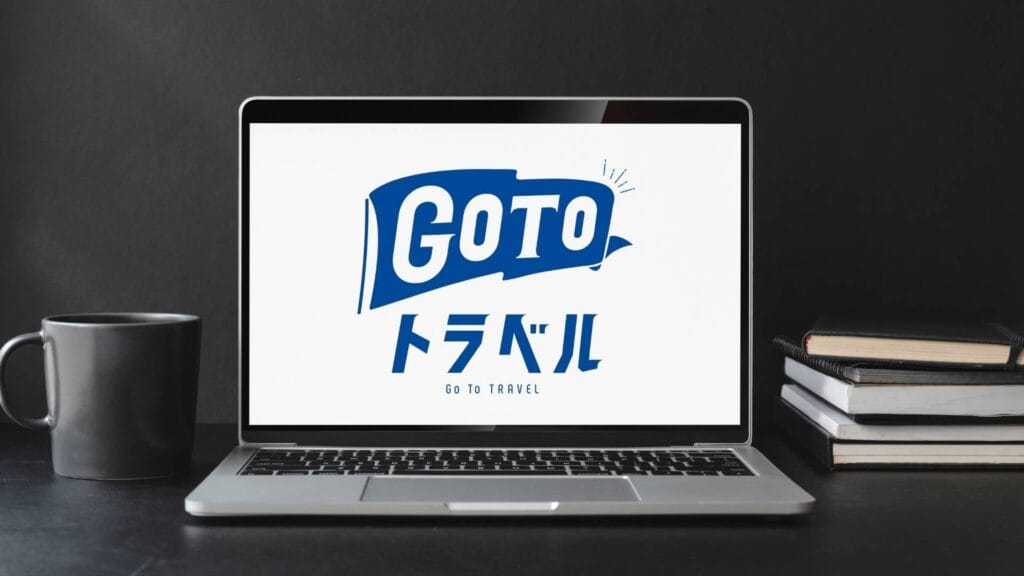
Travellers can apply through participating travel agents, online reservation sites, and lodging companies. Up to 30% of the travel fee will be decreased, and a “regional common coupon” (3,000 yen on weekdays and 1,000 yen on holidays) will be issued that may be used at registered member stores of travel destinations, as well as the entire tourist destination.
For Go To travel, the “Regional Common Coupon” will provide 15% off the ticket price. Paper coupons and electronic coupons are the two types of coupons available. Each voucher is issued in 1,000 yen increments and cannot be changed. The method of distribution is determined by the operator who booked the trip.
What kinds of trips are eligible for the Japan Go-To Travel Campaign?
All sorts of trips from long weekends to day trips.
What does the Japan Go-To Travel Campaign cover?
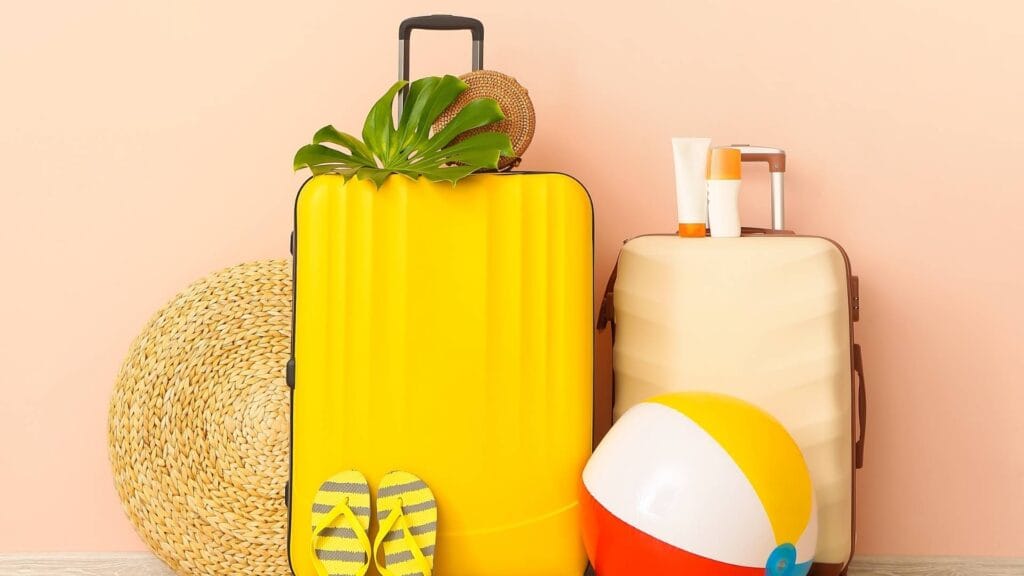
The Go-To-Travel Campaign covers all forms of trips including accommodation, transportation, food and goods and services which include excursions.
How to use Japan Go-To Travel Campaign

The official Japan Go-To Travel information states that the campaign is available for all residents of Japan, both Japanese citizens and foreign residents with valid visas.
Overnight stays at registered lodgings, trip arrangements made through registered travel agencies are all eligible for discounts, and the vast majority of hotels and travel agents across the country are registered.
The official website of the Japan Go-To Travel campaign has a list of associated businesses. The campaign is active in all of Japan’s regions. Depending on the development of the virus, some places may be temporarily excluded from participating in the campaign. Only if they are part of a trip package are they eligible for the discount.
The discount, for example, cannot be used on standard purchases of flights or rental cars; however, it can be used on flights or rental cars that are part of a vacation package booked through an authorised travel agent.
How to apply for the Go-To Travel Campaign

In order to apply for the campaign, you have to reserve your desired trip through a campaign-registered hotel using the hotel, a travel agent, or a reservation website. On the other hand, you can purchase a vacation package from a registered travel agent.
You pay 65 percent of the total cost of the lodging or package at the time of booking, with the remaining 15 percent in coupons supplied by the travel agent or hotel.
On the campaign’s official website, a list of registered hotels and travel brokers may be seen in Japanese. Many hotel reservation companies, such as Booking.com and Agoda, are also participating in the Japan Go-To Travel campaign.
The discount is not only good for lodging, but also for overnight transportation such as a cruise ship, an overnight ferry, or a sleeper train, for which you might receive a discount. The campaign will pay for your transportation, meals, and activities if you choose to go on a day trip.
How to use Go To Travel Coupons
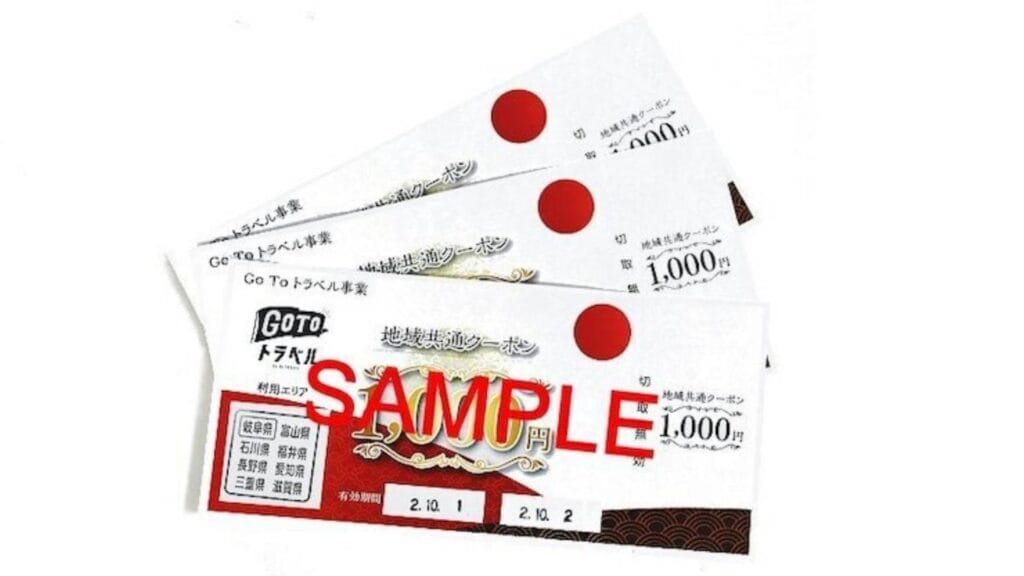
During the day(s) of your journey, coupons can be used to pay for goods and services at registered stores and restaurants, as well as transportation and other travel services in the prefecture visited and nearby prefectures. Please note that they are non-refundable. The campaign’s official website includes a list of registered businesses.
Coupons are issued in either paper or electronic form, depending on the issuing agent (to be used with a mobile device). Coupons are provided in 1000 yen increments, with the amount adjusted up or down to the closest 1000 yen (500 and more is rounded up; less than 500 is rounded down).
What do you think about the Japan go-to travel campaign? Hope you find this guide helpful to help you figure out exactly what is Japan go-to travel campaign, how to use it and some inspiration on where to go!
Submit a Comment Cancel reply
Your email address will not be published. Required fields are marked *
Save my name, email, and website in this browser for the next time I comment.
Recent Posts
- The Best Japan Internet Access Options: Budget SIM Card Versus Pocket WiFi
- 29 Best Summer Destinations in Japan
- Top Places to Visit in Japan in June: Revealing 15 Must-See Destinations
- One Night in Tokyo: Insider Tips for an Epic Mini Adventure
- 17 Spine-Chilling Haunted Places in Japan to Discover
Recent Comments
- Tere Bellido on Autumn in Japan: 60+ Spots to Enjoy Autumn Leaves (Koyo) from September to December
- Vijay Singh on Ultimate guide to Zamami Island in Okinawa: What to do and hidden gems
- Lori on Overnight & Weekend Trip Ideas from Tokyo
- Robie on How much does it cost to live in Japan? You might be surprised
- Sidney Johnson on How much does it cost to live in Japan? You might be surprised
- Things to Do
- Food & Drink
- Shopping & Style
- Coca-Cola Foodmarks
- Restaurants & Cafes
- Music & Nightlife
- Neighborhoods
- Los Angeles

Everything you need to know about Japan's Go to Travel campaign
The travel subsidy offers up to 50 percent discounts on domestic trips – here's how to enjoy this great deal

[Update, December 12] The Go to Travel campaign has been suspended in Tokyo from Friday December 18, and nationwide over the New Year holidays from December 28 until January 11.
In this age of Covid-19 coronavirus , the world isn’t exactly our oyster. Although Japan’s sweeping entry ban is still in place, those of us already here are being encouraged to explore our own backyard and see everything the country has to offer.
To promote domestic travel and to help boost local businesses, the Japanese government has set up the Go to Travel campaign , which provides residents with subsidies of up to 50 percent on transportation, hotels, restaurants, tourist attractions and shopping, all within Japan.
Effective October 1, Tokyo is now included in the campaign, so those travelling to and from the capital are now eligible for the discounts.
Most of the information on the Go to Travel campaign is in Japanese , so we’ve compiled all the key details on this remarkable travel deal.
These details are subject to change – this is a developing story and will be updated as more information becomes available.
Recommended: How to go out safely in Tokyo, or anywhere for that matter
Go to Travel campaign FAQs

What is Go to Travel?
The Go to Travel campaign is a Japanese government subsidy encouraging domestic travel to help boost the economy. It also aims to bring business back to local tourism and hospitality operators, many of whom were forced to close during the coronavirus state of emergency.
When does the Go to Travel campaign start?
The campaign started on July 22, and until September 31, you will receive an initial 35 percent discount on your travel expenses. From October 1 onwards, you'll receive the aforementioned 35 percent discount plus an extra 15 percent discount in the form of vouchers that can be used at your destination, for a total 50 percent off the cost of their trip.
The campaign is expected to end in January 31 2021, although it's possible it could end earlier if and when the national budget allocated for this subsidy has all been used up.
What kinds of trips are eligible?
The discount only applies to domestic trips and can only be claimed up to a set limit. For day trips, the maximum eligible spend is ¥10,000 per day, while for overnight and longer trips, the maximum is ¥20,000 per night.
Trips costing more than these amounts are still eligible for the Go to Travel scheme, but discounts will only apply up to those limits.
Where can I get the discount?
To receive the discount, you’ll need to book your trip with businesses that are registered with the campaign. You can find a list of participating businesses on the official Go to Travel website (in Japanese only).
Most major Japanese travel agencies and travel booking sites such as JTB , Yahoo Travel and Rakuten Travel are included in the promotion. Since the campaign is integrated with their booking systems, you’ll pay the discounted price when booking directly through them.
Not comfortable booking in Japanese? Don't worry, you can also book your hotel stays in various languages through Booking.com . Here you'll get 35 percent discount on your hotel instantly when you book. The additional 15 percent, which comes in the form of electronic vouchers, will be issued on your check-in day after 3pm. Click here to find out how you can redeem these if you book via booking.com.
Are airfares included?
If booked through a travel agency as part of a package, then yes, your airfare is included. The deal does not apply to any transportation you’ve booked directly.
You can book flight with hotel packages that are eligible for the Go to Travel discounts directly through Japan Airlines and ANA , though it's all in Japanese only.
Where can I use the vouchers?
The vouchers are distributed in physical and electronic form, and you’ll receive them via your travel agencies, online booking sites or at your hotel. They can be used at selected restaurants, souvenir shops, tourist attractions and public transport operators.
Participating venues will place a sticker or poster on their storefronts for easy identification. Do note that some outlets only accept physical vouchers and not electronic ones, or vice versa. There are also those that accept both. And, you can also use the vouchers at selected convenience stores.
Vouchers are non-refundable and you cannot receive change when you pay with them.
Do guest houses, dormitories, hostels, capsule hotels, bungalows, tents, cottages count?
If they are registered for the campaign, then yes, stays at these types of accommodation are eligible for the discount.
Prepare for your trip

Best travel deals and hotel discounts in Tokyo and Japan
- Things to do
Whether you’re looking for a staycation in Tokyo or travel offers across Japan, these deals will get you more for less

These are some of the best Go to Travel hotel deals across Japan
Get 35 percent discount (plus an extra 15 percent in vouchers) at some of Japan’s most beautiful hotels – now available on booking.com

The most beautiful autumn destinations in Japan
Leaf Tokyo for these lakes, temples and forests, where you'll find some of Japan's most spectacular autumn foliage

The most beautiful places in Japan
Venture beyond Tokyo – add these breathtaking temples, landmarks and hiking trails to your Japan bucket list

The best Okinawa islands you should visit
The most beautiful places to go for an island getaway in Japan’s own tropical paradise
[image] [title]
Discover Time Out original video
By entering your email address you agree to our Terms of Use and Privacy Policy and consent to receive emails from Time Out about news, events, offers and partner promotions.
🙌 Awesome, you're subscribed!
Thanks for subscribing! Look out for your first newsletter in your inbox soon!
- Terms of use
- Work for Time Out
- Time Out Group
- Advertising
- Modern slavery statement
- Manage cookies
Time Out Tokyo
- Magazine subscription
- Digital edition
- Buy the guide to Tokyo
Time Out products
- Time Out Worldwide
Português
How To Use Go To Travel Campaign
NAVITIME TRAVEL EDITOR

Under the banner of a national “Go To Travel campaign” to stimulate travel within Japan to boost the local economies, the Japanese government has announced a series of measures. Here is a quick guide to help you understand such a campaign.
What is a Go To Travel Campaign?
The Go To Travel campaign is a Japanese government subsidy encouraging domestic travel to help boost the economy. It also aims to bring business back to local tourism and hospitality operators, many of whom were forced to close during the coronavirus state of emergency. The discount ONLY applies to domestic trips and can be claimed up to a set limit. For day trips , travelers can receive a discount of up to 7,000yen and coupons of up to 3,000yen per trip. For overnight trips , the maximum discount that travelers can receive is 13,000 yen per person a night, while the maximum amount of coupons that can be received is 7,000 yen per person a night.

How can I get the discount?
To receive the discount, you’ll need to book your trip with businesses that are registered with the campaign. There are several ways to book as follows. 1) Book directly through at a registered hotel First, look for the participating businesses on the official Go To Travel Website here . (Japanese only) Then, book directly through the hotel that you chose. At this point, the prices don't include the promotion. To get the discount, you then need to access StayNavi and create your account to register for the discount.
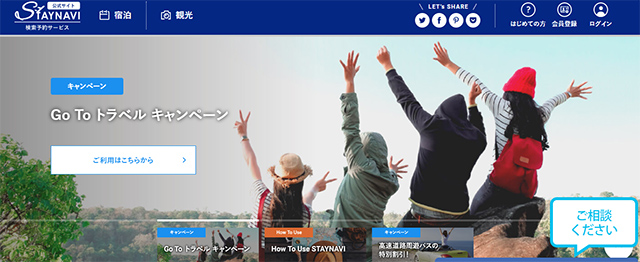
Once you’ve created your account, go to your personal page on StayNavi and click on the “ホテル” under “Go To トラベルクーポン発券” to apply for the discount. Key in all the details accordingly to what’s written. The page is only available in Japanese so if you need language assistance, ask someone around you that knows the language.

Once you apply, on the personal page, there will be a coupon. Print out the coupon or take a screenshot of the page and bring it with you upon staying at the hotel. If you do not bring this discount ticket, you will have to pay the full amount.

2) Book through Booking.com To search for an eligible hotel, just look for the orange "Go To Travel" flag on the corner of the hotel listing on Booking.com . At the time of your booking, you pay 65% of the total cost for the accommodation or package. Booking through Booking.com, travelers must apply through a different webpage for the 15% coupon issued in electronic form. See details on the next section, "How to apply for electronic coupon".
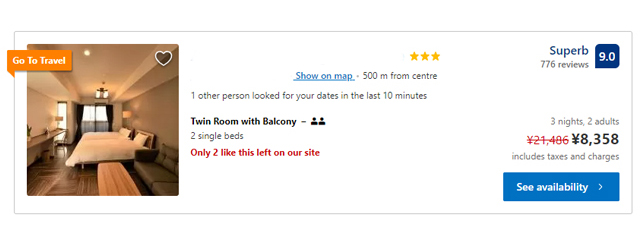
Screen capture: Booking.com
3) Book through major Japanese travel agencies/booking systems On most major Japanese travel agencies/booking systems, the discounts are included in the promotion and upon booking, you’ll pay the discounted price directly through the agency/system. At the time of your booking, you pay 65% of the total cost for the accommodation or package, while the 15% in coupons will be issued to you by the travel agent or hotel either in physical or electronic form. This will change depending on the agency/system so upon booking, make sure to read the instructions carefully.
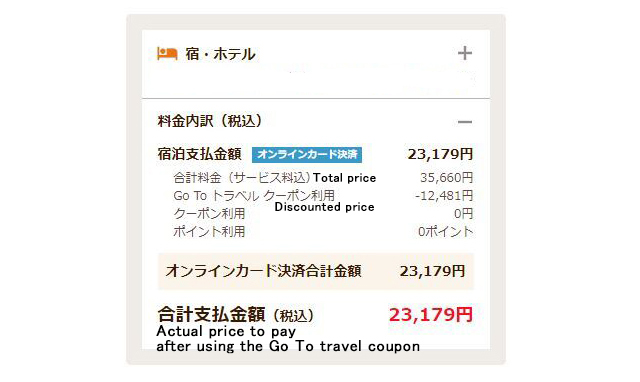
Screen capture: Jalan

How to apply for electronic coupon
Open https://goto-travel-ecoupon.jp/ (Japanese only) to visit the Go To Travel coupon page where you can claim your coupon starting from 15:00 JST on your check-in date. Key in all the details from your confirmation number, destination prefecture and travel agent ID. e.g Booking.com travel agent id is listed here . Keep in mind that the coupon will expire after your check-out date. And coupons are non-refundable and you cannot receive change when you pay with the coupons.

Where can I use the coupon?
Go To Travel has released a list of participating businesses and locations. This will include souvenir shops, restaurants, tourist attractions and activities. The list is only available in Japanese but can be found here . To use the electronic/digital coupon , look for the QR code at the participating venues for you to scan. After using the coupon, it will be deducted from your account. For physical coupon , simply hand the coupon at the purchase of your items to the cashier. Keep in mind that both physical and digital coupons will only be valid for use in the designated prefectures and on the designated dates of travel.
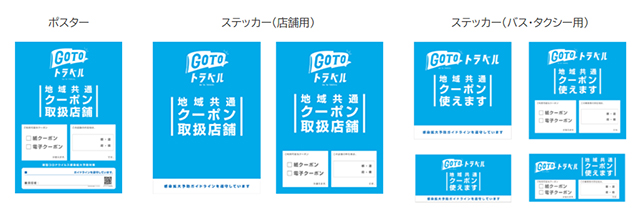
Look for these signs to find participating businesses and locations that the coupon can be used

Sample of physical coupon
When does the campaign end?
Tentatively, the campaign is expected to end on January 31st 2021.
How many times can I use the campaign?
There is no limit on how many trips you can make during the campaign period or on the length of each trip.
Who is eligible for the campaign?
Both the Japanese citizens and foreign residents living in Japan are eligible for this campaign. This campaign is only aimed for the residents, not for those visiting from abroad. For foreign residents, they must have their Residence Card (Zairyu Card; 在留カード) with you as a proof of eligibility and your address.

Welcome Suica with JR Lines 1-Day Pass
Update date:2024/04/30
The Tokyo Station Hotel
1-9-1 Marunouchi, Chiyoda-ku Tokyo

Click here for a summary article including this article
プライバシーポリシー ・ 利用規約 に同意の上、ボタンを押してください。
ログイン(無料)すると より便利に利用できます
Change password
Please view the main text area of the page by skipping the main menu.
The page may not be displayed properly if the JavaScript is deactivated on your browser.
- Entertainment
Japan's 'Go To Travel' campaign to restart Jan. 2022 or later if virus meds progress
November 11, 2021 (Mainichi Japan)
Japanese version

TOKYO -- The Japanese government has decided it will restart "Go To Travel" domestic tourism subsidy program as early as January 2022, depending on the progress of certain COVID-19 medications.
Figures in the tourism industry and others who have been hit by the coronavirus crisis had sought an earlier campaign restart, but the government has decided it needs first to see if oral medications to prevent severe COVID-19 symptoms can be approved for use by the end of 2021. Proof of vaccination, negative tests and other documentation are also expected to be a part of the restarted campaign.
In the Go To Travel campaign, the government subsidizes a part of individual vacationers' travel costs. It began in July 2020, but was suspended in December of the same year when coronavirus infections surged.
At a nighttime press conference on Nov. 10, Prime Minister Fumio Kishida said regarding the restart, "We will use vaccines and tests to create a safer and more secure system. I want to comprehensively review it, and decide on a time for it based on a thorough examination of the state of infections."
The government hopes to have the oral medication in use by the end of the year. Furthermore, booster vaccinations for older people will begin in earnest in January 2022. A government source said, "The important components for coronavirus infections countermeasures will come together (by the end of January)."
Some have pointed out that travelers tended to concentrate at major hotels and on weekends during last year's Go To Travel. In response, the government has decided the next round will include increased perks for weekday trips and stays at medium to small businesses' hotels and inns.
(Japanese original by Shiho Fujibuchi, Shun Kawaguchi and Soon Lee, Political News Department)
Related Articles
- Groups in southwest Japan raising money to mark 110th anniv. of ex-bank building
- Hokkaido debuts Pokemon-themed flight in bid for tourism to soar
Also in The Mainichi
Latest articles.

More Articles
- Go to Page Top
What is Japan’s New ‘Go To Travel’ Campaign – the ‘National Travel Discount’?
PLEASE NOTE: as of October 11 2022, ‘Go To Travel’ was replaced by the ‘National Travel Discount’ program. At this time, Snow Monkey Resorts is not participating in the program however discounted accommodation can be booked via Booking.com . Please note, the discounted rate is only available to Japanese citizens and residents . You will be required to provide evidence of your status in Japan upon check-in.
In response to the unprecedented impact of COVID-19 on tourism, the Japanese government has announced a series of measures, beginning with the national ‘Go To Travel’ campaign and now replaced by the ‘National Travel Discount’ – aimed at stimulating travel within Japan and boosting local economies. On this page you will find the following information:
— Latest News & Updates
— How it Works
— Making Use of the Campaign
— Booking Your Travel with Snow Monkey Resorts
— ‘Go To’ Campaign FAQs
— Japan Rail Deals inc. Discounted Shinkansen Tickets
As of October 11 2022, the ‘National Discount Program’ has replaced the long-suspended ‘Go To Travel’ campaign. Under the new program, discounts of up to JPY5000 per person, per day are available for accommodation bookings while and up to JPY8000 for package tours that include the use of public transport. Vouchers of up to JPY3000 per person, per day are available for persons booking weekday travel, reduced to JPY1000 on weekends. In order to be eligible, travellers must be able to provide evidence of at least three COVID-19 vaccination or provide a negative PCR test within three days of their intended travel.
While the new National Discount Program is now underway, details of exactly how it works remain unclear. As a result, we are not yet participating in it and are yet to fully update this page. We will update this page as further information becomes available with an intention to then start offer deals through our website.
LATEST NEWS & UPDATES
The following recent developments and announcements may be of interest:
October 13 2022 : Japan’s new ‘National Discount Program’ is now underway, replacing the long-standing but long-suspending ‘Go To Travel’ campaign. The new campaign is nationally funded but locally administered, resulting in some early confusion with exactly how it works. Since activation of the program on October 11, many hotels in Japan are reporting online issues as websites and booking systems are overburdened with traffic. In principle, the program provides eligible travellers with discounts of up to JPY5000 per person, per day are available for accommodation bookings while and up to JPY8000 for package tours that include the use of public transport. Vouchers of up to JPY3000 per person, per day are available for persons booking weekday travel, reduced to JPY1000 on weekends. In order to be eligible, travellers must be able to provide evidence of at least three COVID-19 vaccination or provide a negative PCR test within three days of their intended travel.
While we intend to participate in this program, we are waiting for clarification of all details and are yet to fully update this page. We will do so as soon as possible.
September 26 2022 : it has been announced that as of October 11 2022 by the ‘National Travel Discount’ program. Specific details of how this program will work and who will be eligible to take advantage of it are yet to be confirmed. We will update this page once more information is available.
June 20 2022 : it is being reported that the government is considering restarting and expanding the national ‘Go To Travel’ campaign from July 1 onward. The ongoing ‘kenminwari’ campaign , which provides substantial discounts to local residents traveling in their own or in some cases also surrounding prefectures, is set to finish at the end of June however it is also being reported it will be extended. Once more information is available, we will update this page.
March 15 2022 : Japanese Prime Minister Fumio Kishida has stated that the government is preparing to restart the ‘Go To Travel’ campaign ‘when the appropriate time comes’. Kishida explained that the government is examining the COVID-19 infection situation and consulting with experts in determining when to restart the campaign. Once an announcement is made, we will update this page.
January 10 2022 : the government has announced that due to the increasing spread of COVID-19 across japan, including the new ‘Omicron’ variant, the ‘Go To Travel’ campaign will not be reactivated in January. It had been hoped that the campaign might return as early as the end of this month but the announcement means that Go To will not be returning in the short-term. With the Omicron variant spreading rapidly around Japan, it would appear the campaign will not be returning in early 2022.
December 9 2021 : while there is no official announcement yet, there are indications that ‘Go To Travel’ may restart in February 2022. The incentive program is likely to operate as detailed in the post below however is unlikely to cover the spring holiday period in March and April, nor is it likely to cover Golden Week in late-April / early-May.
HOW IT WORKS
From July 22 nd 2020, the government will support up to half of the price of accommodation and travel expenses for 1-day trips up to a maximum of JPY10,000 per person, and 2. overnight trips up to maximum of JPY20,000 per person. Trips of up to a maximum of 7 days can be covered. For an overnight trip, the amount you are eligible for is based on the cost of your accommodation, with a maximum claim of JPY20,000 per person . Of that support:
— 70% will be delivered through discounted accommodation
— 30% will be available through use of ‘common coupons’
The campaign discount applies to accommodation up to a maximum cost of JPY40,000 per person, per night i.e. a 50% discount = a maximum JPY20,000 . Accommodation costing more than JPY40,000 per night will still be discounted, however that discount maxes-out at JPY20,000 and will not be applied to the cost above that point. Let’s break that down further:
DISCOUNTED ACCOMMODATION
As stated above, 70% of your total saving will be accounted for through discounted accommodation . As an example, if your full accommodation cost for 1 night would normally be JPY20,000 , your payment will be subsidised (at time of booking) at a rate of 70% of half the accommodation price i.e. 50% of JPY20,000 is JPY10,000 and 70% of JPY10,000 is JPY7,000. That amount – JPY7,000 – will be subtracted from the original accommodation price of JPY20,000, meaning that you pay JPY13,000 or a saving of 35% of the usual accommodation cost .
Prior to the availability of coupons, or if you don’t use them, your saving on accommodation alone would be 35% of the original cost (remembering that the campaign has a maximum of JPY20,000 per person, per day). It’s easiest therefore to think of the ‘Go To Travel’ campaign as an assured 35% discount of your original accommodation cost , with the potential to add-up to 50% through use of coupons.
As the graphic above shows, 35% of your total travel cost is accounted for by discounted accommodation; the other 15% will be accounted for by use of ‘common coupons’ – see below for details – totalling a maximum overall saving of 50%. It is important to note that in order to be eligible for this subsidy, hotels and guesthouses must register to be part of the ‘Go To’ campaign. For accommodation that is registered with the campaign, the advertised room price will already include the subsidy i.e. there is no further discount or refund at a later time. The hotel will need to see proof of your eligibility in the form of ID with your address.
For foreign residents, make sure to have your ‘外国登録証明’ (gaikkoku toroku shomei) or ‘gaijin card’ with you as proof of eligibility and your address. Just remember, without use of ‘common coupons’ , which will not be available until October, the maximum subsidy will be 35% of your travel cost .
COMMON COUPONS
Since the beginning of October, coupons of JPY1000 are available to domestic travellers, valid for use at participating stores, restaurants, transport and other venues between the dates of your intended travel. In the equation above, your total possible is saving is JPY10,000 (half of the original cost of JPY20,000). The calculation also shows that JPY7000 has already been accounted for through discounted accommodation. The remaining JPY3000 of your total possible saving of JPY10,000 is provided in the form of coupons.
Common coupons can therefore be said to 1. account for 30% of your total possible saving – in this case, a maximum saving of JPY10,000 – or 2. cover 15% of the original travel cost – in this case, the original cost would have been JPY20,000.
To be eligible, participating stores and restaurants will need to register with the campaign and will have some form of identification or logo on display, allowing travellers to know where they can use the coupons.
HOW WILL I RECEIVE & USE MY COUPONS
The issuance of coupons started from October. Following on from the calculation above, you would be eligible for JPY3000 worth of coupons. You will be issued as 3 × JPY1000 coupons. Coupons can be issued in both paper or digital form. Which one you receive depends on the hotel/travel agent you book:
PAPER COUPONS
At time of booking, the hotel calculates your total total value of coupons – in this case, 3 × JPY1000 = JPY3000. Upon check-in at your hotel, you will be asked to show identification with your name and address (for groups claiming discounts under the ‘Go To Campaign’, all members of the group will need to prove their eligibility). Having proven your eligibility, you will be given your coupons at your hotel to be spent at any participating venue within the prefecture. The coupons will have the prefecture they can be used in and dates of validity marked on them.
For guest that booked a trip through a travel agent. Depending on the travel agent you will receive the coupons by post or digitally. More information about digital coupons can be found below.
DIGITAL COUPONS
When booking through a travel agent, it is likely you will be provided with a digital rather than physical coupon. At time of booking, you will receive an email with a reservation number which will be needed to use the coupons. On the day you wish to use your coupon, you will need to log into a website – yet to be made public – and input your reservation number and the name of the travel agent you booked with. You will then see the total amount you have available for use.
Much like physical coupons, digital coupons will only be available for use in increments of JPY1000. Participating venues will have a QR Code for you to scan, which will deduct the coupons from your account . Just remember, both physical and digital coupons will only be valid for use in the designated prefecture and on the designated dates of travel .
If you do not use them, they cannot be refunded or exchanged for money at a later time. It is also worth noting that change will not be given i.e. if you want to make payment for JPY1700 worth of goods or services, you can choose to use JPY2000 however will not receive any change. This applies to both physical and digital coupons. You could also choose to only use one voucher of JPY1000 and pay the JPY700 in cash – as discussed in the FAQs below.
MAKING USE OF THE CAMPAIGN
Discounts and support offered through ‘Go To Travel’ is the first component of what is expected to be a large-scale campaign that includes ‘Go To Eat’ targeting restaurants and cafes, ‘Go To Event’ subsidising ticketing for registered events, and ‘Go To Shotengai’ promoting local shopping. Having commenced on July 22 nd 2020, the ‘Go To Travel’ campaign was original expected to run until spring 2021. However, the suspension of the campaign for an extended period and talk of its likely return toward the end of 2021 means that now appears likely to be restarted and run into 2022. To take advantage of the subsidised prices, you will need to book directly with the participating accommodation or travel agent , and this is where we come in…
BOOKING YOUR TRAVEL WITH SNOW MONKEY RESORTS
As a registered travel agent, we are happy to be participating in the ‘Go To’ campaign. Based in Nagano, we are proud of our home region and what everyone to enjoy the beauty, open spaces and fantastic attractions of Central Japan. We offer a range of packages including accommodation and transport, with the option of a private guide, restaurants, ticketing and other add-ons. We do this so you can get the best possible deal while focusing on the most important thing – enjoying your getaway! For further details of what we offer, please see our ‘Deals in Nagano & Central Japan’ page or click on the INQUIRY button below and send us a message. We’ll get back to you asap!
‘GO TO’ CAMPAIGN FAQs
The following are some of the most common questions when it comes to understanding the campaign and how it works:
Is the campaign currently operating?
Japan’s old ‘Go To Travel’ campaign was replaced by the ‘National Travel Discount’ on October 11 2022. The new campaign is nationally funded but locally administered, resulting in some early confusion with exactly how it works. Since activation of the program on October 11, many hotels in Japan are reporting online issues as websites and booking systems are overburdened with traffic. In principle, the program provides eligible travellers with discounts of up to JPY5000 per person, per day are available for accommodation bookings while and up to JPY8000 for package tours that include the use of public transport. Vouchers of up to JPY3000 per person, per day are available for persons booking weekday travel, reduced to JPY1000 on weekends. In order to be eligible, travellers must be able to provide evidence of at least three COVID-19 vaccination or provide a negative PCR test within three days of their intended travel. While we intend to participate in this program, we are waiting for clarification of all details and are yet to fully update this page. All further questions and answers are related to the previous ‘Go To Travel’ campaign and may no longer be accurate . We will update this page as soon as possible.
Does the campaign mean I will only pay 50% of my total travel expenses?
Not necessarily. The campaign potentially covers up to half your travel cost but is capped at JPY10,000 per person for day-trips and JPY20,000 per person for overnight trips. As explained above, the support will be broken into 70% accommodation discounts and 30% coupons. Prior to the availability of coupons, or if you do not choose to use them, your saving on accommodation alone would be a maximum of 35% – refer to the information above for details. It’s easiest to think of the ‘Go To Travel’ campaign as an assured 35% discount of your original accommodation cost, with the potential to add-up to 50% through use of coupons.
Who is eligible?
At this time, Japanese citizens and foreign residents in Japan can take advantage of the campaign.
How will anyone know if I am eligible?
Participating venues such as hotels and guesthouses will be required to confirm your eligibility by checking appropriate identification. For foreign residents, you will be required to show your ‘外国登録証明’ (gaikkoku toroku shomei) or ‘gaijin card’. For people travelling as groups, every member claiming discounts under the campaign will be required to provide proof of eligibility.
Do I have to personally register for the campaign?
No. Only participating accommodation, businesses and travel agents needs to register. If you are a Japanese citizen or foreign resident living outside of Tokyo, you can take advantage of the campaign simply by choosing to use accommodation and businesses participating in the campaign.
Will the campaign be extended to international travelers/non-residents?
While possible, the government has not expressed an intention to extend the campaign to overseas visitors in future. Should this change, we will update this page.
Are children and infants covered?
Yes. Children and infants are considered to be one person and therefore eligible to claim support i.e. if parents are traveling with two children this would count as 4 people, each entitled to claim.
Do discounted prices include tax and other charges, such as onsen tax?
The advertised price of discounted accommodation will include tax. Additional charges such as onsen tax should also be included but that is up to the individual guesthouse. Please check directly with your accommodation re additional charges.
In addition to the initial accommodation price, will any further charges upon check-out be subsidized?
No. The subsidy only applies to the initial accommodation charge. Any later or additional fees must be paid directly to the accommodation.
Does the campaign support international flights?
No. The campaign is intended to stimulate local economies and tourism and only applies to domestic travel.
When/how will I receive coupons for my travel?
Physical coupons will be handed to guests upon check-in or will be send to your provide address prior to your travel. For guests booking through travel agents, it is likely you will be issued with digital coupons. Please do note that coupons will only be distributed to trips which the original travel price is equal or more than JPY3334.
Coupons will be issued in the amount of JPY1000. Can I use coupons to purchase things greater than the coupon value i.e. use three coupons totalling JPY3000 to pay for a product or service costing JPY4500?
Yes. Coupons can be used like most other vouchers to cover the full price or part of the cost. If the total cost exceeds the value of your vouchers, you can make-up the difference by paying the business directly.
If I don’t use a coupon/s during my travel, can I have them paid-out in cash or refunded?
No. Unused coupons cannot be exchanged for cash and are not eligible for refunds.
Are rental cars covered by this campaign?
The campaign does not cover rental cars unless they are included in a package such as a combination of accommodation and a rental car.
Before the campaign was launched on July 22 nd , I booked an upcoming trip. Can I still get support?
Yes. You are still eligible as long as 1. the product i.e. your accommodation, is covered by the campaign, and 2. the travel agency or accommodation that sold the product is participating in the campaign. If that is the case, you should be eligible for a partial refund. For further information, please contact the travel agency or accommodation through which you purchased the product to request a refund.
Many prefectures and local governments are running travel campaigns and promotions of their own. Can I combine these with support available through the ‘Go To’ campaign?
It depends on the conditions of the local campaign. Please check with the specific promotion to check whether they can be combined.
How will the amount of support be calculated in the case of trips including different accommodation?
It depends. If the accommodation is booked separately i.e. each hotel is booked directly, the support will be capped at JPY20,000 per person, per day. If however you have booked accommodation through a travel agent, the support will be calculated on the total booking price over multiple days.
What happens if I cancel my booking?
When you book through ‘Go To Travel’, your booking will be subject to the cancellation policy of the supplier so it’s important to check the specific details including the time at which cancellation charges start from. Should you be subject to a cancellation fee, it is important to note that the cancellation fee will be calculated as a percentage of the original / pre-discounted booking price , not the Go To Travel price. This policy has been set by the government.
JAPAN RAIL DEALS INC. DISCOUNTED SHINKANSEN TICKETS
With great deals on offer through Go To Travel, Japan Rail has also come to the party and are offering big discounts on many shinkansen services and a new 3-day pass, only available to foreign passport-holders. Our ‘Discount Shinkansen Tickets: How to Buy Online’ page has a step-by-step guide of how to by discounted shinkansen tickets – up to savings of 50% – online! While our ‘JR East Welcome Pass 2020’ page has everything you need to know about the pass including how and where to get one. All this means that you can use the shinkansen much cheaper right now – the perfect time to combine your discounted fare or 3-day pass with a travel package with us in Nagano!
OFFERS & DEALS IN NAGANO
Deals & Promotions you can't miss
Winter Deals in Nagano 2023/24
Renewing our Tenryu Riverlands Tour Offerings for 2023/2024!
Green Season Deals in Central Japan 2024
Discount Shinkansen Tickets: How to Buy Online
JR East Welcome Rail Pass 2020
Prefectural Discount ‘Kenminwari’ Campaign
Hotel Kokusai 21
Hotel Sunny Shiga
Hotel Grand Phenix Okushiga
Kanbayashi Hotel Senjukaku
Yudanaka Seifuso Ryokan
Yudanaka Yumoto
Hotel Housei
Ryokan Biyunoyado
Ryokan Hakura
Hotel Tsubakino
Yamazakiya Ryokan
Maruka Ryokan
Masuya Yudanaka
Hotel Yudanaka
What is Japan's New 'Go To Travel' Campaign – the ‘National Travel Discount’?
- Living in Tokyo
Japan's Go to Travel Campaign: Save up to 50% on Domestic Travel
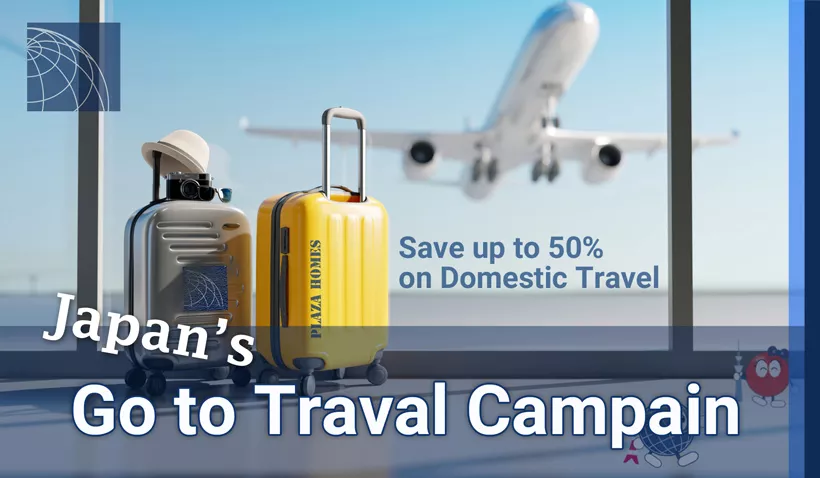
* Important notice: The Japanese government has suspended Go To Travel Campaign nationwide.
The Japanese government has been running “Go To Campaign” since July 22, 2020. The campaign aims to stimulate the demand for domestic tourism which has fallen as a result of the spread of the coronavirus.
There are 4 types of campaigns; Go To Travel Campaign , Go To Eat Campaign, Go To Event Campaign and Go To Shopping Street Campaign . Currently the Japanese government runs the Go to Travel Campaign, Go to Eat Campaign and Go to Shopping Street Campaign. The Go to Event Campaign is planned to be launched later this year.
The Go to Shopping Street Campaign aims at regional revitalization and currently runs in 34 shopping streets in Japan. Each shopping street has their own event to attract local people. Although the website is only available in Japanese, you can find the list of shopping streets and events here .
In this article, you can learn about the Go to Travel Campaign , how to apply for it, and how much of a discount you are eligible to receive.
All residents in Japan are eligible for this campaign. However, tourists from overseas visiting Japan are not eligible.
There is a special discount pass for foreign passport holders (regardless of visa status - temporary visitor, long-term resident, permanent resident, etc.). For details, please read " Special Discount Pass for Foreigners in Japan: JR EAST Welcome Rail Pass 2020 ".
What is the “Go to Travel” campaign?

The “Go To Travel” Campaign aims to subsidize up to 50% of travel expenses (upper limit: 20,000 yen per person per night / 10,000 yen per day trip) including accommodation and transport fees. The Japanese government provides discounts of 35% of the total costs and the remaining 15 % is covered by regional coupons which will be issued from October. The coupons can be used at travel destinations for shopping, food, and activities. This means, until the coupons are issued, the highest discount you will be able to receive is only 35% of the travel costs.
Who can apply for the “Go to Travel” campaign?
All residents in Japan are eligible. Tourists from overseas are not eligible.
What kind of travel products are eligible for the campaign?
1. Package Plans: combinations of accommodation and transportation for domestic travel
2. Accommodations only
3. A Day trip (round trip ticket + meal or sightseeing experience plan)
Individually arranged transportation fees are not eligible. However, cruises, night ferries, sleeper trains, and similar items are eligible.
Please make sure that the travel agency or accommodation facility you plan to use supports the campaign.
How much of a discount can you get?
Up to 50% of the travel costs will be subsidized for domestic trips. The maximum amount for a trip per person per night is 20,000 yen, and for the maximum daily trip is 10,000 yen. The 35% of the total costs (about 70% of the discounted amount) will be discounted, and the remaining 15% (about 30% of the discounted amount) will be issued as a “regional coupon” from September—which can be used in the destination area.
While the campaign will start from the 22nd of July, the maximum discount available will only be 35% until the regional coupons are issued in September. Even if you have already booked a trip on or after July 22nd, you can still receive the discount by applying for it (please read further for details).
* Please note: Some travel agencies may apply a different rate which is lower than 35% or restrict the number of times of bookings. Please make sure the discount rate before booking your trips.
Campaign Discount Examples
[Example 1] 2 people staying at a hotel at ¥10,000 per person | Total: ¥20,000
50% of ¥20,000 = ¥10,000
Discount: 70% of ¥10,000 = ¥7,000
Regional Coupon: 30% of ¥10,000 = ¥3,000*
--------------------------------------------------------------------
Total to Pay = ¥13,000 (¥20,000 - ¥7,000)
[Example 2] 2 people staying at a hotel at ¥50,000 per person | Total: ¥100,000
Discount = ¥40,000 (upper limit - ¥20,000 per person)
Discount: 70% of ¥40,000 = ¥28,000
Regional Coupon: 30% of ¥40,000= ¥12,000 (regional coupons) *
Total to Pay = ¥72,000 (¥100,000 - ¥28,000)
[ Example 3] 3 people going on a day trip at ¥30,000 per person | Total: ¥90,000
Discount = ¥30,000 (upper limit - ¥10,000 per person)
Discount: 70% of ¥30,000 = ¥21,000
Regional Coupon: 30% of ¥30,000= ¥9,000 (regional coupons) *
Total to Pay = ¥69,000 (¥90,000 - ¥21,000)
What is a regional coupon?
A regional coupon is a gift certificate issued in units of 1,000 yen per coupon. There are two types of coupons that planned to be issued, a paper coupon and an electronic coupon. The coupons can be used during the period of travel in the destination prefecture and its neighboring prefectures at designated local stores, restaurants, activities, transportation, etc... The coupons cannot be exchanged for cash and change will not be provided. The regional coupons will be issued from October.
How to apply for the “Go to Travel” campaign
You can apply for the campaign directly via a travel agency/reservation website or at an accommodation facility. As for the application method, travelers can apply from the travel companies participating in the campaign (almost all major travel agencies in Japan such as JTB , HIS , Hankyu Travel ) and accommodation companies.
For other English-Speaking travel agencies, visit " Best Japanese Travel Agencies for English-speaking Tourists " and contact them if they also run the campaign.
* Please note: Some travel agencies may apply a different rate which is lower than 35%. Please check the discount rate before booking your trip.
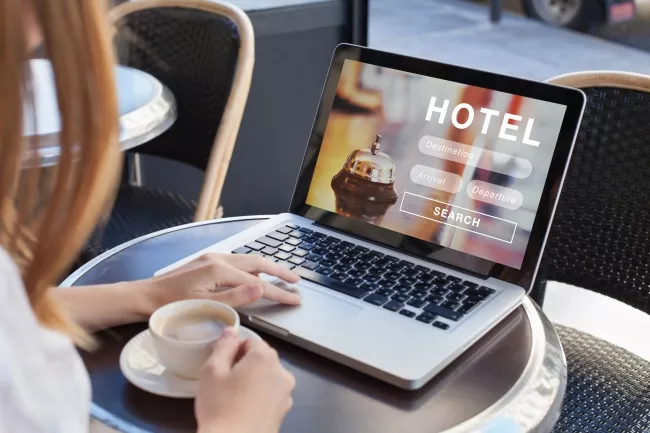
When will the campaign end?
The campaign period is planned for to last about 6 months. Since it starts on the 22nd of July, it is expected to last until January, however details have not yet been announced.
Traveling in the New Normal
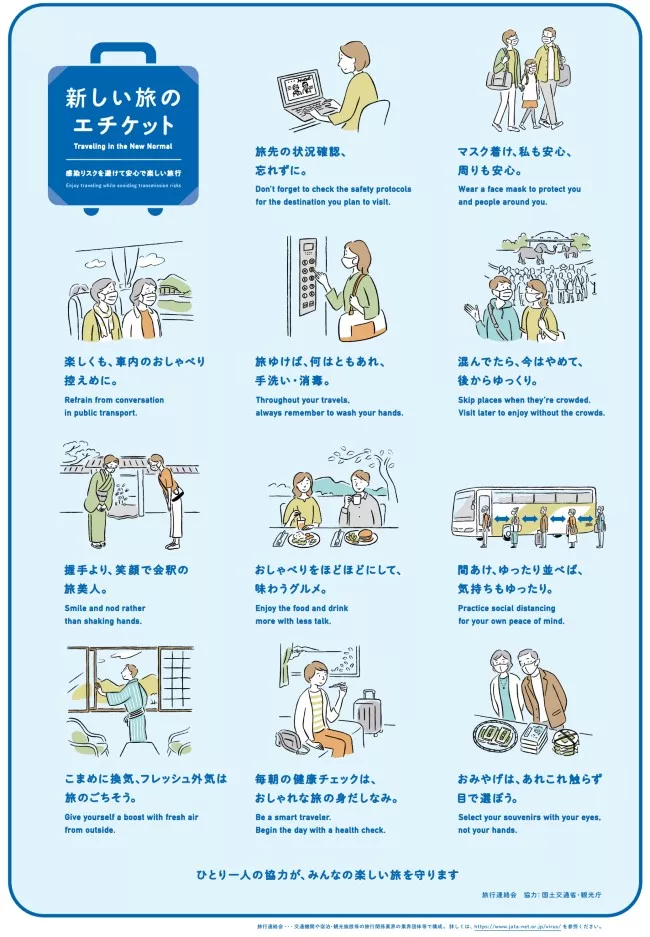
Enjoy travel while avoiding transmission risks
- ・Wear a face mask to protect you and the people around you.
- ・Smile and nod rather than shaking hands.
- ・Refrain from conversation in public transport.
- ・Don’t forget to check the safety protocols for the destination you plan to visit.
- ・Throughout your travels, always remember to wash your hands.
- ・Avoid visiting places when they are crowded. Visit later to enjoy without crowds.
- ・Practice social distancing for your own peace of mind.
- ・Select your souvenirs with your eyes, not your hands.
- ・Be a smart traveler. Begin the day with a health check.
More New Normal to follow when you travel
Practical things to have for traveling in the new normal
Here are some items that could be very useful while traveling. Please click the image to see details.

Related Posts

7 Best Day Trips from Tokyo: Fuji, Nikko, Kamakura and More

Special Discount Pass for Foreigners in Japan: JR EAST Welcome Rail Pass 2020

Beat the Heat and Get Out of Tokyo!

10 Riverside Spots & Campgrounds in Tokyo to Keep You Cool

How to Get from Haneda Airport to Tokyo

Comprehensive Guide to Camping and Glamping in Japan
Tokyo expat areas.
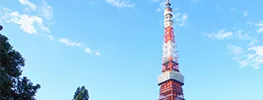
Introduction to the Best Expat Areas in Tokyo to Live
Tokyo Rentals

Rental Properties in Tokyo
Buy Property in Tokyo

Properties for Sale in Tokyo.
Monthly/Serviced Apartments

Monthly and serviced apartments for short term (1 month+) rentals in Tokyo
Weekly Ranking
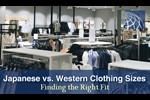
Japanese vs. Western Clothing Sizes — Finding the Right Fit
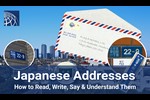
Japanese Addresses: How to Read, Write, Say & Understand Them

School Grade and Age Structures in Japan

Dress Code in Japan: A Guide to Appropriate Japanese Attire

Polite and Useful Japanese Business Phrases

Tokyo Lease Corporation

Furniture Rentals in Japan
All Japan Relocation
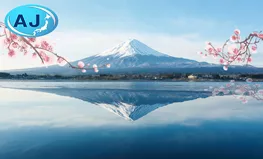
Relocation Services in Japan
Follow us on
© 2024 PLAZA HOMES, LTD.
Everything You Need to Know About Go To Travel Campaign Coupons
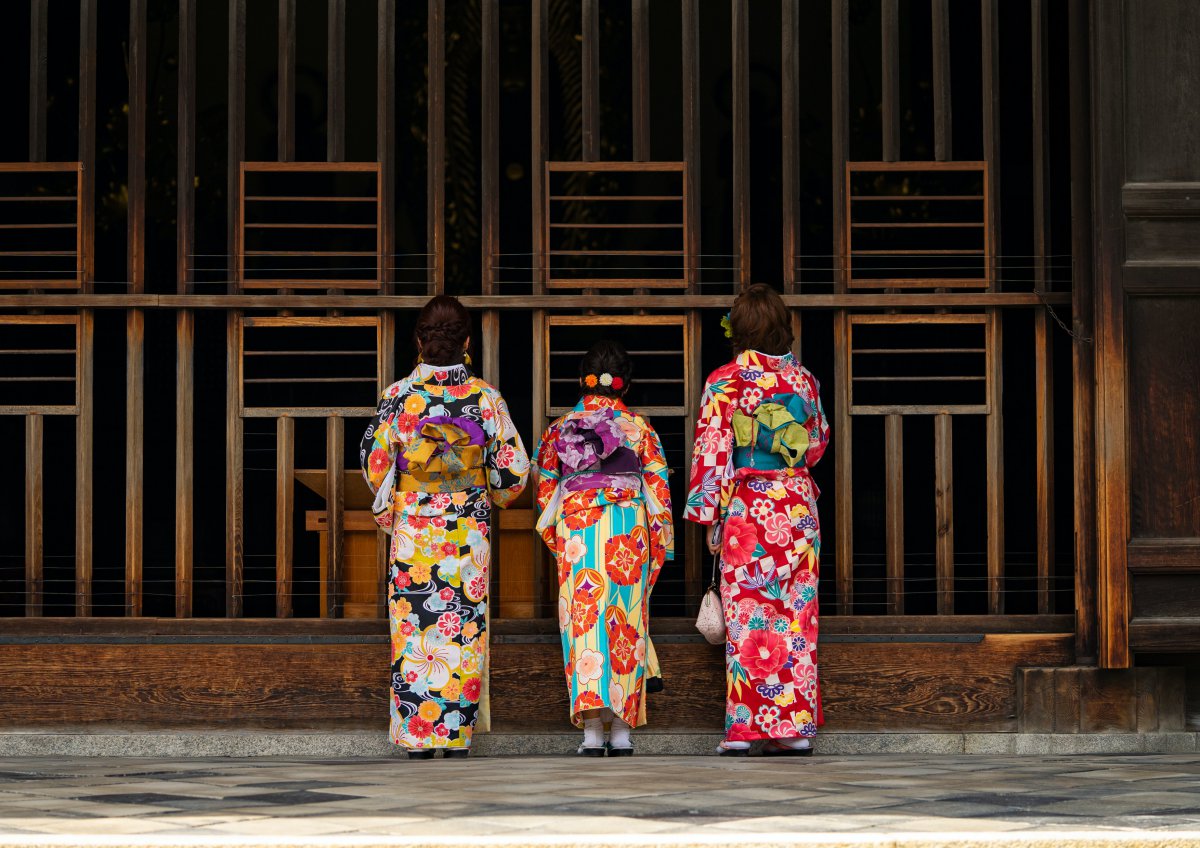
Go To Travel Campaign ―The opportunity you can travel at a half price started in July, 2020 for overnight trips and day trips. (Read How to Apply for the Go To Travel Campaign for more details)
Travel coupons are distributed which have a value of 15% of the total travel cost. You can use these coupons at the prefecture of your travel destination or adjacent prefectures, but you might be wondering how it works and what you can do with them. So here we explain everything you need to know about the Go To Travel Campaign coupons!
What is the coupons?
Where can you receive them, where can you use them, paper coupon, electric coupon, what you can’t do with the coupons, let’s “go to travel” with us, decide your travel destinations.
As we explained in this article , you can save up 50% of your travel cost with the Go To Travel Campaign with the combination of the reimbursement valued 35% of total travel cost and 15% by distributing coupons. (Up to ¥20,000 per day per person for overnight trips) You can use these coupons at the souvenir shops, restaurants, touristic facilities, activities, transportation etc. in your travel destination (only at the prefecture you travel to or neighboring prefecture of your destination). The coupons are valid only during your travel dates. They issue the coupon by ¥1,000 and you can get them with paper coupon and electric coupon which you can use with your smartphone.
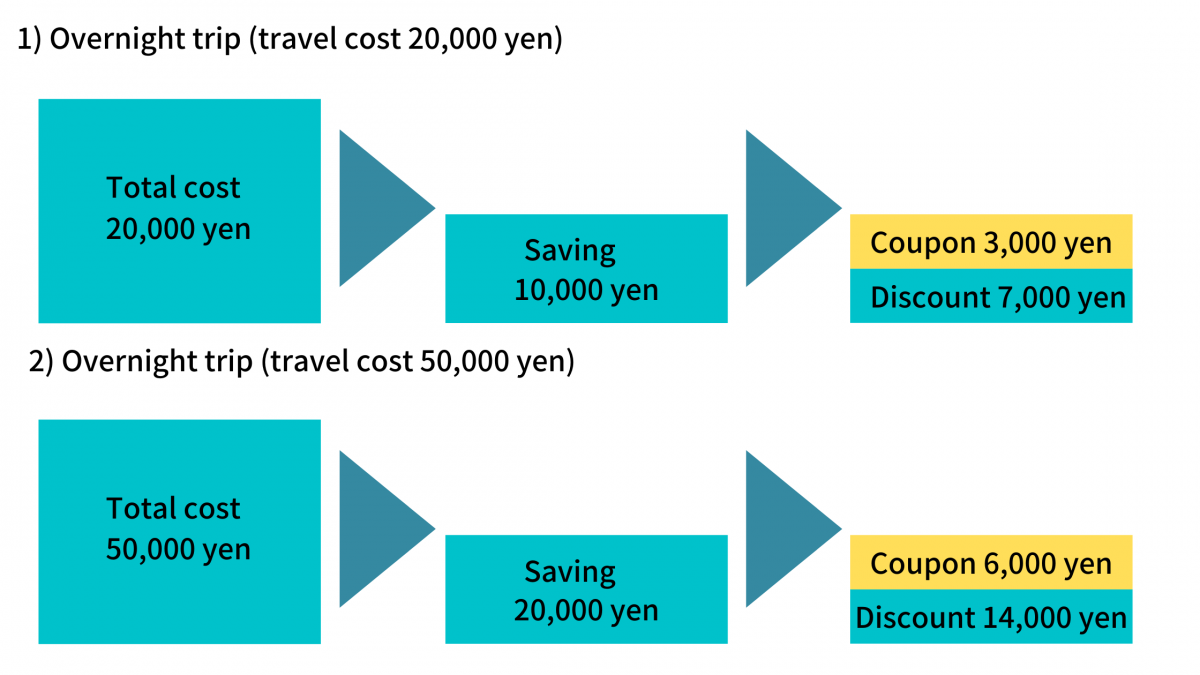
There are 2 types of coupons, paper ticket and electric ticket, and which coupon you will get is up to where you booked your trip.
- If you book at the store; you will get the paper coupons when you payed at the store.
- If you book through website; (1) you can get the paper coupon when you check in to the accommodation, or (2) you can get the electric coupon on the first day of your trip. It will be available after 3pm if it’s a overnight trip, after 12pm if it’s a day trip.
- If you book directly from the accommodation; you will get the paper coupons when you check in to the accommodation.
How to use the coupons
There will be a blue flyer or sticker with “Go To トラベル” logo shown at the front of the shops, restaurants, facilities etc. to know if you can use the coupons. And you can check which type of coupon you can use (紙クーポン means paper coupon and 電子クーポン means electric coupon) and which prefecture they are located on the flyer. You can use the coupons only at the destination (prefecture) and neighboring prefecture. For example, if you travel to Fukushima, you can use the coupons in Fukushima + Miyagi, Yamagata, Niigata, Ibaraki, Tochigi, Gunma prefectures.
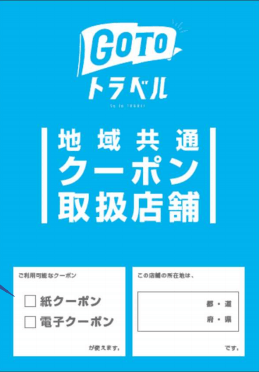
You can check the list of the facilities with the excel sheet but the easier way for you would be checking the available facilities on the map from the website below.
You can either search with 現在地 which means the current location or 都道府県(prefectures). Put check marks on what kind of facilities you want to search in the area.
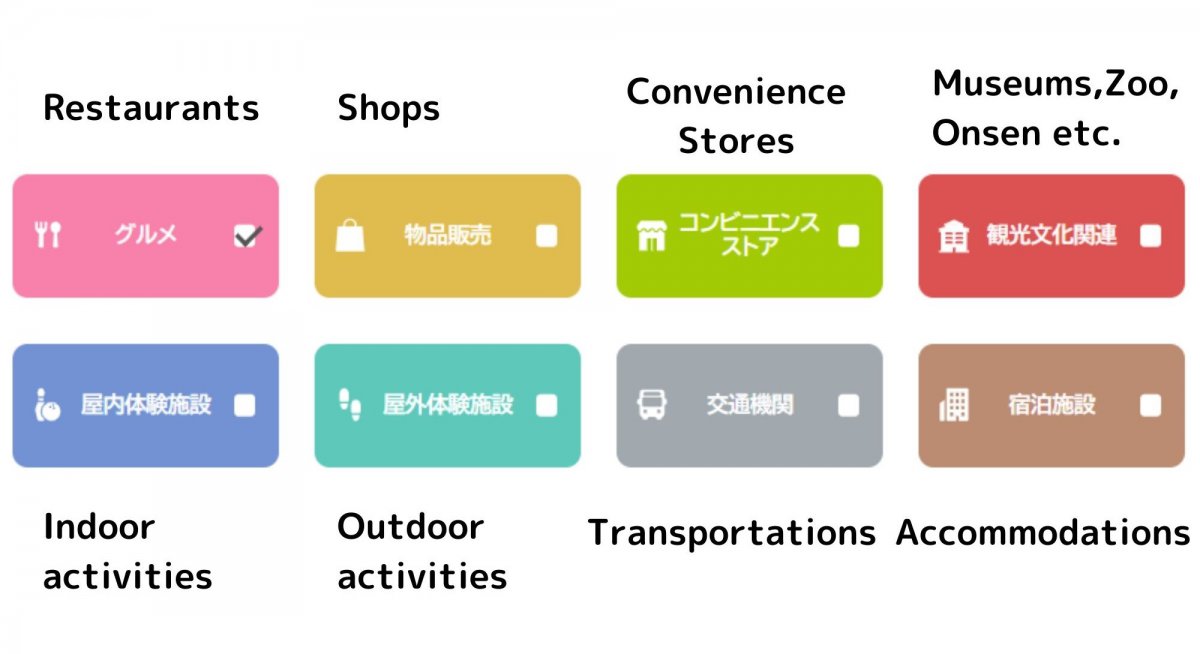
観光文化関連 (red box) includes tourist facilities such as museum, theme park, zoo and hot spring etc. 屋内体験施設(blue box) includes sport game, theater, movie theater, manga cafe etc. 屋外体験施設(green box) includes sport gym, fitness etc.
If you want to directly look at the map and see where you can use the coupons at the destination, check the map below.
The valid dates and prefectures you can use are written on the front, and issued by 1,000 yen. You cannot get the change from the coupon, but you can also pay the rest with cash. (E.g. when you buy your souvenir gift for 1,500 yen, you can use 1,000 yen coupon and pay 500 yen with cash. When you get a snack for 900 yen using 1000 yen coupon, there is no change. )
There are ¥1,000, ¥2,000 and ¥5,000 coupons. There will be the website to get the coupon (you don’t need to download the app but can access with the browsers), and login with travel agency’s ID, booking number and your destination. These information will come with an email on the first day of your trip. (It will be available after 3pm if it’s a overnight trip, after 12pm if it’s a day trip.) And you can choose the coupon amount (¥1,000, ¥2,000 and ¥5,000) to issue the coupon, and when you want to use it, scan QR code at the register and show your screen to a staff and payment will be confirmed! Please note that there will be no change when you use electric coupon either.
To learn more about the coupons, here is the best way to use Go To Travel Coupons at the popular destinations in Japan!
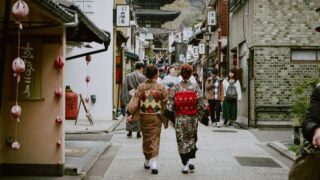
- You can’t exchange the coupons with cash
- You will not get refund when you want to return the item which bought with coupon
- You can’t receive your change
- You can’t exchange your coupons with other destination’s coupons
- If the total travel cost is under ¥3,334, you will not get the coupons
These coupons are aimed to contribute to the local economy so it has to be consumed in the destination, for example, you can’t pay tax or utility bills with the coupons, and you can’t buy prepaid card or gift cards.
You may wonder if you can use the coupons at the supermarket or convenience store, and the answer is technically yes, but it is up to the local branch whether they decided to participate to the campaign or not. For example, if the local convenience store at your destination has the sticker/flyer on the front, you can use it. But please remember, it’s not applied to every convenience store in Japan. If you are unsure, you can always ask staff too. Let’s use the coupons on something you can only buy/do at your destination!
*Please note that if you cancel the trip after you received the coupons, or if you downsized the number of the travelers and changed the package price, it’s necessary to return the coupons to the travel agency/accommodation where you booked your travel.
We have Go To Travel Packages to the popular destinations and we will give you electric coupons. Of course, you can use your coupons for our local guided tours too! We can also customize a package just for you. Contact us if you have any questions about Go To Travel Campaign or want to travel cheap with us. Let us know your travel date, destination and preference etc. so that we can help you make the best trip in Japan with the campaign.
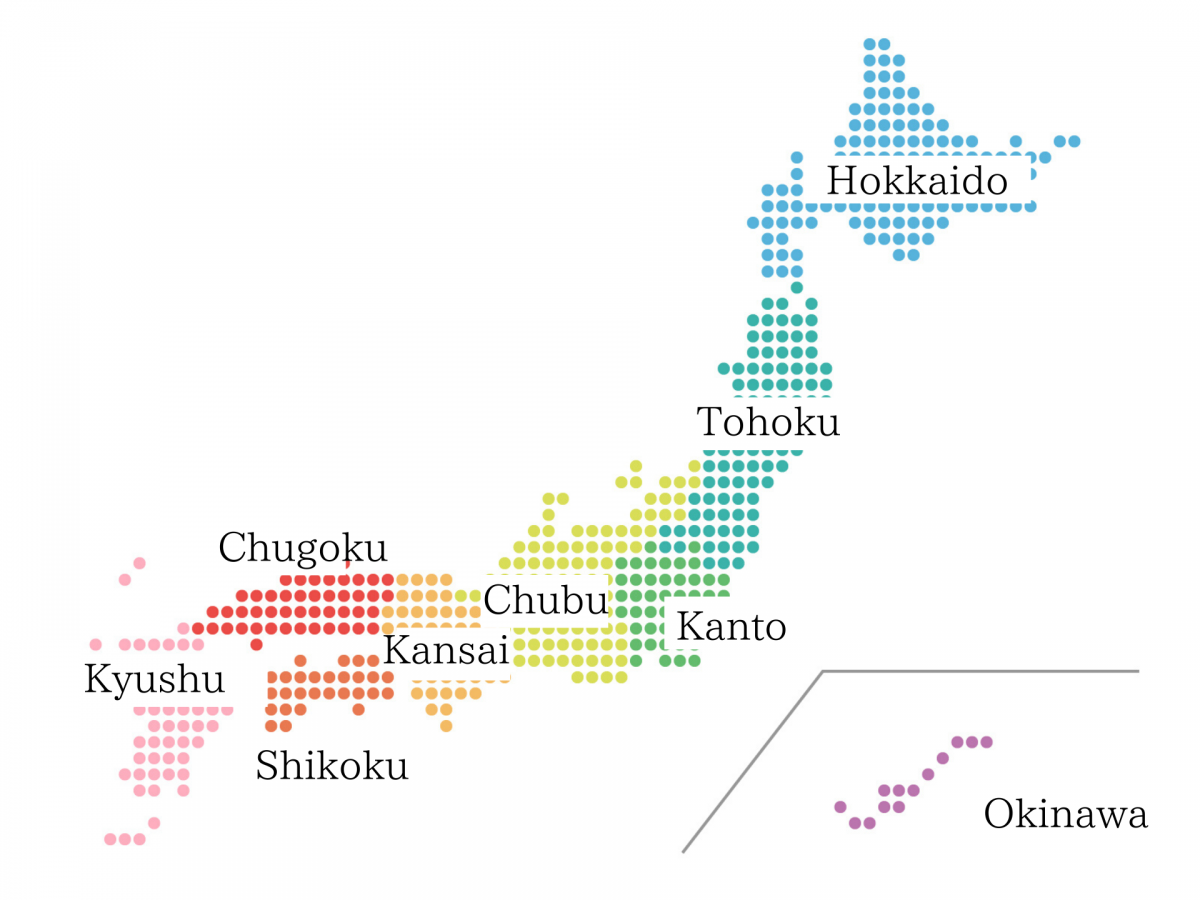
Hokkaido | Tohoku | Kanto | Chubu | Kansai | Chugoku | Shikoku | Kyushu | Okinawa
Follow us on Instagram or Facebook for more travel inspiration. Or tag us to get featured!
Happy travelling!
Stay informed of the best travel tips to Japan, the most exciting things to do and see, and the top experiences to have with the Japan Wonder Travel Newsletter. Every week we will introduce you to our latest content.

- Popular destinations
- Hidden places in Japan
- Tours and workshop
- Food and drink in Japan
- Itinerary in Japan
- Places to visit in Tokyo
- Food and drink in Tokyo
- Seasonal events
- Tours & workshops
- Tokyo This Week
- Day trip from Tokyo
- Itinerary in Tokyo
- Places to visit in Kyoto
- Food and drink in Kyoto
- Itinerary in Kyoto
- Day trip from Kyoto
- Travel tips
- Accommodation
- Cultural tips
- Transportation
- Tokyo Tours
- Kyoto Tours
- Kimono Rental
- Fukushima Tours
- Mount Fuji Tours
- Tour Package
- Media Kit(English/日本語)

LikeJapan |ライクジャパン
JAPAN TRAVEL.LIKE JAPAN
Go To Campaign: Go To Travel Campaign
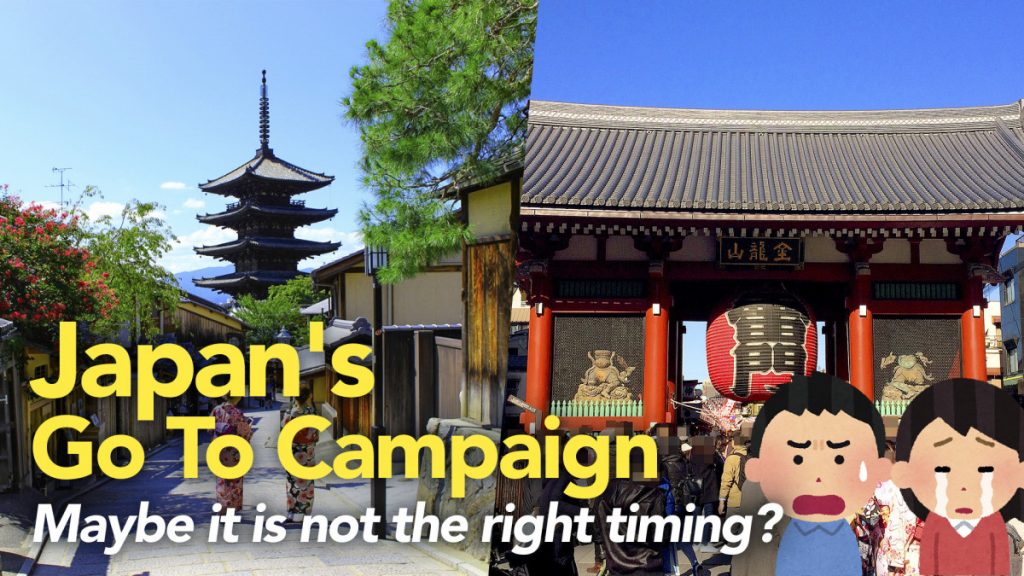
Global economy has been hit hard by the Covid-19 and there is not any exception for Japan. The Japanese government therefore launched an 1,679.4-billion-yen initiative called “Go To Campaign” (Go To キャンペーン) so as to stimulate and support local tourism, catering industry and entertainment industry, etc.
1. What is “Go To Campaign”?
“Go To Campaign” is divided into four categories:
- “Go To Travel Campaign” (Go Toトラベル キャンペーン)
- “Go To Eat Campaign” (Go To イート キャンペーン)
- “Go To Event Campaign” (Go To イベント キャンペーン)
- “Go To Shopping Street Campaign” (Go To 商店街 キャンペーン)
“Go To Travel Campaign” will be the launched on 22th July, 2020 ahead of the other campaigns. The detailed schedule of the remaining campaigns has not yet been released.
2. “Go To Travel Campaign”
In this campaign, you will be subsidized by the government if you make a reservation through the travel agencies or travel reservation sites. Subsidies are equivalent to half of the price of your reserved travel plan capped at 20,000 yen per night. For 1-day trip, the amount is capped at 10,000 yen. The sum of money comprises travel plan expenses (70%) and local shopping coupons (30%).
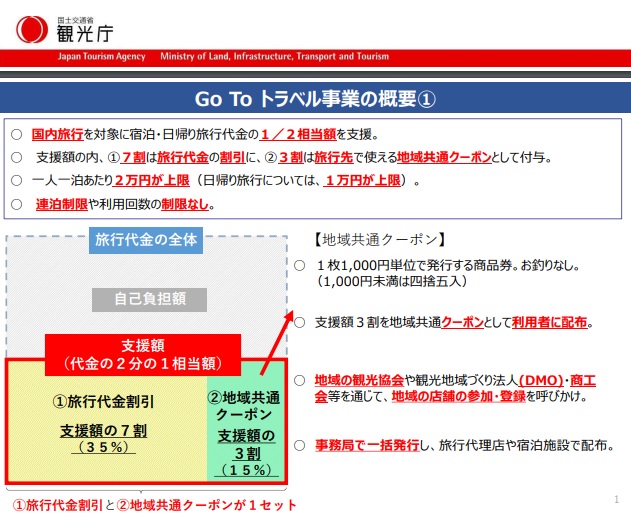
Here are some examples to help better understand the campaign.
Case 1: 20,000 yen/ night/ person (Stay overnight)
You will be subsidized 10,000 yen per night. The subsidy includes 7,000 yen for the travelling plan and 3,000 yen shopping coupons.
Case 2: 50,000 yen/ night/ person (Stay overnight)
You will be subsidized 20,000 yen per night (capped at 20,000 yen). The subsidy includes 14,000 yen for the travelling plan and 6,000 yen shopping coupons.
Case 3: 20,000 yen/ person (Day trip)
You will be subsidized 10,000 yen. The subsidy includes 7,000 yen for the travelling plan and 3,000 yen shopping coupons.
Case 4: 50,000 yen/ person (Day trip)
You will be subsidized 10,000 yen (capped at 10,000 yen). The subsidy includes 7,000 yen for the travelling plan and 3,000 yen shopping coupons.

You will be subsidized for an eligible reservation no matter how many times you have redeemed this offer. However, if you made all reservations directly on your own (not through an agency nor travelling website), only accommodation fees will be subsidized. Moreover, the shopping coupons are 1,000 yen each (no change) and only applicable to local business that have joined the campaign.
3. Latest updates and responses
With rocketing numbers of covid-19 cases in Tokyo and Osaka, the government announced to exclude travel to and from Tokyo in this “Go To Travel Campaign” on 16th July, 2020.
Japanese citizens are furious at the latest updates because tourists travelling across the 5 prefectures surrounding Tokyo are also at high risk of infection. It does not make sense to exclude Tokyo citizens and tourists who planned to travel to Tokyo.
GoToキャンペーン、東京だけ除外だと!東京は陸の孤島ではない。周辺を5県が取り囲んで行き来が密。しかも5県も感染者増大!東京だけを除外しても意味は全くない。専門家分科会も賛成と。バカじゃないか!専門家だって?笑わせる!あまりにも非常識で言葉を超える。小学生でもおかしいと言ってる。😡 — 澤田愛子 (@aiko33151709) July 16, 2020
Some just complained that this is a “Go To Hell” campaign instead.
GO TO HELL? #GoToキャンペーン #東京280人 pic.twitter.com/ns0WFXIkU1 — ふじのまさあき MASAAKI FUJINO (@masaaki_fujino) July 16, 2020
Despite the tempting amount of subsidies and the need of boosting local economy, there are more to be considered when travelling at high infection risk. Think wise, stay safe and fight against the pandemic together!

LikeJapan Editorial Team
See author's posts

- Luxury Stay
- Buddhist Temple
- Village Stay
- Gassho-Zukuri
- Request for accommodation not listed on our wesbite
- Guest Reviews
- Adventure Travel
- Art & Architecture
- Culture and History
- Day trip tour
- Experience program
- First time in Japan
- Pilgrims tour
- Onsen lovers
- Rural Experience
- Ski & Snow in Hokkaido
- Solo traveler
- Tours Reviews
- Custom Private Tours
- Find Private Guides
- Vegan Friendly
- Gluten Free
- Vegan Friendly Tour
Go To Travel Campaign
Go to travel --> let’s travel to japan now, take a look at our accommodations:.

Anrakuji Temple – #6 Temple in Shikoku 88 Pilgrimage
Aoni Onsen in Aomori
Area Inn Fushimicho

Auberge Hida No Mori

Auberge Yamagami in Rural Osaka
Boke Noen in Iya valley

Eiheiji Hakujukan – Inn Close to Zen

Eko-in Temple

Furusato

Gion Shinmonso

Goyomon

Guest House Takanoya by Fuka Garden
- Open access
- Published: 31 October 2022
Go To Travel campaign and the geographic spread of COVID-19 in Japan
- Asami Anzai 1 ,
- Sung-mok Jung 1 &
- Hiroshi Nishiura 1
BMC Infectious Diseases volume 22 , Article number: 808 ( 2022 ) Cite this article
1855 Accesses
5 Citations
11 Altmetric
Metrics details
In 2020, the Japanese government implemented first of two Go To Travel campaigns to promote the tourism sector as well as eating and drinking establishments, especially in remote areas. The present study aimed to explore the relationship between enhanced travel and geographic propagation of COVID-19 across Japan, focusing on the second campaign with nationwide large-scale economic boost in 2020.
We carried out an interrupted time-series analysis to identify the possible cause-outcome relationship between the Go To Travel campaign and the spread of infection to nonurban areas in Japan. Specifically, we counted the number of prefectures that experienced a weekly incidence of three, five, and seven COVID-19 cases or more per 100,000 population, and we compared the rate of change before and after the campaign.
Three threshold values and three different models identified an increasing number of prefectures above the threshold, indicating that the inter-prefectural spread intensified following the launch of the second Go To Travel campaign from October 1st, 2020. The simplest model that accounted for an increase in the rate of change only provided the best fit. We estimated that 0.24 (95% confidence interval 0.15 to 0.34) additional prefectures newly exceeded five COVID-19 cases per 100,000 population per week during the second campaign.
Conclusions
The enhanced movement resulting from the Go To Travel campaign facilitated spatial spread of COVID-19 from urban to nonurban locations, where health-care capacity may have been limited.
Peer Review reports
Since the first case of severe acute respiratory syndrome coronavirus 2 (SARS-CoV-2) infection was reported in January 2020, Japan had experienced seven waves of coronavirus disease 2019 (COVID-19) as of October 18, 2022 [ 1 ]. In response to a sudden surge in incidence during late March 2020 (first wave), the national government declared the first state of emergency, requesting residents to avoid unnecessary physical contact. The first state of emergency was declared on April 7, 2020 in seven (Saitama, Chiba, Tokyo, Kanagawa, Osaka, Hyogo, and Fukuoka) prefectures. That state of emergency was expanded to all 47 prefectures on April 16, 2020. The state of emergency was gradually lifted on May 14 and fully lifted in all prefectures by May 25, 2020. During the state of emergency, essential interventions included requesting a voluntary reduction in nonessential physical contact, self-restraint regarding movement across prefectural borders, and reduced operating hours for night-life establishments (e.g., bars and restaurants). The first wave was brought under control as a result of these containment efforts by the Japanese government [ 2 ]. However, canceling the intervention and reopening society led to a resurgence in COVID-19 incidence, resulting in the second pandemic wave from June 2020.
Although the public health and social measures during the first state of emergency greatly reduced the disease burden in Japan, they also caused considerable economic damage to the tourism sector as well as eating and drinking establishments. Therefore, to reactivate regional economic activities and assist those sectors most affected by COVID-19, the national government implemented the Go To Travel campaign on July 22, 2020. The campaign was designed to offer discounts for stays at hotels and ryokan (traditional inns found throughout the country, notably in hot-spring resorts) and to issue regional coupons that could be redeemed for eating purposes [ 3 ]. When the campaign began, the pandemic was undergoing an increase in Tokyo. Accordingly, residents in and travelers to Tokyo were excluded from the first of the two campaigns [ 4 ]. Nevertheless, once the second pandemic wave was brought under control, the government sought to promote travel to and from Tokyo; the city was then included in the second campaign, which began on October 1, 2020. In addition to involving Tokyo, the financial scale of the second campaign was clearly greater than the first. The first campaign simply provided a travel discount for accommodation; however, the second campaign also offered regional discount coupons that could be used in local restaurants and bars. The second campaign was specifically renamed the Go To Eat campaign [ 5 ]. As a result, it is estimated that the economic boost from the first campaign starting in July 2020 was 313 billion yen and that from the second campaign was 2.335 trillion yen [ 6 ]. However, a resurgence of COVID-19 in late October 2020 resulted in the third pandemic wave in Japan, and the campaign was discontinued in mid-December 2020 [ 7 ].
In general, the impact of human mobility on the spatial spread of directly transmitted diseases is widely recognized [ 8 , 9 , 10 ]. Regarding COVID-19 and travel, the Cabinet Secretariat of Japan has analyzed and publicly shared the importation risk index. This is estimated based on a simple product of the trans-prefectural migration rate per capita and the incidence of SARS-CoV-2 infection in the prefectures of origin [ 11 ]. Studies have analyzed the spatial patterns of COVID-19 spread in the United States, Brazil, and the United Kingdom [ 12 , 13 , 14 ] as well as human mobility in Japan during the early phase of the pandemic [ 15 , 16 , 17 ]. When the first campaign was about to start, the incidence exhibited an upward trend, and many prefectures expressed concern over the spread of transmission. For example, the governors of Tokyo and Okinawa Prefecture (the southernmost prefecture, which attracts many tourists) requested people to refrain from unnecessary movement across prefectural borders even when the campaign was beginning [ 18 , 19 ]. The coincidental second pandemic wave was dominated by urban prefectures, such as Tokyo and Osaka, and was gradually brought under control in early August. However, the above problems during the first campaign led public health experts to revisit and analyze the impact of enhanced travel on the spatial dissemination of infection.
In an earlier study, we examined the time-dependent change in the incidence of COVID-19 during the first Go To Travel campaign [ 20 ]. Our analysis of the first campaign was somewhat unclear in that the second wave was brought under control during that campaign; however, there was an abrupt change in the pandemic wave following the second campaign, which involved larger subsidies. Thus, in the present study, we focused on the second Go To Travel campaign to examine the relationship between enhanced travel and geographic propagation of COVID-19 across Japan. To identify a possible cause-outcome relationship, we analyzed the proportion of prefectures that experiencedCOVID-19 epidemic above a certain threshold incidence level and implemented an interrupted time-series analysis (causal inference method used in COVID-19-related studies) [ 21 , 22 , 23 , 24 , 25 , 26 ].
Pandemic data
In Japan, COVID-19 has been designated a notifiable infectious disease according to the Infectious Disease Control Law [ 27 ]; cases diagnosed using a nucleic acid amplification test or antigen test are notified as confirmed COVID-19 cases. Confirmed cases are mandatorily reported to the government within 24 h of diagnosis. During the study period of the present investigation, all suspected patients were requested to quarantine for 14 days [ 28 ], and all underwent real-time reverse transcription polymerase chain reaction testing on days 7 and 14. As a result of these control measures, the cumulative incidence of COVID-19 by the end of 2020 was 235,700 cases, which was less than 0.2% of the national population.
In this study, we obtained the COVID-19 incidence reported from September 10 to November 9, 2020 from open data published by the Ministry of Health, Labour and Welfare [ 29 ]. The data were based on an online surveillance system, the Health Center Real-time Information-sharing System on COVID-19 [ 30 ].
We intentionally restricted our analyses to this time frame, taking into account the 30 days before and after the start of the second travel campaign (October 1, 2020). The time delay in reporting SARS-CoV-2 infection in Japan was approximately 9 days during the study period [ 31 ]. To obtain an epidemic curve as a function of the time of infection, we shifted the entire epidemic curve (originally drawn by reporting date) to the left for a fixed time delay of 9 days. The reporting involved weekend bias; therefore, we used a 7-day rolling average, and we counted the number of prefectures that underwent an incidence of three, five, and seven COVID-19 cases per 100,000 population per week. These values were specifically used because the pandemic situation in each prefecture was classified into four discrete stages during late 2020 (Additional file 2 : Tables S1 and S2). Detection of 15 cases per 100,000 population per week led prefectural governments to declare a stage III pandemic and consider stringent public health and social measures that could involve restrictions on movement and other personal rights (Additional file 2 : Tables S1 and S2) [ 32 ]. Stage IV involved 25 cases per 100,000 people. Even if prefectures could control the pandemic below stage III, they were advised to monitor the incidence. Stage II did not involve an explicit threshold value: each prefecture was advised to determine the value based on the local epidemiological situation. The World Health Organization guidance applies thresholds for the level of community transmission of 20, 50, and 150 COVID-19 cases per 100,000 people [ 33 ]. Following our exploratory analysis, we found that the number of newly reported cases per population in Japan during the study period was relatively low compared with other nations. Fewer than four prefectures exceeded the threshold of 10 per 100,000 people. Thus, in the present study, we employed slightly lower threshold levels of three, five, and seven cases per 100,000 population per week to capture local epidemic activity. Those lower threshold levels allowed us to determine more clearly how the situation changed with low levels of incidence.
We obtained the population estimates by prefecture from the Statistics Bureau of Japan [ 34 ] and the daily average temperature in each prefecture during the corresponding time period from the Japan Meteorological Agency [ 35 ]. As the representative value for temperature across all 47 prefectures, we applied the median value of daily average temperature from the data for each prefectural capital. During the study period, the proportion of positive cases among the total number of weekly tests remained below 10%, and there were no major changes (Additional file 2 : Figs. S1 and S2). We did not standardize the number of newly infected cases because there were no significant differences in the consistency of reporting among prefectures. In the study period, B.1.1.284 and B.1.1.214 were the dominant SARS-CoV-2 lineages, but they were not determined to be variants of concern (Additional file 2 : Fig. S3).
Interrupted time-series model
Given the start date of the second campaign (October 1, 2020) and 9 days’ reporting delay, we set a campaign period in the interrupted time-series model from October 10 to November 9, 2020. The control period was 30 days before the second campaign (intervention) period. Through the corresponding time periods, we investigated the number of prefectures that had COVID-19 incidence in excess of the defined thresholds for weekly incidence (i.e., three, five, and seven cases per 100,000 population), Y t , which can be modeled as model 1:
where T is the time elapsed from the start of observation, X t is the dichotomous variable representing the campaign state (0, pre-campaign; 1, post-campaign), and T i is the time when the campaign started. \({\beta }_{0}\) is the parameter for the baseline level of the outcome, \({\beta }_{1}\) for increase in the outcome following the time-unit increase, \({\beta }_{2}\) change in the level of outcome immediately after the campaign, and \({\beta }_{3}\) the rate of increase following the campaign.
It has been reported that temperature may be associated with SARS-CoV-2 transmission [ 36 , 37 ]; therefore, we developed an extended model (model 2) by incorporating temperature into model 1. Model 2 was as follows:
where Z is the median value of the daily average temperature for Japan’s 47 prefectures.
We also examined a model without considering the immediate change in outcome after implementing the second campaign ( \({\beta }_{2}\) ). Model 3 was as follows:
Assuming that \({Y}_{t}\) follows a Poisson distribution, we applied the maximum-likelihood method to estimate all parameters; we derived the 95% confidence intervals (CIs) of the estimates using the parametric bootstrap method with 10,000 samples. Lastly, to select the best model among those proposed, we calculated the Akaike information criterion.
To examine the robustness of our results, we conducted sensitivity analyses. Our sensitivity analysis covered different geographic groups, timing of the intervention, holiday periods, the different models, and the study period (additional analysis). To exclude the possibility that an increase in infections was caused simply by geographic bias—especially heterogeneities associated with urbanization—we conducted a subgroup analysis using two discrete prefectural groups (urban and nonurban groups) based on each prefecture’s population density. To account for uncertainty about the time of illness onset to official reporting, we undertook sensitivity analysis using different values for the timing of the intervention. We also conducted interrupted time-series analyses: (1) using holiday periods as a possible explanatory variable; (2) employing another functional model with an exponential function for inference; and (3) extending the length of the study period until termination of the campaign.
Data-sharing statement
The original data analyzed in the present study are available in the Additional file 1 .
Figure 1 shows the pandemic curve of confirmed COVID-19 cases in 2020; it highlights the contribution of urban prefectures, especially Tokyo, Osaka, and neighboring prefectures. By the end of 2020, there were 234,109 COVID-19 cases diagnosed, of which 154,380 (66%) were in the above prefectures. Before the start of the second Go To Travel campaign, 57,076 cases (69%) were detected in Tokyo, Osaka, and neighboring prefectures.
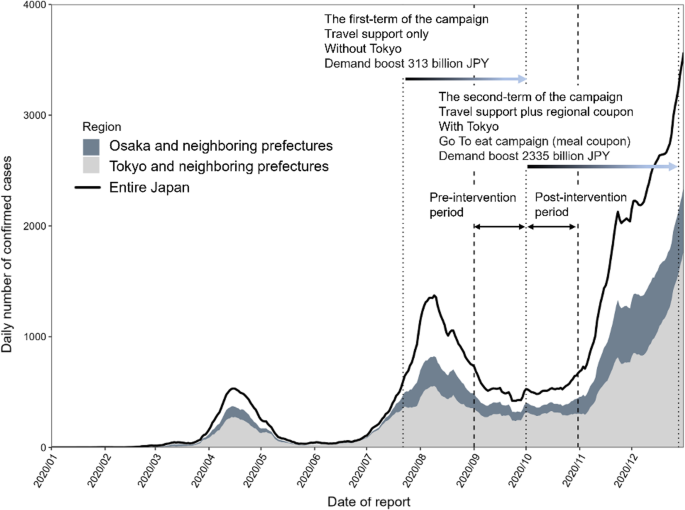
Epidemic curve for confirmed cases of COVID-19 in Japan, 2020. The number of cases (7-day moving average) throughout Japan (solid line) is shown. The fractions in Osaka and neighboring prefectures (dark gray) and Tokyo and neighboring prefectures (light gray) are indicated separately. The neighboring prefectures of Osaka comprise Kyoto, Nara, and Hyogo; those of Tokyo comprise Kanagawa, Saitama, Chiba, and Yamanashi. The first campaign began on July 22, 2020 and the second on October 1, 2020. The study period was September 1 to October 31, 2020
Figure 2 presents a comparison between the observed and modeled number of prefectures where COVID-19 incidence exceeded the thresholds defined for analysis (three, five, and seven cases per 100,000 population per week) based on model 1. Clear increasing trends in the number of prefectures above all thresholds were evident after implementation of the second campaign. Examination of those trends shows a significant increase in \({\beta }_{3}\) , representing the rate of increase following the second campaign (Table 1 ). \({\beta }_{3}\) was estimated to be 0.22 (95% CI 0.062 to 0.37) and 0.24 (95% CI 0.15 to 0.34) at thresholds of three and five cases, respectively. However, for all thresholds, the 95% CIs for \({\beta }_{1}\) and \({\beta }_{2}\) , which indicated the increase in the outcome following the time-unit increase and changes in the outcome immediately after the second campaign, included zero. We obtained similar results in the subgroup analysis, which divided prefectures into two groups (i.e., the top 25% prefectures with high population density and others) (Additional file 2 : Fig. S4). Changes in the slope before and after the campaign were also evident in the analyses when the start date for the campaign was shifted (± 5 days from the original date) (Additional file 2 : Fig. S5).

Effect of Go To Travel campaign on number of prefectures exceeding certain incidence criteria. We counted the prefectures where the number of newly reported cases (per 100,000 population) before and after the campaign (intervention) exceeded the threshold values of three, five, and seven cases per week. The vertical lines indicate when the second campaign (intervention) started. The yellow dots represent observed data; the blue lines show the estimated results of the interrupted time-series analysis. The blue shaded areas indicate 95% confidence intervals for the modeled results. The blue dashed lines during the second campaign period represent the estimated counterfactual scenario, i.e., if the campaign had not been launched. Model 1 assumed that there were changes in the baseline level and rate of increase following the second campaign
Figure 3 shows the results based on model 2, which addressed temperature dependence. Even after adjusting for temperature, the rate of increase in the number of prefectures with the defined threshold number of cases per 100,000 population was clearly evident. In addition to temperature, the impact of holiday periods was also considered in the analysis: there were no significant differences in the results for model 1 (Additional file 2 : Fig. S6).

Effect of Go To Travel campaign on prefectures exceeding certain criteria in Model 2. The number of prefectures where the number of newly reported cases (per 100,000 population) before and after the campaign (intervention) exceeded the threshold values of three, five, and seven cases per week are shown. The vertical lines indicate when the second Go To Travel campaign (intervention) started. The yellow dots represent observed data; the blue lines show the estimated results of the interrupted time-series analysis. The blue shaded areas indicate 95% confidence intervals for the modeled results. The blue dashed lines during the second campaign period represent the estimated counterfactual scenario, i.e., if the campaign had not been launched. Compared with model 1, which assumed changes before and after the second campaign, model 2 additionally accounted for temperature
In Fig. 4 , we compare results from the proposed models when the threshold was fixed at the number of prefectures with five or more cases per 100,000 population. In all analyses with the three different models, \({\beta }_{3}\) , measuring the rate of increase in the number of prefectures, always had a positive value, including a lower 95% CI (Table 2 ). There was a consistent rise in the rate of increase in the number of prefectures after the second campaign—both with and without taking temperature into account and with and without the baseline change immediately after the campaign ( \({\beta }_{2}\) ). Comparing Akaike information criterion values, model 3, which accounts for the rate of change but not change in the baseline level through the campaign, was selected as the best model, yielding the minimum value of 199.9. When we extended the study period and involved two change points (the start and end dates of the campaign), we also obtained generally comparable results (Additional file 2 : Figs. S7 and S8). However, population-based interventions were in place at the end of campaign, and so mobility could also have been altered by the interventions.

Effect of Go To Travel campaign prefectures above threshold values for incidence across different models. We counted the prefectures where the number of newly reported cases before and after the campaign (intervention) exceeded five cases per 100,000 population per week. The vertical lines indicate when the second campaign (intervention) started. The yellow dots represent observed data; the blue lines show the estimated results of the interrupted time-series analysis. The blue shaded areas indicate 95% confidence intervals. The blue dashed lines during the second campaign period represent the estimated counterfactual scenario, i.e., if the campaign had not been launched. Model 1 assumed changes in the baseline level and rate of increase following the second campaign. Model 2 accounted for temperature in addition to the causal effect of the campaign. Compared with model 1, model 3 assumed that only the change in the rate of increase occurred following the campaign
To establish whether the second Go To Travel campaign accelerated the geographic spread of COVID-19 in Japan, we conducted an interrupted times-series analysis of the number of prefectures that exceeded a defined threshold number of cases per 100,000 population. Three threshold values and three different models identified an acceleration in the rate of increase in the number of prefectures above the threshold: they indicated that the inter-prefectural spread of COVID-19—especially from urban to nonurban areas—was intensified following the launch of the second campaign. Our analysis did not exclude other factors that could have contributed to the increased spread of COVID-19. However, considering the plausibility of alternative explanations (discussed below), we believe that promoting travel resulted in accelerating the inter-prefectural spread of infection.
An important finding is that several nonurban areas became affected by COVID-19 after acceleration of the urban-to-nonurban spread following the second Go To Travel campaign, which allowed travel to and from Tokyo. During the pre-campaign period (during the first Go To Travel period), the rate of increase in the number of prefectures that exceeded the defined thresholds ranged from − 0.047 to 0.040 per day, i.e., a negative or small positive value; however, that increased to 0.048 to 0.24 per day during the post-campaign period. Even when we used a different model (e.g., an exponential model instead of a linear model to capture the time-dependent trend), we obtained similar results with consistent interpretations (Additional file 2 : Fig. S7).
It should be noted that the Go To Travel campaign was a crucial policy for assisting the tourism, transport, and restaurant sectors after the sharp reduction in economic activity associated with COVID-19 interventions. However, the policy spread the pandemic to nonurban prefectures that did not possess sufficient health-care capacity to meet the hospital case load demand [ 38 ]. That effect could have been reduced with a greater proportion of immunized individuals through either vaccination or natural infection. However, given the immune escape potential of new SARS-CoV-2 variants, the substantial risk of geographic spread owing to travel campaigns would not be negligible should a similar travel campaign be introduced while the incidence level remains high.
We incorporated temperature into our analysis because our earlier study and others indicated that decreased temperature would have an impact on secondary SARS-CoV-2 transmission [ 31 , 39 , 40 , 41 ]. The Go To Travel campaign took place from summer to winter, with gradually lowering temperatures. We estimated the temperature coefficient, \({\beta }_{4}\) , to be − 0.092 (95% CI − 0.45 to 0.28), which was not statistically significant. However, even after adjusting for the potential influence of temperature, the effect of the second campaign remained evident.
In this research, we investigated the geographic spread of COVID-19 infection rather than examining the transmission dynamics within each prefecture. During the study period, the SARS-CoV-2 lineages B.1.1.284 and B.1.1.214 were dominant. Neither of them has been classified as a variant of concern, but they share a point mutation (D614G) in the viral spike protein. That may have affected the transmission dynamics; however, we did not have access to genomic surveillance by geographic region, and it was very difficult to judge whether those lineages affected the spatial spread of COVID-19 (Additional file 2 : Fig. S3). It is highly likely that changes in inter-prefectural movement correlated with implementation of the campaign; thus, in the regression model, we considered only temperature without a potentially correlated value.
In this study, we did not account for changes in the spread of COVID-19 in each prefecture because the pandemic activity in the affected prefectures remained small. Thus, to determine the causal impact of Go To Travel using empirically observed epidemiological data, we considered that analyzing the initiation of the pandemic would be the most measurable outcome. Our purpose was to examine the inter-prefectural spread of COVID-19 before and after the travel campaign—not changes in the number of newly infected cases within a prefecture. Therefore, we focused on the number of prefectures that exceeded the threshold values rather than directly determining the incidence level and decomposing the transmission dynamics in detail. To compare the level of actual pandemic magnitude by prefecture, it would perhaps be necessary to account for different interventions adopted in each prefecture [ 42 ].
Our interrupted time-series analysis model examined abrupt changes by comparing the number of prefectures with a certain level of incidence before and after the second travel campaign; however, it is useful to explore whether the outcome also changed (e.g., decreased) after cancellation of the campaign. We examined whether results that were consistent with what we obtained in the primary investigation were maintained after accounting for the post-campaign period (Additional file 2 : Fig. S8). It was very difficult, however, to explicitly assess the impact of suspending the campaign using the interrupted time-series analysis model. The Go To Travel campaign was gradually suspended from late November 2020 in prefectures where the number of people with COVID-19 increased significantly; the program was suspended nationwide on December 28, 2020. On January 7, 2021, a state of emergency was declared for Tokyo and surrounding areas. Considering the overlapped timing between cessation of the campaign and implementing public health and social measures, we believe that as well as suspending the campaign the impact of various countermeasures and people’s risk awareness affected the subsequent decline in the outcome. It was difficult to assess the impact of campaign suspension because the timing of the campaign’s end differed by prefecture; travel-associated cases represented only a small fraction of COVID-19 cases when the number of infected people substantially increased (Additional file 2 : Fig. S8).
This study has some limitations. The first and most important is that the causal argument based on interrupted time-series analysis is vulnerable to concurrent changes that happened at a similar time to the campaign. A plausible alternative explanation cannot be identified, but the second campaign took place during a period when the following occurred: (1) restrictions on mass gatherings were eased [ 43 ]; (2) entrance from overseas to Japan was partially allowed for reentry visa holders [ 44 ]; and (3) onsite school classes restarted. Nevertheless, it is unlikely that these directly influenced the spatial spread of COVID-19 in Japan, and the involvement of schoolchildren in transmission remained minimal during the latter part of 2020 [ 45 ].
The second limitation is associated with ascertainment bias. The Go To Travel campaign featured in the mass media during the second campaign period, and the pandemic in Tokyo then was increasing. Thus, recognizing the pandemic risk may have been heightened, and later cases may have been better identified than in earlier periods. However, even with improved case detection, it is difficult to explain the steady increase in the number of prefectures with a greater number of cases during the campaign period.
Third, we focused on the second Go To Travel campaign, and the control period was during the latter period of the first campaign. The first campaign had limited impact on the geographic spread of COVID-19. During the first campaign, the second wave in Japan (which was dominated by urban prefectures, including Tokyo and Osaka) was gradually brought under control, and the number of travel-associated cases did not increase. Moreover, the budget of the first Go To Travel campaign was limited compared with that of the second campaign [ 46 , 47 ]. Thus, we considered the first campaign period an appropriate control period to measure the impact of the second campaign.
Fourth, we did not consider inter-prefecture mobility rate owing to scarcity of data. Currently available human movement data are restricted to mobility (and de facto population) within each prefecture, not the actual rate of movement crossing prefectural borders.
We believe the enhanced travel resulting from the Go To Travel campaign facilitated inter-prefectural spread of COVID-19. Policies that boost economic activities should be balanced with the increase in pandemic risk. It must be remembered that promoting travel may cause an epidemic to be easily disseminated from urban to nonurban locations, where health-care capacity may be limited.
Availability of data and materials
Abbreviations.
Coronavirus disease 2019
Severe acute respiratory syndrome coronavirus 2
Kinoshita R, Jung SM, Kobayashi T, Akhmetzhanov AR, Nishiura H. Epidemiology of coronavirus disease 2019 (COVID-19) in Japan during the first and second waves. Math Biosci Eng. 2022;19:6088–101.
Article PubMed Google Scholar
Jung SM, Endo A, Kinoshita R, Nishiura H. Projecting a second wave of COVID-19 in Japan with variable interventions in high-risk settings. R Soc Open Sci. 2021. https://doi.org/10.1098/rsos.202169 .
Article PubMed PubMed Central Google Scholar
Japan Tourism Agency. Go to travel campaign. 2020. https://biz.goto.jata-net.or.jp/ . Accessed 1 June 2022.
Ministry of Land, Infrastructure, Transport and Tourism. Summary of The Minister’s Press Conference. 2020. https://www.mlit.go.jp/report/interview/daijin200717.html . Accessed 1 June 2022.
Ministry of Agriculture, Forestry and Fisheries. Go To Eat Campaign. 2022. https://gotoeat.maff.go.jp/ . Accessed 1 June 2022.
Yamazaki S. Go To travel campaign. Fukoku Mutual Life Insurance Company. 2021. https://www.fukoku-life.co.jp/economy/index4.html .
Prime Minister’s Office of Japan. Prime Minister’s Press conference. 2020. https://www.kantei.go.jp/jp/99_suga/statement/2020/1214kaiken02.html . Accessed 1 June 2022.
Kraemer MUG, Yang CH, Gutierrez B, Wu CH, Klein B, Pigott DM, et al. The effect of human mobility and control measures on the COVID-19 epidemic in China. Science. 2020;368:493–7.
Article PubMed CAS Google Scholar
Jia JS, Lu X, Yuan Y, Xu G, Jia J, Christakis NA. Population flow drives spatio-temporal distribution of COVID-19 in China. Nature. 2020;582:389–94.
Brownstein JS, Wolfe CJ, Mandl KD. Empirical evidence for the effect of airline travel on inter-regional influenza spread in the United States. PLoS Med. 2006;3:1826–35.
Article Google Scholar
LocationMind xPop. Importation Risk. Cabinet Secretariat. 2021. https://corona.go.jp/dashboard/pdf/inflow_risk_20210614.pdf . Accessed 9 June 2022.
James N, Menzies M, Bondell H. Understanding spatial propagation using metric geometry with application to the spread of COVID-19 in the United States. Europhys Lett. 2021;135:48004.
Article CAS Google Scholar
Castro MC, Kim S, Barberia L, Ribeiro AF, Gurzenda S, Ribeiro KB, et al. Spatiotemporal pattern of COVID-19 spread in Brazil. Science. 2021;372:821–6.
Zheng J, Wu X, Fang F, Li J, Wang Z, Xiao H, et al. Numerical study of COVID-19 spatial–temporal spreading in London. Phys Fluids. 2021;33:046605.
Ghaznavi C, Yoneoka D, Tanoue Y, Gilmour S, Kawashima T, Eguchi A, et al. Inter-prefectural travel and network connectedness during the COVID-19 pandemic in Japan. J Epidemiol. 2022. https://doi.org/10.2188/JEA.JE20220064 .
Nomura S, Tanoue Y, Yoneoka D, Gilmour S, Kawashima T, Eguchi A, et al. Mobility Patterns in different age groups in Japan during the COVID-19 pandemic: a small area time series analysis through March 2021. J Urban Health. 2021;98:635–41.
Murano Y, Ueno R, Shi S, Kawashima T, Tanoue Y, Tanaka S, et al. Impact of domestic travel restrictions on transmission of COVID-19 infection using public transportation network approach. Sci Rep. 2021;11:3109.
Article PubMed PubMed Central CAS Google Scholar
Tokyo Metropolitan Government. Governor’s Press conference. 2020. https://www.metro.tokyo.lg.jp/tosei/governor/governor/kishakaiken/2020/07/15.html . Accessed 1 June 2022.
Okinawa Prefecture. Okinawa Prefecture State of Emergency Declaration. 2020. https://www.pref.okinawa.lg.jp/20200731.html . Accessed 1 June 2022.
Anzai A, Nishiura H. “Go To Travel” Campaign and travel-associated coronavirus disease 2019 cases: a descriptive analysis, July-August 2020. J Clin Med. 2021;10:1–8.
Bernal JL, Cummins S, Gasparrini A. Interrupted time series regression for the evaluation of public health interventions: a tutorial. Int J Epidemiol. 2017;46:348–55.
PubMed Google Scholar
Haber NA, Clarke-Deelder E, Feller A, Smith ER, Salomon JA, MacCormack-Gelles B, et al. Problems with evidence assessment in COVID-19 health policy impact evaluation: a systematic review of study design and evidence strength. BMJ Open. 2022;12:e053820.
Auger KA, Shah SS, Richardson T, Hartley D, Hall M, Warniment A, et al. Association between statewide school closure and COVID-19 incidence and mortality in the US. JAMA. 2020;324:859–70.
Thayer WM, Hasan MZ, Sankhla P, Gupta S. An interrupted time series analysis of the lockdown policies in India: a national-level analysis of COVID-19 incidence. Health Policy Plan. 2021;36:620–9.
Shah SA, Brophy S, Kennedy J, Fisher L, Walker A, Mackenna B, et al. Impact of first UK COVID-19 lockdown on hospital admissions: interrupted time series study of 32 million people. eClinicalMedicine. 2022;49:101462.
Islam N, Sharp SJ, Chowell G, Shabnam S, Kawachi I, Lacey B, et al. Physical distancing interventions and incidence of coronavirus disease 2019: natural experiment in 149 countries. BMJ. 2020;370:2743.
Ministry of Health, Labour and Welfare. Notice of amendment of act on the prevention of infectious diseases and medical care for patients with infectious diseases (the Infectious Diseases Control Law). 2020. https://www.mhlw.go.jp/content/10900000/000593023.pdf . Accessed 1 June 2022.
National Institute of Infectious Diseases. Guidelines for active epidemiological investigation in patients with SARS-CoV2 infection (Tentative Version, 2020/5/29). 2020. https://www.niid.go.jp/niid/ja/diseases/ka/corona-virus/2019-ncov/2484-idsc/9357-2019-ncov-2.html . Accessed 1 June 2022.
Ministry of Health, Labour and Welfare. Trend in the number of newly confirmed cases (daily). 2022. https://www.mhlw.go.jp/stf/covid-19/open-data.html . Accessed 1 June 2022.
Ministry of Health, Labour, and Welfare. Health center real-time information-sharing system on COVID-19 (HER-SYS). 2022. https://www.mhlw.go.jp/stf/seisakunitsuite/bunya/0000121431_00129.html . Accessed 1 June 2022.
Jung SM, Endo A, Akhmetzhanov AR, Nishiura H. Predicting the effective reproduction number of COVID-19: inference using human mobility, temperature, and risk awareness. Int J Infect Dis. 2021;113:47–54.
Cabinet Secretariat. Indicators for the implementation of countermeasures in response to changes in the infection situation. 2020. https://corona.go.jp/news/pdf/jimurenraku_0811.pdf . Accessed 7 Sept 2022.
World Health Organization. Considerations for implementing and adjusting public health and social measures in the context of COVID-19. World Health Organization. 2021. https://www.who.int/publications/i/item/considerations-in-adjusting-public-health-and-social-measures-in-the-context-of-covid-19-interim-guidance . Accessed 7 Sept 2022.
Statistics Bureau of Japan. Population estimates (As of October 1st, 2020). 2020. https://www.stat.go.jp/english/data/jinsui/2.html . Accessed 1 June 2022.
Japan Meteorological Agency. Daily average temperature. 2020. https://www.data.jma.go.jp/obd/stats/etrn/index.php?prec_no=44&block_no=47662&year=&month=&day=&view =. Accessed 1 June 2022.
Mecenas P, da Rosa Moreira Bastos RT, Rosário Vallinoto AC, Normando D. Effects of temperature and humidity on the spread of COVID-19: a systematic review. PLoS ONE. 2020;15:e0271760.
Li HL, Yang BY, Wang LJ, Liao K, Sun N, Liu YC, et al. A meta-analysis result: uneven influences of season, geo-spatial scale and latitude on relationship between meteorological factors and the COVID-19 transmission. Environ Res. 2022;212:113297.
Hayashi K, Kayano T, Sorano S, Nishiura H. Hospital caseload demand in the presence of interventions during the COVID-19 pandemic: a modeling study. J Clin Med. 2020;9:3065.
Article PubMed Central CAS Google Scholar
Qi H, Xiao S, Shi R, Ward MP, Chen Y, Tu W, et al. COVID-19 transmission in Mainland China is associated with temperature and humidity: a time-series analysis. Sci Total Environ. 2020;728:138778.
Smith TP, Flaxman S, Gallinat AS, Kinosian SP, Stemkovski M, Juliette H, et al. Temperature and population density influence SARS-CoV-2 transmission in the absence of nonpharmaceutical interventions. Proc Natl Acad Sci USA. 2021;118:e2019284118.
Wang J, Tang K, Feng K, Lin X, Lv W, Chen K, et al. Impact of temperature and relative humidity on the transmission of COVID-19: a modelling study in China and the United States. BMJ Open. 2021;11:e043863.
Ministry of Health, Labour and Welfare. Survey on capacity of healthcare facility. 2020. https://www.mhlw.go.jp/stf/seisakunitsuite/newpage_00023.html . Accessed 4 Sept 2022.
Cabinet Secretariat. Restrictions on holding events. 2020. https://corona.go.jp/news/pdf/jimurenraku_20200911.pdf . Accessed 1 June 2022.
Immigration Services Agency of Japan. Actions on coronavirus disease 2019. 2020. https://www.moj.go.jp/isa/publications/press/nyuukokukanri08_00057.html . Accessed 1 June 2022.
Ministry of Health, Labour and Welfare. COVID-19 Advisory Board. 2020. https://www.mhlw.go.jp/stf/seisakunitsuite/bunya/0000121431_00129.html . Accessed 1 June 2022.
Japan Tourism Agency. Results of Go To Travel campaign usage performance. 2020. https://www.mlit.go.jp/kankocho/news06_000482.html . Accessed 1 June 2022.
Japan Tourism Agency. Results of Go To Travel campaign usage performance. 2021. https://www.mlit.go.jp/kankocho/news06_000499.html . Accessed 1 June 2022.
Download references
Acknowledgements
We thank the local governments, public health centers, and institutes for surveillance for assistance with laboratory testing, epidemiological investigations, and data collection. We thank Cathel Kerr, B.Sc, Ph.D. and Analisa Avila, MPH, ELS from Edanz ( https://jp.edanz.com/ac ) for editing a draft of the manuscript.
AA received funding from JSPS KAKENHI (22J14304) and the Fujiwara Memorial Foundation. S-mJ received funding from the Japan Society for the Promotion of Science (JSPS) KAKENHI (20J2135800). HN received funding from Health and Labour Sciences Research Grants (20CA2024, 20HA2007, 21HB1002, and 21HA2016), the Japan Agency for Medical Research and Development (JP20fk0108140, JP20fk0108535, and JP21fk0108612), the JSPS KAKENHI (21H03198 and 22K19670), the Environment Research and Technology Development Fund (JPMEERF20S11804) of the Environmental Restoration and Conservation Agency of Japan, and the Japan Science and Technology Agency SICORP program (JPMJSC20U3 and JPMJSC2105) and RISTEX program for Science of Science, Technology and Innovation Policy (JPMJRS22B4). The funders had no role in study design, data collection and analysis, decision to publish, or preparation of the manuscript.
Author information
Authors and affiliations.
Graduate School of Medicine, Kyoto University, Yoshidakonoecho, Sakyo-Ku, Kyoto, 606-8501, Japan
Asami Anzai, Sung-mok Jung & Hiroshi Nishiura
You can also search for this author in PubMed Google Scholar
Contributions
HN conceived the study. AA, S-mJ, and HN conceptualized the study design. AA collected the data and performed statistical analyses. AA, S-mJ, and HN drafted early versions of the manuscript and figures. All authors read and approved the final manuscript.
Corresponding author
Correspondence to Hiroshi Nishiura .
Ethics declarations
Ethics approval and consent to participate.
The present study used publicly available data only, which had previously been de-identified. This study was approved by the Medical Ethics Board of the Graduate School of Medicine at Kyoto University (R2676).
Consent for publication
Not applicable.
Competing interests
The authors declare that they have no competing interests.
Additional information
Publisher's note.
Springer Nature remains neutral with regard to jurisdictional claims in published maps and institutional affiliations.
Supplementary Information
Additional file 1..
Number of prefectures that exceeded the threshold number of cases per 100,000 persons.
Additional file 2.
Supplementary text containing supplementary Tables S1 and S2 and supplementary Figures S1–S8.
Rights and permissions
Open Access This article is licensed under a Creative Commons Attribution 4.0 International License, which permits use, sharing, adaptation, distribution and reproduction in any medium or format, as long as you give appropriate credit to the original author(s) and the source, provide a link to the Creative Commons licence, and indicate if changes were made. The images or other third party material in this article are included in the article's Creative Commons licence, unless indicated otherwise in a credit line to the material. If material is not included in the article's Creative Commons licence and your intended use is not permitted by statutory regulation or exceeds the permitted use, you will need to obtain permission directly from the copyright holder. To view a copy of this licence, visit http://creativecommons.org/licenses/by/4.0/ . The Creative Commons Public Domain Dedication waiver ( http://creativecommons.org/publicdomain/zero/1.0/ ) applies to the data made available in this article, unless otherwise stated in a credit line to the data.
Reprints and permissions
About this article
Cite this article.
Anzai, A., Jung, Sm. & Nishiura, H. Go To Travel campaign and the geographic spread of COVID-19 in Japan. BMC Infect Dis 22 , 808 (2022). https://doi.org/10.1186/s12879-022-07799-0
Download citation
Received : 23 June 2022
Accepted : 25 October 2022
Published : 31 October 2022
DOI : https://doi.org/10.1186/s12879-022-07799-0
Share this article
Anyone you share the following link with will be able to read this content:
Sorry, a shareable link is not currently available for this article.
Provided by the Springer Nature SharedIt content-sharing initiative
- Spatial analysis
- Causal inference
- Economic campaign
- Time-series data
BMC Infectious Diseases
ISSN: 1471-2334
- Submission enquiries: [email protected]
- General enquiries: [email protected]
Nishimuraya – celebrating 160 years in Kinosaki Onsen, a classic Japanese hot spring town
Domestic Travel Campaign
For residents of Japan ONLY.
last updated: April 8th, 2022
IMPORTANT : As of April 8, 2023 the All Japan Wide Discount campaign has suspended new registrations and is not available for guests who have not yet registered.
Hyogo Prefecture Travel Discount
Residents of Hyogo and other applicable prefectures who met certain requirements may qualify for the Hyogo Prefecture travel campaign discount: ひょうごを旅しようキャンペーン+(プラス)
IMPORTANT : If non-qualified guests are traveling with un-qualified guests then qualified guests may still apply for discount, but ALL guests must meet the vaccination/COVID test requirements.
The following conditions apply for guests staying until October 10th, 2022 :
- Guests staying must be residents of Hyogo, Osaka, Kyoto, Shiga, Wakayama, Nara, Tottori, Okayama, Tokushima or Kagawa prefectures.
- Unvaccinated guests will still qualify if presenting a negative COVID test (see FAQ for details).
- Guests who are family living with the accompanying travelers and are 11 or younger are excluded from COVID test requirement.
- Must pre-register at the STAYNAVI web site all guest names & addresses.
- Provide copies of the vaccine certificates for all applicable guests at check-in.
- Provide all guest ID at check-in which verifies the addresses registered with STAYNAVI.
All Japan Wide Discount
Until June 30th, 2023 , a discount for residents of Japan only is available. The campaign in Hyogo prefecture (where Nishimuraya Honkan & Nishimuraya Hotel Shogetsutei are located) is called ひょうご旅しようキャンペーン「ワイド」 。Guests with residency in Japan will qualify for the discount if meeting the following conditions:
IMPORTANT : the discount is NOT available for the period of 29 April to 7 May , regardless of residency or other conditions.
- Guests have been at least triple vaccinated or provide a negative qualifying corona virus test and provide proof (copy of vaccine certificate or applicable negative test result form) at check-in.
- Guests have residency in Japan (Japanese address) and provide ID which shows address at check-in.
- Children 11 or younger when traveling with family they reside together with are exempt from test requirements as long as at least one guardian/parent is vaccinated.
The Alll Japan Wide Campaign can be applied on a per-guest basis. Meaning, if the guest is travelling with others who do not qualify for the discount, then the qualifying guest may still receive the discount provided all above requirements are met. Please note that address and ID of all accompanying guests must be checked regardless of whether they qualify or not.
How to Book?
If you qualify for the discount, book any stay plan from our official web site on a qualifying date and provide us (through booking message or by emailing to [email protected]) with representative traveller name, address (including postal code) and contact telephone number. If any guests do not qualify please also provide the number of non-qualifying guests. We will perform the registration for discount on your behalf. Please bring all guest IDs (and if necessary vaccination certificates / negative test result) on check-in day.
Q: What is the Hyogo travel discount campaign? Officially called ひょうごを旅しよう (Hyogo wo tabi shiyou), it is a campaign to incentivize residents of Hyogo and other applicable prefectures to travel inside of Hyogo prefecture. Foreign residents living in Hyogo or applicable prefectures are eligible to enjoy this campaign. Foreign tourists visiting Japan are NOT applicable. NOTE: presently this campaign is suspended in favor of the All Japan Wide campaign.
Q: What is the All Japan Wide discount campaign? Officially called ひょうごを旅しようワイド (Hyogo wo tabi shiyou waido), it is a campaign to incentivize residents of Japan to travel inside of Hyogo prefecture. Foreign residents living in Hyogo or applicable prefectures are eligible to enjoy this campaign. Foreign tourists visiting Japan are NOT applicable.
Q: How much is the discount? Discount is calculated based on the per night total of lodging fees per traveler. The maximum discount is 3,000 JPY per person, per night is provided.
Additionally, a special coupon is provided which can be used at participating shops, etc. for a limited time. This is to encourage additional purchases both inside and outside of the hotel during travel. The amount of the coupon varies by the date you are staying.
Q: How do I make a reservation at Nishimuraya Honkan or Nishimuraya Hotel Shogetsutei with this campaign? Book directly with Nishimuraya on either our web site, by e-mail, phone (English speaking staff available), or chat. In the booking message or in a separate email ([email protected]) please provide us with all guest names and addresses and indicate you wish to apply for the discount. Please also indicate if guests have been vaccinated, will test, etc. If your stay date is applicable and you meet all the requirements, Nishimuraya can register for the discount at on your behalf.
When reserving, please select “onsite payment” which is payment at the hotel. At checkout you will pay your lodging fees with the discount taken out. Nishimuraya accepts major credit cards and JPY cash for payment onsite.
Q: What are the vaccine requirements? All guests must provide proof of 3rd vaccination shot. There is no particular requirement for a certain time period to have passed after the third shot. 4th shot is also applicable.
Q: Which vaccines are eligible, and what constitutes proof of vaccination? COVID-19 vaccines approved for use in Japan are eligible. At present Pfizer, Moderna, AstraZeneca, Novavax and Johnson & Johnson are approved. PLEASE NOTE the list of vaccines that eligibile for entry into Japan is differrent and not related to this campaign.
Paper originals or legible copies, legible photographs or electronic verification of vaccination status are acceptable and must be shown for all applicable guests at check-in time.
Q: There are unvaccinated travelers in my group, am I still eligible? All guests who are unvaccinated must show a negative PCR or quantitative antigen (こうげんていりょうけんさ/抗原定量検査) test result taken within 3 days of the check-in day to qualify for the campaign. Alterantively, a negative qualitative antigen test (こうげんていせいけんさ/抗原定性検査) taken the day of or one day before check-in is also acceptable.
NOTE: guests living in the same residence as the other guests who are 11 or younger are excempt from needing to provide a negative test result.
Q: Instead of vaccine proof some or all guests will provide a negative COVID test. What are the rest requirements? Three types of negative tests are valid… (1) PCR (2) Quantitative antigen test 抗原定量検査 (3) Qualitative antigen test 抗原定性検査
Tests (1) & (2) must be taken at latest 3 days before arrival. Test (3) must be taken at latest the day of or day before arrival.
The negative test result must be in paper and have this information included (written at least in Japanese): (1) Name of the guest reiving test 受験者氏名 (2) Negative result indicated 検査結果 (3) The type of the test 検査方法 (4) The testing location name 検査所名 (5) The date of the test 検体採取日 (6) The name of the administrator for the test 検査管理者氏名 (7) The valid period of the negative test certificate 有効期限
Q: What is acceptable ID to present at check-in time? All guests must provide valid identification that proves their residency in Hyogo prefecture or other applicable prefecture and matches the address registered. A zairyu card is usually sufficient for this but alternatives such as Japanese driver’s license, Japanese health insurance card, My Number card, etc. is also acceptable. For ID, please bring the original (not a copy).
Q: Are foreigners eligible for this campaign? Foreign residents of Hyogo prefecture and other applicable prefectures, irrespective of citizenship, may utilize campaign as long as they meet the other requirements (vaccine, etc). Foreign tourists visiting Japan are NOT applicable.
Q: I have more questions, where can I ask? Please contact us by e-mail with any specific questions: [email protected]
- Meetings & Events
- Select Language 简体中文 繁體中文(香港) 繁體中文(臺灣) India (English) Bahasa Indonesia 한국어 ภาษาไทย Tiếng Việt Singapore (English) Philippines (English) Malaysia (English) Australia/New Zealand (English) Français Deutsch Italiano Español United Kingdom (English) Nordic countries(English) Canada (English) Canada (Français) United States (English) Mexico (español) Português العربية Japan(日本語) Global (English)
- India (English)
- Bahasa Indonesia
- Singapore (English)
- Philippines (English)
- Malaysia (English)
- Australia/New Zealand (English)
- United Kingdom (English)
- Nordic countries(English)
- Canada (English)
- Canada (Français)
- United States (English)
- Mexico (español)
- Global (English)
- Fujiyoshida
- Shimonoseki
- Ishigaki Island
- Miyako Island
- Kerama Island
- Tokyo Island
- Koka & Shigaraki
- Hida Takayama
- Ginza, Nihonbashi
- Beppu & Yufuin (Onsen)
- Ginzan Onsen
- Nagasaki Islands

- Kumano Kodo
- Shikoku Karst
- Amami Oshima
- Hachimantai
- Omihachiman
- Aizuwakamatsu

- Diving in Japan
- Skiing in Japan
- Seasonal Flowers in Japan
- Sustainable Outdoors
- Off the Beaten Track in Japan
- Scenic Spots
- World Heritage
- Home Stays & Farm Stays

- Japanese Gardens
- Japanese Crafts
- Temple Stays
- Heritage Stays
- Festivals and Events
- Theater in Japan
- Japanese Tea Ceremony
- Cultural Experiences in Japan
- Culture in Japan

- Local Cuisine Eastern Japan
- Local Cuisine Western Japan
- Local Street Food
- Japan's Local Ekiben
- Japanese Whisky
- Vegetarian and Vegan Guide
- Sushi in Japan Guide
- Japanese Sake Breweries

- Art Museums
- Architecture
- Performing Arts
- Art Festivals
- Japanese Anime and Comics
- Japanese Ceramics
- Local Crafts

- Scenic Night Views
- Natural Wonders
- Theme Parks
- Samurai & Ninja
- Iconic Architecture

- Wellness Travel in Japan
- Japanese Ryokan Guide
- A Guide to Stargazing in Japan
- Relaxation in Japan
- Forest Bathing (Shinrin-yoku)

- Experiences in Japan
- Enjoy my Japan
- National Parks
- Japan's Local Treasures
- Japan Heritage
- Snow Like No Other

- Visa Information
- Getting to Japan
- Airport Access
- COVID-19: Practical Information for Traveling to Japan
- Anime Tourism
- Countryside Stays
- Accessible Tourism
- Hokkaido Great Outdoors
- Scenic World Heritage in Tohoku
- Shikoku’s Nature and Traditions
- Southern Kyushu by Rail

- Traveling by Rail
- How to Travel by Train and Bus
- JR Rail Passes
- Scenic Railways
- Renting a Car
- Sustainable Travel in Japan
- Travel Brochures
- Useful Apps
- Online Reservation Sites
- Eco-friendly Accommodation
- Luxury Accommodations
- Traveling With a Disability
- Hands-free Travel
- How to Book a Certified Tour Guide
- Volunteer Guides

- Japanese Manners
- Spring in Japan
- Summer in Japan
- Autumn in Japan
- Winter in Japan
- Cherry Blossom Forecast
- Autumn Leaves Forecast

- Japan Visitor Hotline
- Travel Insurance in Japan
- Japan Safe Travel Information
- Accessibility in Japan
- Vegetarian Guide
- Muslim Travelers
- Safety Tips

- Visa Info for Canadians
- Tour Operators in Canada
- Brochure Request
- Know Before You Go
- JR Pass Retailers
- Regional Rail Passes
- Rail Travel FAQ

- Inspiration
- Travellers' Blog
- Japan Through the Eyes of Canadian Journalists
- Signature Journeys by Canadian Celebrities

- MICE Newsletter
- Notice of Campaigns
- What's New

My Favorites
${v.desc | trunc(25)}
Planning a Trip to Japan?
Share your travel photos with us by hashtagging your images with #visitjapanjp
Notice of Proposal Competition - FY2024 Advertising Campaign with Tour Operators or Travel Agencies for the Canadian Market
We hereby announce the following proposal competition for FY2024 Advertising Campaign with Tour Operators or Travel Agencies for the Canadian Market.
- Previous Article
- Back to Overview
- Canada home
- Notice of JNTO campaigns
Please Choose Your Language
Browse the JNTO site in one of multiple languages

35+ Helpful Japan Travel Tips To Know BEFORE You Go
J apan is a remarkable country filled with so much history, natural beauty and modern touches. I’ve just returned from my second trip to Japan and was reminded of so many things I had forgotten about the country! Traveling in Japan is an amazing and enriching experience, however it is also a country filled with traditions and unique ways of operating that visitors may not be used to. Below I share the best Japan travel tips to help you make the most of your trip.
Disclosure: Some of the links in this post are affiliate links, meaning at no additional cost to you, I will earn a commission if you click through and make a purchase.
Top Japan Travel Tips to Know BEFORE You Go
Before you head off to Japan, there are a few things you will need to know in advance and to plan for. While most things on this list can be figured out while in country, a few MUST be done before you leave your home. Whether you opt for the classic tourist circuit Japan itinerary or get off the beaten path , these tips will go a long way to help you enjoy your trip to the fullest.
Get A Japan Rail Pass in ADVANCE
If you want a Japan Rail Pass , it is only available to purchase for overseas tourists BEFORE they enter the country. Once you are in country, you can no longer purchase a JR Pass, so if you plan to use the bullet train between destinations quite a bit, this is a must do before you leave. You must also give yourself plenty of advance notice as well as the pass is still mailed to a physical address.
However, I will say that sometimes it’s not actually cheaper to get a JR Pass. Research the Shinkansen trains here and which trains you plan to take to budget accordingly. Often you can take a train that is just a bit slower, for a lot cheaper.
Regardless, the most important piece of advice for the JR Pass is once it is activated you CANNOT lose it. If you lose it, it is gone. You will not be able to print a new pass. You will not be given a refund. You cannot buy another pass until it is expired as it is connected to your passport. A fellow traveler on my recent trip had this experience, and it was not pleasant to lose a $600 pass on day 1 of his trip!
Keep Your Train Tickets With You
Along with the JR Pass information above, another thing to know when traveling on the trains in Japan is to keep your train ticket with you at all times. One, you will often be asked to show it on many longer distance train journeys and you will need it to exit the stations. Even better is to get a transportation card mentioned below for city travel as it is a little less easy to lose. Trust me, these tiny slips of paper are easy to misplace!
Get an IC Transport Card
There is nothing worse than arriving to Japan, transferring through the airports and needing a drink but unable to get one! Japan’s vending machines and many shops do not take US or foreign credit cards. What do you do when you only have a vending machine as an option in the airport? The best way to deal with this is to download and preload an IC card BEFORE your arrival. Not only does a Suica card or Pasmo card provide easy access to public transportation, it can also be used at vending machines and for small purchases at convenience stores.
Insider Japan Travel Tips You MUST know: If you have an iPhone, you can go to your wallet, click the plus sign, then click Transit Card. Now you can search “Japan” to see the Suica option. Now you can select the amount to add to your card and go through the payment portal. BAM. You are ready to roll upon hitting the ground in Japan.
If you cannot load it on your phone, you can purchase Suica Cards at most train stations. You can also order Suica Cards online and have them mailed to your house abroad prior to your trip to be sure you will have access when in the country.
Learn Basic Japanese Words
While you might find some level of English in the big cities or top tourist spots, much of Japan still exists without much English. I always find this interesting, but again, how cool that they have managed to keep their language and Japanese culture so true to themselves! That said, if you plan to get off the beaten path at all, make sure you know a few phrases and have your Google Translate handy!
The top phrases I found useful while in country include:
Hello – Konichiwa
Thank you – Arigato
Thank you very much – Arigato Gozai mas
Delicious – Oishi
Cute – Kawaii
Cheers – Kanpai
Sorry, Excuse me, Pardon me – Sumi masen
Download Google Translate
One of the most important travel tips I can provide is to download the Google Translate app and Japanese packet as you will often need it. As mentioned above, there is often still quite a bit of a language barrier in Japan, especially in smaller towns or off the beaten path at all. Having Google translate will help you when you want to say something to someone but can’t communicate. The translate will provide it in text for the other person to read which is super helpful. Additionally, you can actually just turn on your microphone and let a person speak into your app and get the translation quickly. This is a great help throughout Japan!
Cash is King
Tipping is not customary.
Contrary to the West, tipping is not customary here and in some cases can be considered rude. To be honest as an American who is asked for a tip at every turn, this was a welcome change. I was so happy to not have to worry about tipping at restaurants, bus drivers or our guides. If you are unsure you can ask, but in general it is not done!
Don’t Expect a Western Breakfast
One of the things I most remembered from my first trip to Japan was the very different, for me, breakfast options. While I am all for trying things and diving into the local culture, sometimes you want a little something that is reminiscent of home. For me that is often breakfast. At most restaurants and hotels, you can expect to see very little western offerings for breakfast. If you want something you are used to (coffee even) you will need to seek out western establishments. I don’t often go to McDonalds at home or abroad, but I sure do like that sausage egg mcmuffin after a week in Japan!
Walk on the Left Side of the Street
Without even noticing it, I found myself crossing over a path of people in the underground to get on the “right” side of the walking path. You will see that people traffic flows very smoothing in Japan and most of that is because of how the Japanese walk on the correct side. Watch the flow of food traffic and you will quickly see where you need to be! When I was in Sapporo, there was an entire city of underground walkways. I quickly realized that everyone was sectioned off in the direction of their travel. It made it very easy to get through even with large end of day crowds. But beware of those very useful, but pesky bumps for sight impaired. They are everywhere and are not really an indicator of which side of the street you should be on!
Get Ready to Take Off Your Shoes
While it isn’t as common to remove your shoes in Japan as it is for say India, you will need to remove your shoes for more traditional establishments including restaurants. We had to remove our shoes at the front door to one of our hotels even and couldn’t put them back on until we were leaving! I love not wearing shoes indoors, but it was not always easy especially when I was wearing my Blundstones that are so difficult to get on/off!
Take Your Passport Shopping
If you would like to take advantage of tax-free shopping, make sure to take your passport with you when you go shopping. Some shops like UNIQLO will automatically give you the tax free savings right away once they see your passport, helping you to avoid doing it at the airport. Other shops will require you get a refund at the airport. If you plan to do any shopping, just take it with you!
Respect the Japanese Traditions
One of the most amazing parts of traveling to Japan is how it is SO different than what many of us are used to. Historically, Japan has been a closed off society. Most of the country is Japanese origin with little Western influence. It is one of the many things that makes it so unique. That said, the most important thing is that you recognize and respect their traditions even if it’s very foreign to you. Take time to learn and ask about the traditions and practice them during your visit. It’s a great way to show respect and fully immerse yourself in the country.
Prepare Yourself for A Japanese Onsen
One of the most beautiful parts of Japanese society is the public bathing system of the onsen. These hot springs are located throughout the country in stunning locations. It is definitely a big part of life here and something tourists should try at least once. I will warn you though, that unless you are having a private onsen, they are completely nude and can be mixed gender as well. I could write an entire article on how to visit an onsen as there are customs and rules to know, but in general you will need to fully shower and bathe with soap before entering the pools, they are totally nude and many do not allow people to enter with visible tattoos. If you are staying in a ryokan with no private shower facility in your room, make sure the staff are aware of any tattoos in advance so they can make arrangements for you.
Transportation Etiquette
Don’t be afraid of shopping at convenience stores.
In Japan, convenience stores are everything. And EVERYWHERE! There are so many varieties from 7-11 to Lawson’s to Family Mart or more local shops like SeicoMart in Hokkaido that you can never be very far from one. Here you can literally get anything you want including breakfast or dinner! You can find ready made meals like fried chicken in Hokkaido to udon noodles, tempura, sandwiches and more. They also have chargers if you happen to have soaked your phone and need a cordless charger. They have candy and sweets, beer, iced coffee and so more more.
Get Ready to Carry Your Trash Around
One thing that is always a surprise to me when I’m in Japan is the lack of trash cans in public spaces. They are not on the roadsides or even that frequently found in shops. You will carry a lot of trash in your pockets all day long! Carry a small plastic bag for your trash to make life easier, but do remember to say no to plastic bags at most places as they are given very freely still or a minimal extra cost.
Separate Your Trash
Japan is not super up on the “use less plastic” concept, but they are very strict about separating their garbage. Hopefully this means they have a much better track record of recycling than we do in the US! If you are not used to separating your trash, educate yourself a bit on what is compostable, what is recyclable and what is landfill trash. At big festivals or events you will find very trash cans (as mentioned above), but when you do, they will expect you to seperate it all into the correct containers.
Eating, Drinking & Smoking in Public
While I am not 100% if there are rules on this, but in general you will notice that the Japanese people do NOT eat, drink or smoke while walking. There are of course designated areas for smoking, which is not allowed all over the place. But for drinking your morning coffee on the way to the train station? Nope, you won’t see Japanese people do this. Is it an unspoken rule or just a custom I am not certain, but I tried to follow suit as much as I could.
Throughout history, Japan has been a closed off society. Would you believe that almost 99% of the country is Japanese? The result is a unique culture with little Western influence and little English. So don’t be surprised if you ask questions or try to converse with people, but don’t receive much of a response. It’s not because they are rude, they simply know they can’t speak your language, and you likely can’t speak Japanese
Japanese Toilets Will Spoil You
Ok, one of the BEST things about Japan has to be their toilets. From the airport to public restrooms, you will find some really great toilets to literally write home about! My absolute favorite that I didn’t realize until I got back home was the heated seats. It really does feel so nice to sit down on a toasty toilet in the middle of the night. There are also several bidet options, drying options and of course also “privacy” sounds/music for many public toilets. Make sure to have your phone handy though as you may need to translate some of the buttons if they aren’t obvious. I have found myself stuff with the water on, not knowing how to turn it off! All of that said, you will also still find squat toilet options in most public bathrooms. They typically have a sign on the door indicating what type of toilet you can expect.
Get an e-SIM For Your Phone
If you haven’t tried an e-SIM yet, you need to get on the wagon. They are SO easy to use, super affordable and available all over the world. For my recently 2 week trip, I used a 10 GB e-SIM card which allowed me to have data access wherever I went. While there is often free Wi-Fi around major cities, often the log-in screen is only in Japanese which makes it challenging to login quickly. Get $3 off your first purchase at AIRLO using my code: KARILY0402
Stay at Ryokan At Least Once
One of the coolest Japanese cultural experiences I can recommend is to stay in a ryokan. A ryokan is basically traditional Japanese inns. While they come in many forms these days including a super traditional ryokan where you sleep on the tatami mats, you can also opt for ones that do have more “western” beds. I have stayed in all various forms and personally I love being able to plop down in an actual bed, but for a one night experience I would recommend trying the super traditional way as well.
As part of the experience, you might find that you have a traditional kaiseki meal for dinner or breakfast, you might also have no private shower in your room or have to take your shoes off at the hotel entrance. It is so fun and cool to see Japanese locals having their dinner or breakfast in the provided yukata (robe in the room) and wearing the slippers. I find this to be one of the most immersive cultural experiences you can have in Japan and well worth the price tag. (Shockingly they are usually quite a bit more expensive than western style hotels).
Japan is Not THAT Expensive
Japan has a reputation of being an excessively expensive country. While it is definitely more expensive than it’s other Asian counterparts, it is also not as pricey as some places in Europe! There are ways to reduce your expenses quite easily. One recommendation to mix up accomodation options – stay in a traditional ryokan, but also stay in chain hotels like Tokyu Stay. We had a great room at Tokyu Stay with a washer/dryer in our room for less than $80 a night. There are plenty of small shops for meals that will run you $5-10 a meal, while more traditional kaiseki meals will cost more. The biggest expense tends to be transport between cities, so that is why it is important to price it out in advance and check for internal flights and getting the JR Pass.
Do NOT Lose (or Keep) Your Hotel Key Card
Traditional hotels still use actual keys, so those are much easier to keep track of and not loose. If you are worried about losing one, you can drop it off with reception before you go out for the day.
Japan Trains Run VERY Timely
While I can’t say that Japanese trains run on time always because I have experienced delays with them, overwhelmingly they do run on a very tight schedule with very little disturbances. This is great as long as you are early, but it’s tough when you are running late! Always plan for delays in the train station and arrive with plenty of time.
Check for Seasonal Festivals
Regardless of when you visit Japan, there is sure to be some type of festival happening. These are often the best places to fully immerse yourself into the culture. For example, the cherry blossoms in the spring often have many festivals that accompany it, which can be quite fun. In Sapporo, there is an Autumn Festival in September that brings in tons of amazing food options every day for visitors to sample.
Bring Snacks With You
Whether it is a bus or train journey, do not plan on food being available. There are no dining cars on trains regardless how many hours they are. We found out the hard way that we needed to always have water and snacks with us because options were not always available. Shockingly though, you can eat and drink on the long distance trains, just make sure to take all of your trash with you.
Tap Water is Safe to Drink
One of the best things about travelling in Japan is that the tap water is safe to drink. I loved not having to purchase water bottles all the time or worry about water being bad quality. I even drank from a mountain spring in Rishiri Island that was crisp and cold and so delicious. Bring you recyclable water bottle and fill up in the hotels every day instead of buying more plastic.
Public Space & Japanese Etiquette
Japan has a concept called “ma” or personal space. Respect it, especially in crowded places with lots of people. Many of these etiquette rules are unspoken, but if you take time to look around you, you will notice that the Japanese people strictly adhere to them. Again, one of the best Japan travel tips I can provide is to look around you and follow what the locals are doing!
Wear Your Bag In Front on Crowded Trains
In places like Paris or New York, you might see people wearing their backpacks on their front on busy trains, but in Japan this is not for safety as much as it is a respect for fellow passengers. When you wear your bag on the front you are making sure that you are not accidentally hitting other people. This culture is one that is very fond of respect for others and I just love this example!
Safety in Japan
Overall I feel VERY safe in Japan at all hours of the day and night. Trains can get super crowded and you will see people wearing their bags in front like I mentioned above, however that is not necessarily for safety as it might be in other cities. All of that said, I would still be aware of your belongings when in crowded public places and wear your mobile on a strap like this one to make sure it isn’t snatched!
Use Google Maps for Train Travel
If you don’t already use Google Maps, one of my top Japan travel tips is to download it now! One of the coolest features of Google maps is that it will tell you how to walk to a train station, which train to get on and even which exit to look for when you arrive to the destination train stations! However it is important to note that oftentimes your internet may not work in the subway stations, so it is a good idea to have it all loaded before you get underground.
Expect Lines at Restaurants
Dietary restrictions are challenging.
In Tokyo you can often manage with dietary restrictions more easily, but once you leave the big city, it can often be quite challenging to deal with dietary restrictions. I personally am allergic to MSG, which meant asking everywhere if I could eat the food prepared. For the most part, most chef’s knew instantly whether they used it or not. In the more rural parts of Japan in the far north of Hokkaido, I ran into a few more challenges. If you are a strict vegetarian, it is also a bit cumbersome to find food that does not include any fish sauce as it seems to be included in a ton. Just take your time and ask around as there are often places that can cater to your needs.
An International Drivers License is Required in Japan
If you plan to hire a car and self drive during your visit to Japan, make sure you acquire an International Driver’s license before you leave home. If you are in the US, this is easily obtained at AAA for around $20 in one day. This is just an additional piece of paper that says that yes, your license is for driving and you are able to drive outside of your home country.
Japanese Wait for the Walking Sign
Just like in Germany, for the most part Japanese people do not jaywalk or cross until the walking sign is illuminated. I have seen a few people here and there cut across the road or go before the walk sign is lit up, but by far the general rule is that you wait patiently on the sidewalk!
Try All the Drinks, But Don’t Expect Much More than Coke
In Japan you will quickly notice that the only western drink you can purchase by and large is Coca Cola and not even diet, just regular coke. I was so surprised when our Japanese exchange student had never had a Sprite, but after my recent visit I was reminded why – it’s tough to come by! Only occasionally did I see a Sprite in a convenience store and almost never in a vending machine. Overall, you will be presented with a ton of drinks that are only Japanese!
Also, I found out after much sampling and discussion with our Japanese hosts – you will never find sweetened tea in the vending machines unless it is Chinese or American. They do not put sugar in their green tea at all. I purchased MANY tea varieties looking for a sweet option, with absolutely no luck!
Buy From ALL the Vending Machines
One of my top Japan travel tips includes buying stuff from the vending machines. I just love the vending machines in Japan. And I love that you can purchase almost anything in the world from them. At one of my onsen visits, they had a vending machine with underwear (new!), razors, earbuds and more. We saw a vending machine selling frozen ramen which would be the perfect take out food if you lived there. You will of course find drinks machines everywhere you go as well. My favorite one of the entire country has to be the “cake in a can” vending machine in Sapporo. The cake was amazing as is the concept. It was pricey, but worth it at least once.
Another great one to look out for and try is a coffee vending machine. You can usually adjust how strong you want the coffee, how much sugar and how much milk. It is so fun to just pay 100 yen and have a hot coffee. Additionally, on most regular machines you can look for the signs that say hot/cold as some machines dispense BOTH hot and cold drinks. You want a hot tea, but your friend wants a cold drink. You got it. Seriously, these machines are the best and one of my favorite things to check out while wandering around towns!
Japan is a country with a rich culture and history, so embracing its traditions and customs can really enhance your travel experience.
There really is no “best time” to visit. There are distinct seasons, each offering unique experiences, so you do not have to only go during the high season of summer (or during the cherry blossom season in spring!). The colorful foliage in fall is worth a trip as is seeing the country blanketed in snow! Wherever you go, have fun and enjoy all the differences that you are sure to find!
MORE TRAVEL AROUND JAPAN
We hope you enjoyed these Japan travel tips! For more travel around Japan, see the links below:
- 3 week Classic Japan Itinerary in Photos: Tokyo, Kyoto, Snow Monkeys & More
- Get off the Beaten Path in Hokkaido: Rishiri & Rebun Islands
- The Best Food in Japan That You MUST Try!
If You Enjoyed This Post, Sign Up To Receive Posts By Email or…
- Join us on Facebook for regular updates and related articles
- Check us out on Instagram to see what we are up to in photos
- Follow us on Twitter for links to great travel articles curated just for you
- Or share this post with others by pinning on Pinterest!
The post 35+ Helpful Japan Travel Tips To Know BEFORE You Go appeared first on No Back Home .
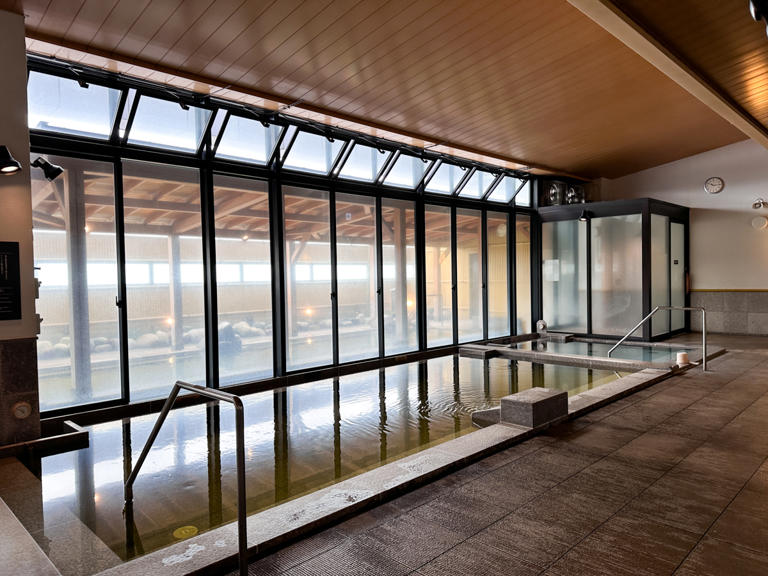
- Subscribe Digital Print

- LDP funds scandal
- Latest News
- Deep Dive Podcast
Today's print edition
Home Delivery
- Crime & Legal
- Science & Health
- More sports
- CLIMATE CHANGE
- SUSTAINABILITY
- EARTH SCIENCE
- Food & Drink
- Style & Design
- TV & Streaming
- Entertainment news
Tokyo’s travel promotion campaign to resume on Sept. 1
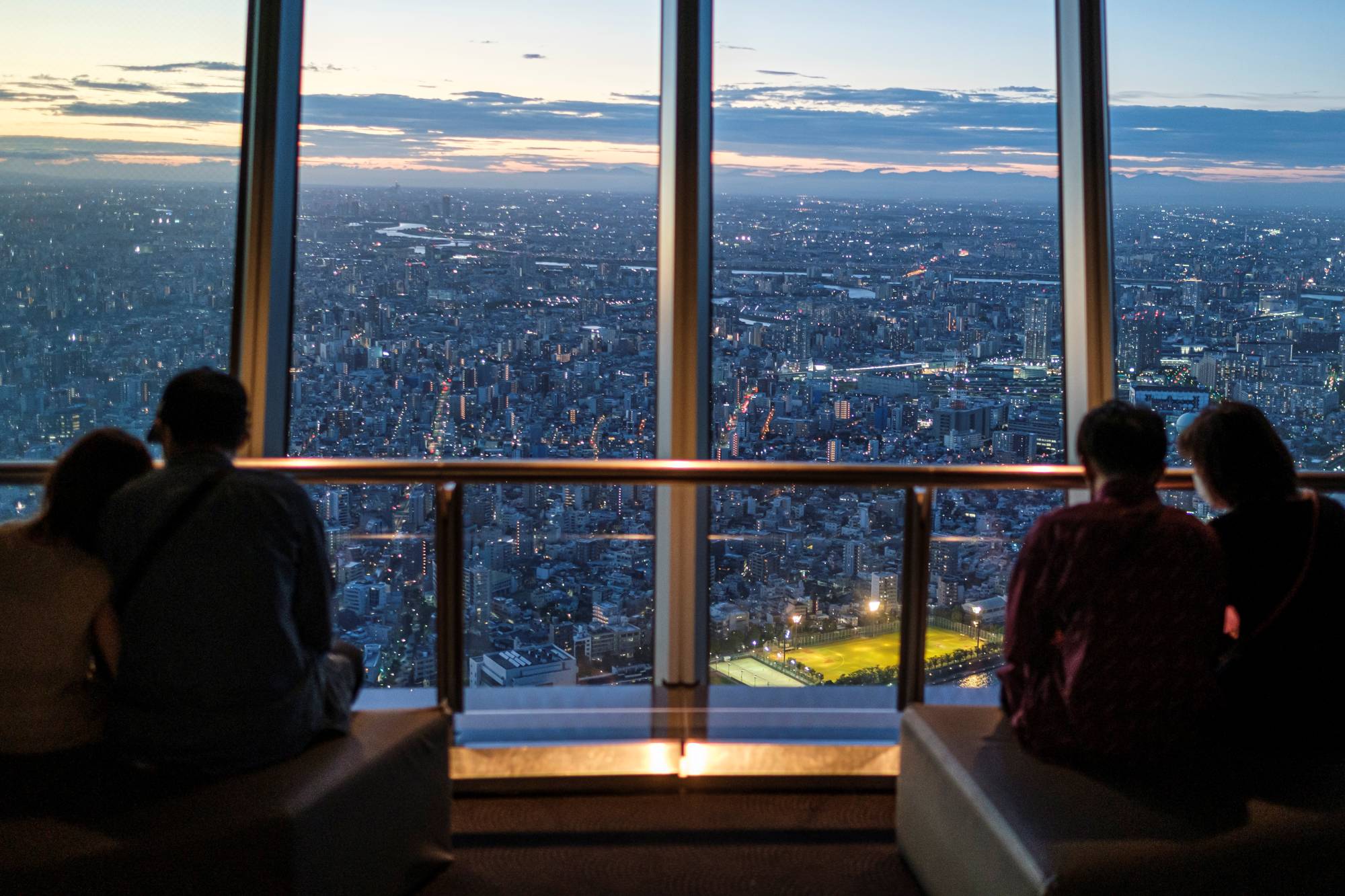
The Tokyo Metropolitan Government will resume a travel subsidy campaign for its residents on Sept. 1, after putting it on hold at the end of July due to a spike in new coronavirus cases.
Reservations should be made through registered travel agents or hotels.
Participants need to produce ID with their Tokyo address and show proof they have either received three shots of a COVID-19 vaccine or tested negative for the coronavirus through a PCR or antigen test.
For more information, visit the Motto Tokyo website or call 03-5484-5881/5882 between 10 a.m. and 7 p.m.
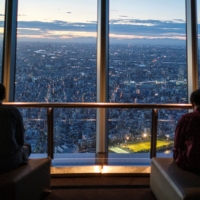
In a time of both misinformation and too much information, quality journalism is more crucial than ever. By subscribing, you can help us get the story right.
When it comes to government planes and political trips, who pays for a president's campaign travel?
In any election year, there’s a fuzzy line between governing and campaigning
WASHINGTON -- It’s no simple matter to move the commander in chief from point A to B, and it’s even more complicated when the president is seeking a second term.
President Joe Biden recently spent three days in Pennsylvania, a pivotal state in the 2024 campaign, and he plans to be in Virginia and Florida this coming week. The Democratic incumbent is seeking an edge over Republican Donald Trump as he ramps up his travels around the country.
Here's a look at how much it costs and who pays the bill during the campaign season.
It's not cheap to fly the president's fleet.
The White House uses Sikorsky helicopters known as Marine One when the president is aboard, as well as custom Boeing 747s that are immediately recognizable as the iconic humpback Air Force One. (Sometimes the president uses a more modest modified 757 if his destination is nearby or if a runway isn't long enough to accommodate the bigger plane.)
Marine One costs between $16,700 and almost $20,000 per hour to operate, according to Pentagon data for the 2022 budget year. Air Force One is even more expensive: roughly $200,000 per hour.
But those figures only scratch the surface of the real cost. There also are military cargo planes that travel ahead of the president to make sure his armored limousines are in place, not to mention the enormous security apparatus that follows the president everywhere.
New aircraft are in the works because the current versions are decades old. Sikorsky is producing 23 updated helicopters to serve as Marine One. Boeing is building two new Air Force One planes, and they are scheduled to be finished by 2028. According to the Pentagon, the planes will come with all enhancements, including “a mission communication system," a “self-defense system” and even “autonomous baggage loading.”
When the president flies for political purposes, the campaign is supposed to pay the bill. But during an election year, the line between governing and campaigning can be fuzzy.
For example, Biden held an official event Wednesday in Pittsburgh, where he announced his proposal for higher tariffs on steel imported from China . The event, however, was a not-so-subtle opportunity for the president to rub shoulders with union members who are critical to his reelection, and he jabbed at Trump in his remarks. (At one point Biden joked that the former president was “busy right now,” a reference to the hush money trial that recently got underway in New York.)
It's up to the White House counsel's office to figure out what percentage of the president's travels are campaign related. That determines how much the federal government should be reimbursed by the Biden campaign. Sometimes the calculations aren't straightforward, such as when the White House adds an official event to an otherwise political trip.
Norm Eisen, a White House ethics lawyer under President Barack Obama , said both Republicans and Democrats have usually hewed closely to regulations.
“We had a set of rules on how to do the allocations," he said. "They’re intricate, and we stuck to them.”
No matter what, taxpayers end up on the hook for most of the cost. Campaigns do not pay for all the Secret Service agents and the rest of the security apparatus. In fact, they usually only cover the cost of Air Force One passengers who are flying for explicitly political purposes — sort of like buying a ticket on a particularly exclusive private jet.
Biden's campaign and his joint fundraising committee have been stockpiling travel cash in an escrow account maintained by the Democratic National Committee. From January 2023 until the end of last month, they deposited nearly $6.5 million.
Some of that money goes to general campaign logistics, such as staff expenses and advance work. The account is also used to reimburse the federal government for official aircraft used to transport the president, the first lady, the vice president and the second gentleman when they travel for the reelection effort.
So far, not much money has found its way back to the U.S. Treasury. As of the latest data available, just $300,000 has been provided.
It's safe to assume that Biden's campaign will end up forking over much more than that once the campaign is over. Trump's team reimbursed the federal government nearly $4.7 million for travel expenses during the 2020 race.
But Biden probably won't have trouble covering his bills. His campaign and the DNC had more than $192 million in cash on hand at the end of March.
AP White House Correspondent Zeke Miller contributed to this report.
Top Stories
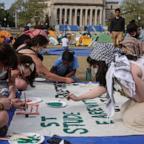
College protests live updates: Columbia tells protesters to leave camp by 2 p.m.
- 38 minutes ago

Mother who went missing on bike ride died by homicide, autopsy shows

Ralph Yarl, teen shot after mistakenly going to the wrong house, files civil lawsuit
- Apr 29, 10:08 AM

Brittney Griner reflects on moment she was detained in Russia in '20/20' special
- Apr 29, 8:32 AM
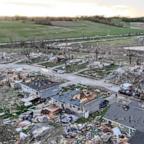
5 killed, including baby, as tornadoes slam the heartland
- Apr 28, 8:47 PM
ABC News Live
24/7 coverage of breaking news and live events
Promises Donald Trump has made so far in his campaign for a second term
Former President Donald Trump, now the presumptive Republican nominee, has made a number of promises on the campaign trail, including rolling back car pollution rules, building 10 new cities and appointing a special prosecutor to investigate President Joe Biden and his family.
While some of Trump’s plans are lacking in detail, here are some of the policies he says he would enact if elected for a second term.
Immigration
Trump has made immigration and the border a central campaign issue, successfully pressuring Republicans to reject a major bipartisan border deal last month and making a trip to the southern border on February 29, where he touted his previous hard-line immigration policies.
In a Des Moines Register op-ed published roughly a week before winning the Iowa caucuses in January, Trump vowed to use the “Alien Enemies Act to remove known or suspected gang members, drug dealers, or cartel members from the United States.”
“We will shift massive portions of federal law enforcement to immigration enforcement — including parts of the DEA, ATF, FBI, and DHS,” he wrote.
In a video posted on Truth Social in late February before his border visit, Trump also promised to “carry out the largest domestic deportation operation in American history.”
We will shift massive portions of federal law enforcement to immigration enforcement — including parts of the DEA, ATF, FBI, and DHS.”
After the Israel-Hamas war began last October, Trump also promised to terminate the visas of “Hamas’ sympathizers.”
“We’ll get them off our college campuses, out of our cities and get them the hell out of our country, if that’s OK with you,” he added.
Drug cartels
The former president has also made waging “war” on drug cartels a priority for his second term. If elected, Trump said in his November 2022 campaign announcement that he would ask Congress to ensure that drug smugglers and human traffickers can receive the death penalty for their “heinous acts.”
Trump also vowed to “take down” drug cartels by imposing naval embargos on cartels, cutting off cartels’ access to global financial systems and using special forces within the Department of Defense to damage the cartels’ leadership.
Trump announced plans in a September 2023 campaign video to close the Department of Education and send “all education and education work and needs back to the states.”
“We want them to run the education of our children, because they’ll do a much better job of it,” he added.
The former president has also promised to “put parents back in charge and give them the final say” in education. In a January 2023 campaign video , the former president said he would give funding preferences and “favorable treatment” to schools that allow parents to elect principals, abolish teacher tenure for K-12 teachers, use merit pay to incentivize quality teaching and cut the number of school administrators, such as those overseeing diversity, equity and inclusion initiatives.
We want them to run the education of our children, because they’ll do a much better job of it.”
Trump also said in that campaign video that he would cut funding for schools that teach critical race theory and gender ideology. In a later speech , Trump said he would bring back the 1776 Commission , which was launched in his previous administration to “teach our values and promote our history and our traditions to our children.”
The former president said he would charge the Department of Justice and the Department of Education with investigating civil rights violations of race-based discrimination in schools while also removing “Marxists” from the Department of Education. A second Trump administration would pursue violations in schools of both the Constitution’s Establishment and Free Exercise clauses, which prohibit the government establishment of religion and protect a citizen’s right to practice their own religion, he said.
Health care
Last November, Trump promised to replace the Affordable Care Act , known colloquially as Obamacare, in a series of posts on Truth Social. A Trump-backed effort to repeal and replace Obamacare failed in 2017 after three Republicans senators joined with Democrats to vote against the bill.
“Getting much better Healthcare than Obamacare for the American people will be a priority of the Trump Administration,” he said .
“It is not a matter of cost, it is a matter of HEALTH. America will have one of the best Healthcare Plans anywhere in the world. Right now it has one of the WORST!,” he continued. He also doubled down on his vow during a speech in early January.
Getting much better Healthcare than Obamacare for the American people will be a priority of the Trump Administration.”
Trump also vowed in a June 2023 campaign video to reinstate his previous executive order so that the US government would pay the same price for pharmaceuticals as other developed countries. Some of the former president’s pharmaceutical policies were overturned by Biden.
Gender care
“I will revoke every Biden policy promoting the chemical castration and sexual mutilation of our youth and ask Congress to send me a bill prohibiting child sexual mutilation in all 50 states,” Trump said at the 2023 Conservative Political Action Conference last March.
Trump added in a campaign video that he would issue an executive order instructing federal agencies to cut programs that promote gender transitions, as well as asking Congress to stop the use of federal dollars to promote and pay for gender-affirming procedures. The former president added that his administration would not allow hospitals and health care providers to meet the federal health and safety standards for Medicaid and Medicare if they provide chemical or physical gender-affirming care to youth.
Justice system
Trump has promised to use the Department of Justice to attack critics and former allies. In several videos and speeches, the former president also laid out plans to gut the current justice system by firing “radical Marxist prosecutors that are destroying America.”
“I will appoint a real special prosecutor to go after the most corrupt president in the history of the United States of America, Joe Biden, and the entire Biden crime family,” Trump said in June 2023 remarks . “I will totally obliterate the Deep State.”
Trump said in a campaign video last year that he would reinstate a 2020 executive order to remove “rogue” bureaucrats and propose a constitutional amendment for term limits on members of Congress.
I will appoint a real special prosecutor to go after the most corrupt president in the history of the United States of America, Joe Biden, and the entire Biden crime family.”
To address what he labeled the “disturbing” relationship between technology platforms and the government, the former president said in a January 2023 video that he would enact a seven-year cooling off period before employees at agencies such as the FBI or CIA can work for platforms that oversee mass user data.
Trump added in multiple campaign releases that he would task the Justice Department with investigating online censorship, ban federal agencies from “colluding” to censor citizens and suspend federal money to universities participating in “censorship-supporting activities.”
In a September 2023 speech at the Family Research Council’s Pray Vote Stand Summit in Washington, DC, Trump also touted plans to continue appointing conservative judges.
“I will once again appoint rock-solid conservative judges to do what they have to do in the mold of Justices Antonin Scalia; Samuel Alito, a great gentleman; and another great gentleman, Clarence Thomas,” he said.
Trump has also pledged to “appoint U.S. Attorneys who will be the polar opposite of the Soros District Attorneys and others that are being appointed throughout the United States.”
In a September 2023 speech in Washington, DC, Trump also announced that he would appoint a task force to review the cases of people he claimed had been “unjustly persecuted by the Biden administration.” Trump noted that he wanted to “study the situation very quickly, and sign their pardons or commutations on day one.”
It’s a move that could lead to potential pardons of many rioters from the January 6, 2021, insurrection – which he suggested he would do at a CNN town hall in May 2023.
* Only promises on judge appointments and congressional term limits are similar to prior campaigns
Trump said in two February 2023 campaign videos that if “Marxist” prosecutors refuse to charge crimes and surrender “our cities to violent criminals,” he “will not hesitate to send in federal law enforcement to restore peace and public safety.”
Trump added that he would instruct the Department of Justice to open civil rights investigations into “radical left” prosecutors’ offices that engaged in racial enforcement of the law, encourage Congress to use their legal authority over Washington, DC, to restore “law and order” and overhaul federal standards of disciplining minors to address rising crimes like carjackings.
Addressing policies made in what Trump calls the “Democrats’ war on police,” the former president vowed in a campaign video that he would pass a “record investment” to hire and retrain police, strengthen protections like qualified immunity, increase penalties for assaulting law enforcement officers and deploy the National Guard when local law enforcement “refuses to act.”
The former president added that he would require law enforcement agencies that receive money from his funding investment or the Department of Justice to use “proven common sense” measures such as stop-and-frisk.
Foreign policy
Trump has continued his attacks against member countries of NATO, a European and North American defense alliance. At a South Carolina rally last month, Trump said he would not abide by the alliance’s collective-defense clause and would encourage Russia to do “whatever the hell they want” if a member country didn’t meet spending guidelines.
“NATO was busted until I came along,” Trump said. “I said, ‘Everybody’s gonna pay.’ They said, ‘Well, if we don’t pay, are you still going to protect us?’ I said, ‘Absolutely not.’ They couldn’t believe the answer.”
The former president has also previously pledged to end the war in Ukraine, though he’s offered no details on how he would do so. “Shortly after I win the presidency, I will have the horrible war between Russia and Ukraine settled,” Trump said at a New Hampshire campaign event last year, adding in another speech that it would take him “no longer than one day” to settle the war if elected.
NATO was busted until I came along. I said, ‘Everybody’s gonna pay.’ They said, ‘Well, if we don’t pay, are you still going to protect us?’ I said, ‘Absolutely not.’”
Trump further addressed his strategy of stopping the “never-ending wars” by vowing to remove “warmongers,” “frauds” and “failures in the senior ranks of our government,” and replace them with national security officials who would defend America’s interests. The former president added in a campaign video that he would stop lobbyists and government contractors from pushing senior military officials toward war.
In addition, Trump has said he would restore his “wonderful” travel ban on individuals from several majority-Muslim countries to “keep radical Islamic terrorists out of our country” after Biden overturned the ban in 2021.
New cities and flying cars
Trump said in multiple campaign videos that he would spearhead an effort to build so-called “Freedom Cities” to “reopen the frontier, reignite American imagination, and give hundreds of thousands of young people and other people, all hardworking families, a new shot at home ownership and in fact, the American Dream.”
In his plan, the federal government would charter 10 new cities on federal land, awarding them to areas with the best development proposals. The former president said in a campaign video that the Freedom Cities would bring the return of US manufacturing, economic opportunity, new industries and affordable living.
In the March 2023 video, Trump added that the US under a second Trump administration would lead in efforts to “develop vertical-takeoff-and-landing vehicles for families and individuals,” not letting China lead “this revolution in air mobility.” The former president said these airborne vehicles would change commerce and bring wealth into rural communities.
Electric vehicles
Trump has promised to roll back new car pollution rules at the Environmental Protection Agency that could require electric vehicles to account for up to two-thirds of new cars sold in the US by 2032. Biden’s electrical vehicle-related policies, Trump claimed at a Michigan rally last September , “spell the death of the US auto industry.”
“On day one, I will terminate Joe Biden’s electrical vehicle mandate, and I will cancel every job-killing regulation that is crushing American autoworkers,” Trump added.
Trump has promised to reduce energy prices by increasing domestic production. In several campaign appearances, he has laid out plans to end delays in federal drilling permits and leases.
“We’re going to ‘drill, baby, drill’ right away,” Trump told a crowd of supporters in Des Moines, Iowa, during a victory speech after winning the state’s Republican caucuses in January.
At a South Carolina rally in February, he pledged to remove limits on American natural gas exports.
At the same rally in South Carolina, Trump pledged to impose “stiff penalties on China and other trade abusers.”
“It’s called you screw us, and we screw you,” Trump said.
Under his proposed “Trump Reciprocal Trade Act,” the former president said if other countries impose tariffs on the US, the country would impose “a reciprocal, identical” tariff right back .
It was the same pledge Trump made in a campaign video in 2023: to impose the same tariffs that other countries may impose on the US on those countries. The goal, the former president said then, is to get other countries to drop their tariffs.
It’s called you screw us, and we screw you.”
As part of a larger strategy to bring jobs back into the US, Trump also said he would implement his so-called “ America First ” trade agenda if elected. By setting universal baseline tariffs on a majority of foreign goods, the former president said Americans would see taxes decrease as tariffs increase. His proposal also includes a four-year plan to phase out all Chinese imports of essential goods , as well as stopping China from buying up America and stopping the investment of US companies in China.
Trump also said in February that he would consider imposing a tariff upward of 60% on all Chinese imports if he’s reelected.
The former president has particularly focused on China, vowing in a January 2023 campaign video to restrict Chinese ownership of US infrastructure such as energy, technology, telecommunications and natural resources. Trump also said he would force the Chinese to sell current holdings that may put national security at risk. “Economic security is national security,” he said.
Trump has promised to extend the cuts from his 2017 Tax Cuts and Jobs Act, notably the TCJA’s individual income tax breaks. The former president has also talked about reducing the corporate tax rate from the current 21% to 15%.
“I will make the Trump tax cuts the largest tax cut in history,” the former president said last month at the Black Conservative Federation’s Honors Gala in South Carolina. “We’ll make it permanent and give you a new economic boom.”
I will make the Trump tax cuts the largest tax cut in history.”
Trump has also pledged to repeal Biden’s tax hikes , “immediately tackle” inflation and end what he called Biden’s “war” on American energy production.
Second Amendment
“I will take Biden’s executive order directing the federal government to target the firearms industry, and I will rip it up and throw it out on day one,” Trump said at the 2023 National Rifle Association Institute for Legislative Action leadership forum last April.
The former president also promised in the speech that the government would not infringe on citizens’ Second Amendment rights and that he would push Congress to pass a concealed carry reciprocity.
“I will create a special team to rapidly review every action taken by federal agencies under Biden’s ‘equity’ agenda that will need to be reversed. We will reverse almost all of them,” Trump said in a campaign video .
Trump added in multiple campaign videos that he would revoke Biden’s equity executive order that required federal agencies to deliver equitable outcomes in policy and conduct equity training. If elected, Trump said he would also fire staffers hired to implement Biden’s policy, and then reinstate his 2020 executive order banning racial and sexual stereotyping in the federal government.
Related links


IMAGES
VIDEO
COMMENTS
As of January 10, 2023, the Nationwide Travel Discount campaign provides residents of Japan with a 20% discount on travel expenses (used to be 35% under Go To Travel) with an upper limit of 5,000 yen for travel plans that contain transport services or 3,000 yen for other plans (used to be 14,000 yen for all plans under Go To Travel).
The Go To Travel Campaign, launched on July 22, 2020, was promptly suspended only months later, on December 28. However, with the lifting of the quasi-state of emergency on March 21, 2022, there are hopes that the campaign will soon return. However, we still have yet to hear an official government announcement as of July 2022. As far as a Go To Travel revival goes, however, rather than put it ...
What is the "Go To Travel" campaign? In April 2020, Japan suffered its most significant drop in foreign tourism. In that particular month, Japan welcomed only 2,900 international travelers, down 99.9% from the same time in 2019. It's the first time since 1964 the monthly number of guests had dipped below 10,000.
Coupons. - ¥3,000 (weekdays) - ¥1,000 (weekends) At the moment, what we expect for the new Go To Travel campaign is as follows; More discounts may be applied on weekdays than on weekends. It'll be required the vaccination certificate or certificate of the negative test result to apply for the campaign.
The Japan Go-To Travel Campaign began on July 22nd, 2020, and offers Japanese citizens and international residents discounts and subsidies of up to 50% on travel within Japan. Discounts are given in the form of subsidised lodging and 'common coupons,' which can be used at participating retailers, restaurants, and other locations. ...
Wednesday 16 December 2020. [Update, December 12] The Go to Travel campaign has been suspended in Tokyo from Friday December 18, and nationwide over the New Year holidays from December 28 until ...
The Go To Travel campaign is a Japanese government subsidy encouraging domestic travel to help boost the economy. It also aims to bring business back to local tourism and hospitality operators, many of whom were forced to close during the coronavirus state of emergency. The discount ONLY applies to domestic trips and can be claimed up to a set ...
Oct 18, 2020. Kyoto -. Starting on Oct. 1, the government re-included Tokyo in its Go To Travel campaign, a program subsidizing domestic travel that aims to encourage spending and boost an ...
In the Go To Travel campaign, the government subsidizes a part of individual vacationers' travel costs. ... Groups in southwest Japan raising money to mark 110th anniv. of ex-bank building ...
Nov 11, 2021. Japan's Go To Travel domestic tourism subsidy program may resume in February after being suspended since late last year amid a resurgence in COVID-19 cases, with the campaign to ...
The Go to Travel Campaign will support people traveling domestically in Japan. It does not offer any subsidies for those coming internationally—and indeed, Japan's sweeping travel ban for non-Japanese citizens overseas still remains in place. Via the campaign, travel costs will be supported for half the cost of accommodation (up to 20,000 ...
October 13 2022: Japan's new 'National Discount Program' is now underway, replacing the long-standing but long-suspending 'Go To Travel' campaign.The new campaign is nationally funded but locally administered, resulting in some early confusion with exactly how it works. Since activation of the program on October 11, many hotels in Japan are reporting online issues as websites and ...
The "Go To Travel" Campaign aims to subsidize up to 50% of travel expenses (upper limit: 20,000 yen per person per night / 10,000 yen per day trip) including accommodation and transport fees. The Japanese government provides discounts of 35% of the total costs and the remaining 15 % is covered by regional coupons which will be issued from ...
Go To Travel Campaign Japan: How to Apply. This is where it can get a little confusing. First, you must use an accommodation/ travel agency/ booking agent that is a participant in the program. This isn't difficult- there are a large number of travel agencies all over Japan participating, especially in Tokyo. 50% off your travel costs.
Dec 17, 2021. The Japanese government will reportedly resume its Go To Travel domestic travel campaign to try to help a tourism industry struggling in the wake of the COVID-19 pandemic. While ...
Electric coupon. There are ¥1,000, ¥2,000 and ¥5,000 coupons. There will be the website to get the coupon (you don't need to download the app but can access with the browsers), and login with travel agency's ID, booking number and your destination. These information will come with an email on the first day of your trip.
2. "Go To Travel Campaign". In this campaign, you will be subsidized by the government if you make a reservation through the travel agencies or travel reservation sites. Subsidies are equivalent to half of the price of your reserved travel plan capped at 20,000 yen per night. For 1-day trip, the amount is capped at 10,000 yen.
Let's travel to Japan now! Campaign stay period: accommodation from July 22th 2020 (Wed) to January 31th 2021 (Sun) How the campaign works A government grant will cover up to half of the domestic travel price, for transportation, hotels, restaurants, landmarks, and shopping costs. Residents in Tokyo are currently excluded from the campaign From July […]
The suspension of Japan's "Go To Travel" campaign comes as a bolt from the blue for the country's beleaguered tourism sector, which has already been reeling from the loss of revenue due to ...
In 2020, the Japanese government implemented first of two Go To Travel campaigns to promote the tourism sector as well as eating and drinking establishments, especially in remote areas. The present study aimed to explore the relationship between enhanced travel and geographic propagation of COVID-19 across Japan, focusing on the second campaign with nationwide large-scale economic boost in 2020.
The official site of Japan National Tourism Organization is your ultimate Japan guide with tourist information for Tokyo, Kyoto, Osaka, Hiroshima, Hokkaido and other top Japan holiday destinations. We offer travel information to make your Japan travel more comfortable and enjoyable.
For residents of Japan. Enjoy a special travel discount up to 14,000 JPY per person for stay at Nishimuraya Honkan or Nishimuraya Hotel Shogetsutei, and up to 6,000 JPY in vouchers for use in Kinosaki Onsen. Limited time only! ... The Alll Japan Wide Campaign can be applied on a per-guest basis. Meaning, if the guest is travelling with others ...
Notice of Proposal Competition - FY2024 Advertising Campaign with Tour Operators or Travel Agencies for the Canadian Market April 29, 2024 JNTO - Japan National Tourism Organization
A visit to the busy streets of Tokyo or the tranquil slower pace of Kyoto necessitates staying connected for an optimal and stress-free experience in Japan. With an eSim or Pocket Wifi, you'll be able to stay in the loop and navigate easily with information at your fingertips, enhancing your overall travel experience.You also won't worry about language barriers much because you'll be able to ...
Travel Adapter: Japan uses the US plug, but without the grounding hole (just 2 pin). Travel Backpack: You will be happy to have a lightweight travel backpack Phone Cord: A crossbody lanyard is ...
The Tokyo Metropolitan Government will resume a travel subsidy campaign for its residents on Sept. 1, after putting it on hold at the end of July due to a spike in new coronavirus cases. The ...
It's safe to assume that Biden's campaign will end up forking over much more than that once the campaign is over. Trump's team reimbursed the federal government nearly $4.7 million for travel ...
Trump announced plans in a September 2023 campaign video to close the Department of Education and send "all education and education work and needs back to the states." "We want them to run ...
On fundraising, the Biden campaign has a clear advantage, with more than $192 million in cash on hand at the start of March, compared with the $93 million the Trump campaign and Republican ...
The ad portrays a woman trying to leave the state to have an abortion. The Campaign for Democracy, a political action committee started by Mr. Newsom, the California governor, created it.